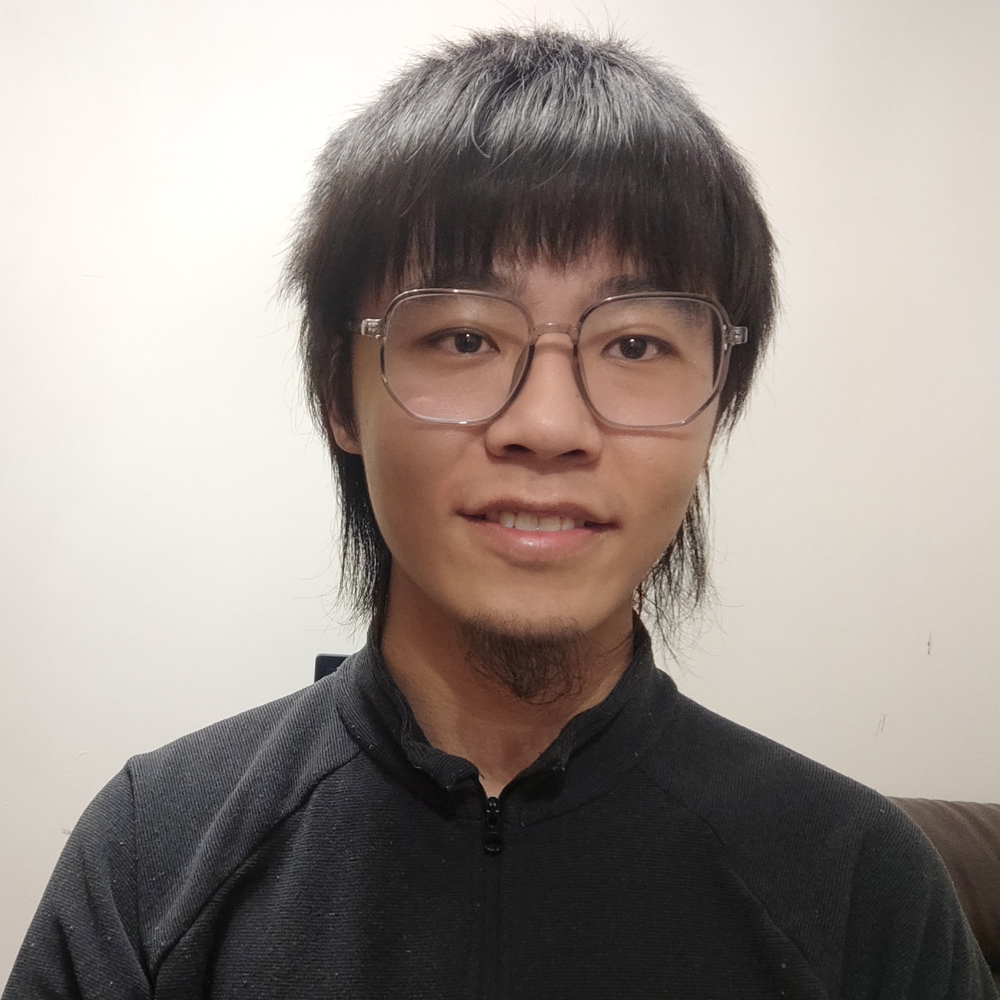
Students
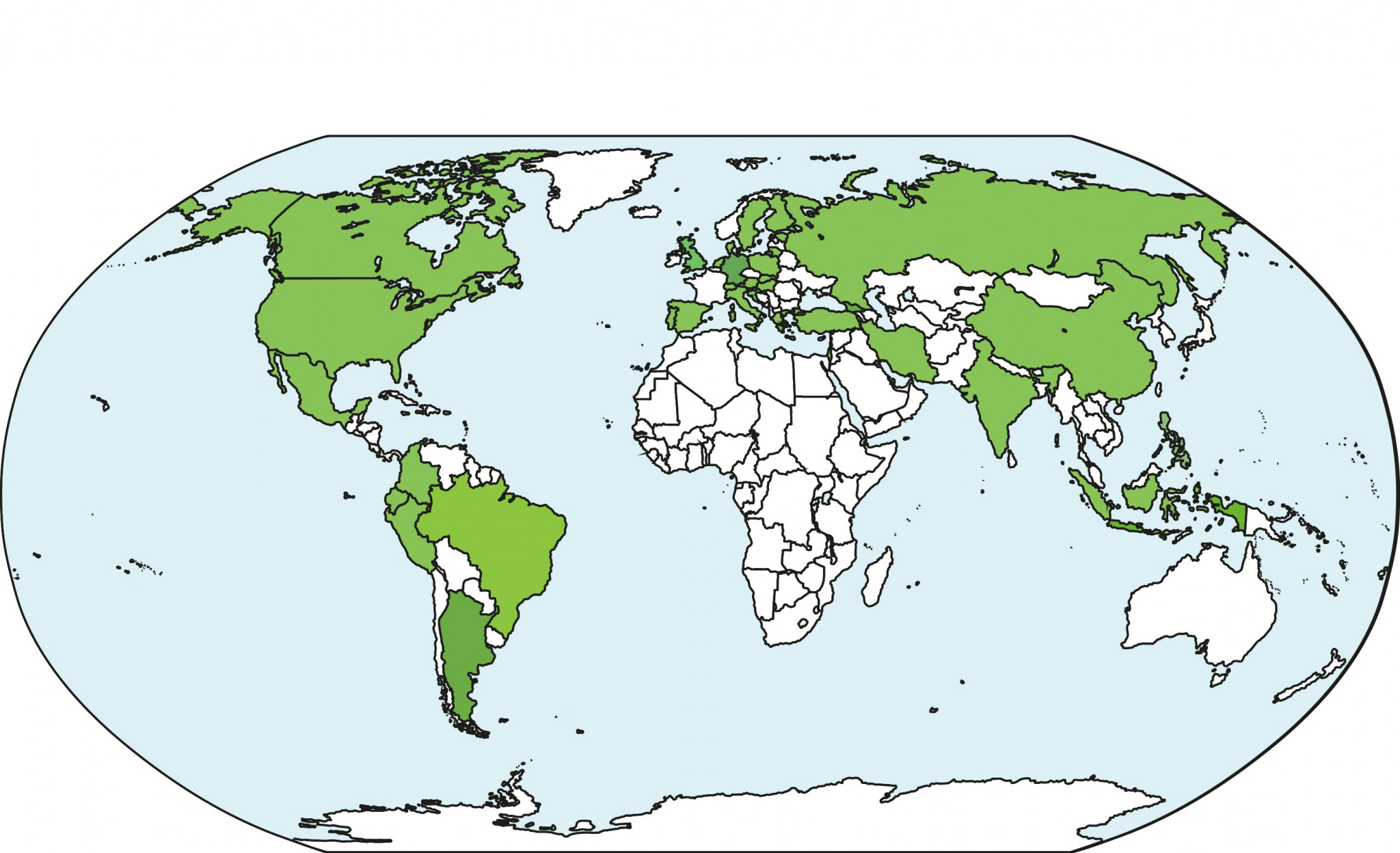
QBM currently (Apr 2023) has 143 graduate students including 103 alumni. Roughly half of the students are experimentalists (biology, biochemistry, medical science) and the other half are theoreticians (math, physics, bioinformatics). More than 50% of our students have an international background, men and women are equally represented.
 Wasim Aftab (Alumnus)
Wasim Aftab (Alumnus)

Wasim Aftab (Alumnus)
| Class of 2015
Country of origin: India
MSc: Computer Engineering, King Abdulaziz University Jeddah, Saudi Arabia
PI: Axel Imhof, Medical Faculty, LMU Munich
CoPI: Ralf Zimmer, Faculty of Mathematics, Informatics and Statistics, LMU Munich
Project: Computational methods for exploratory analysis of proteomics data
2022
W Aftab, S Lahiri, A Imhof: An open-source software for probabilistic identification of proteins in situ and visualization of proteomics data, MCPRO 100242
View publication2021
A. Lukacs, A. W. Thomae, P. Krueger, T. Schauer, A. V. Venkatasubramani, N. Y. Kochanova, W. Aftab, R. Choudhury, I. Forne & A. Imhof: The Integrity of the HMR complex is necessary for centromeric binding and reproductive isolation in Drosophila, https://doi.org/10.1371/journal.pgen.1009744
View publicationLahiri S, Aftab W, Walenta L, Strauss L, Poutanen M, Mayerhofer A, Imhof A.; Life Sci Alliance. 2021 Jan 6;4(3):e202000672. doi: 10.26508/lsa.202000672. Print 2021 Mar. PMID: 33408244; MALDI-IMS combined with shotgun proteomics identify and localize new factors in male infertility.
View publicationLahiri S, Aftab W, Walenta L, Strauss L, Poutanen M, Mayerhofer A, Imhof A. Life Sci Alliance. 2021 Jan 21;4(3):e202101015. doi: 10.26508/lsa.202101015. Print 2021 Mar. PMID: 33479050; Correction: MALDI-IMS combined with shotgun proteomics identify and localize new factors in male infertility.
View publicationAftab W, Imhof A.; Adv Exp Med Biol. 2021;1336:105-128. doi: 10.1007/978-3-030-77252-9_6. PMID: 34628629; Discovery of Native Protein Complexes by Liquid Chromatography Followed by Quantitative Mass Spectrometry
View publicationHayn M, Hirschenberger M, Koepke L, Nchioua R, Straub JH, Klute S, Hunszinger V, Zech F, Prelli Bozzo C, Aftab W, Christensen MH, Conzelmann C, Müller JA, Srinivasachar Badarinarayan S, Stürzel CM, Forne I, Stenger S, Conzelmann KK, Münch J, Schmidt FI, Sauter D, Imhof A, Kirchhoff F, Sparrer KMJ.; Cell Rep. 2021 May 18;35(7):109126. doi: 10.1016/j.celrep.2021.109126. Epub 2021 Apr 27. PMID: 33974846; Systematic functional analysis of SARS-CoV-2 proteins uncovers viral innate immune antagonists and remaining vulnerabilities
View publication2020
Singh AP, Salvatori R, Aftab W, Aufschnaiter A, Carlström A, Forne I, Imhof A, Ott M.; Mol Cell. 2020 Sep 17;79(6):1051-1065.e10. doi: 10.1016/j.molcel.2020.07.024. Epub 2020 Sep 1. PMID: 32877643; Molecular Connectivity of Mitochondrial Gene Expression and OXPHOS Biogenesis
View publicationSalvatori R, Kehrein K, Singh AP, Aftab W, Möller-Hergt BV, Forne I, Imhof A, Ott; M. Mol Cell. 2020 Feb 20;77(4):887-900.e5. doi: 10.1016/j.molcel.2019.11.019. Epub 2019 Dec 26. PMID: 31883951; Molecular Wiring of a Mitochondrial Translational Feedback Loop
View publicationSalvatori R, Aftab W, Forne I, Imhof A, Ott M, Singh AP. STAR Protoc. 2020 Dec 15;1(3):100219. doi: 10.1016/j.xpro.2020.100219. eCollection 2020 Dec 18. PMID: 33377112; Mapping protein networks in yeast mitochondria using proximity-dependent biotin identification coupled to proteomics
View publicationBasch M, Wagner M, Rolland S, Carbonell A, Zeng R, Khosravi S, Schmidt A, Aftab W, Imhof A, Wagener J, Conradt B, Wagener N.; Mol Biol Cell. 2020 Apr 1;31(8):753-767. doi: 10.1091/mbc.E19-06-0329. Epub 2020 Feb 12. PMID: 32049577; Msp1 cooperates with the proteasome for extraction of arrested mitochondrial import intermediates
View publication Shyam Alagarsamy (until 2020)
Shyam Alagarsamy (until 2020)
Shyam Alagarsamy (until 2020)
| Class of 2020
Country of origin: India
MSc: Molecular Medicine, Univeristy of Goettingen, Germany
Lucas Jae
 Christian Albig (Alumnus)
Christian Albig (Alumnus)
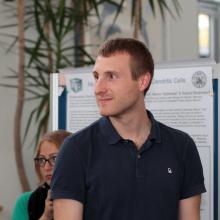
Christian Albig (Alumnus)
| Class of 2013
Country of origin: Germany
MSc: Biochemistry, LMU Munich, Germany
PI: Peter Becker, Medical Faculty, LMU Munich
CoPI: Fabian Theis, Helmholtz Center Munich, TU Munich
Project: Quantitative Analysis of the Dosage Compensation Systems in Drosophila melanogaster.
The major goal of my PhD thesis project is the mechanistic and quantitative analysis of the Dosage Compensation process in Drosophila melanogaster, which involves a global doubling of transcription from the single X chromosome in males. The regulatory Dosage Compensation Complex (DCC) is primarily attracted to a few hundred GA-rich High Affinity Sites on the X chromosome. I explore how the zinc finger protein CLAMP that binds thousands of GAGA-sequences genome-wide cooperates to enable specific targeting of the DCC.
2019
Albig C, Tikhonova E, Krause S, Maksimenko O, Regnard C, Becker PB, Factor cooperation for chromosome discrimination in Drosophila, Nucleic Acids Res. 2019 Feb 28;47(4):1706-1724. doi: 10.1093/nar/gky1238.
View publication2017
Schauer, T., Ghavi-Helm, Y., Sexton, T., Albig, C., Regnard, C., Cavalli, G., Furlong, E.E.M., and Becker, P.B. (2017). The Drosophila Dosage Compensation Complex activates target genes by chromosome looping within the active compartment. bioRxiv.
View publicationSchauer, T., Ghavi‐Helm, Y., Sexton, T., Albig, C., Regnard, C., Cavalli, G., Furlong, E.E., and Becker, P.B. (2017). Chromosome topology guides the Drosophila Dosage Compensation Complex for target gene activation. EMBO reports 18, 1854-1868.
View publication Michael Ameismeier (Class '16 Rep., Alumnus)
Michael Ameismeier (Class '16 Rep., Alumnus)
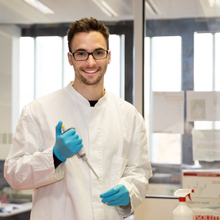
Michael Ameismeier (Class '16 Rep., Alumnus)
| Class of 2016
Country of origin: Germany
MSc: Biochemistry, LMU Munich, Germany
PI: Roland Beckmann, Gene Center Munich, Dept. of Biochemistry, LMU
2021
Kratzat H, Mackens-Kiani T, Ameismeier M, Potocnjak M, Cheng J, Dacheux E, Namane A, Berninghausen O, Herzog F, Fromont-Racine M, Becker T, Beckmann R: A structural inventory of native ribosomal ABCE1-43S pre-initiation complexes; EMBO J. 2021 Jan 4;40(1):e105179. doi: 10.15252/embj.2020105179. Epub 2020 Dec 8. PMID: 33289941; PMCID: PMC7780240.
View publication2020
Thoms, M., Buschauer, R., Ameismeier, M., Koepke, L., Denk, T., Hirschenberger, M., Kratzat, H., Hayn, M., Mackens-Kiani, T., Cheng, J., et al. (2020); Structural basis for translational shutdown and immune evasion by the Nsp1 protein of SARS-CoV-2. Science 369, 1249-1255.
View publicationCheng, J., Lau, B., La Venuta, G., Ameismeier, M., Berninghausen, O., Hurt, E., and Beckmann, R. (2020). 90S pre-ribosome transformation into the primordial 40S subunit, Science 369, 1470-1476.
View publication2018
Ameismeier, M, Cheng, J, Berninghausen, O, and Beckmann, R, (2018); Visualizing late states of human 40S ribosomal subunit maturation. Nature 558, 49-253.
View publicationAmeismeier, M., Zemp, I., van den Heuvel, J., Berninghausen, O., Kutay, U., and Beckmann, R. (2020). Structural basis for the final steps of human 40S ribosome maturation. Nature
View publication Constantin Ammar (Alumnus)
Constantin Ammar (Alumnus)
Constantin Ammar (Alumnus)
| Class of 2016
Country of origin: Germany
MSc: Physics, LMU Munich, Germany
PI: Ralf Zimmer, Faculty of Mathematics, Informatics and Statistics, LMU
2021
A-D Brunner, M Thielert, C G Vasilopoulou, C Ammar, F Coscia, A Mund, O B Hoerning, N Bache, A Apalategui, M Lubeck, S Richter, D S Fischer, O Raether, M A Park, F Meier, F J Theis, M Mann: Ultra-high sensitivity mass spectrometry quantifies single-cell proteome changes upon perturbation; BioRxiv, 2020.12. 22.423933
View publicationM T Strauss, I Bludau, W-F Zeng, E Voytik, C Ammar, J Schessner, R Ilango, M Gill, F Meier, S Willems, M Mann: AlphaPept, a modern and open framework for MS-based proteomics; doi: https://doi.org/10.1101/2021.07.23.453379
View publicationS J Schink, M Polk, E Athaide, A Mukherjee, C Ammar, X Liu, S Oh, Y-F Chang, M Basan: The energy requirements of ion homeostasis determine the lifespan of starving bacteria; doi: https://doi.org/10.1101/2021.11.22.469587
View publication2020
G Csaba, E Berchtold, A Hadziahmetovic, M Gruber, C Ammar, R Zimmer: Empires: Differential analysis of gene expression and alternative splicing; doi: https://doi.org/10.1101/2020.08.23.234237
View publicationC Ammar: Context-based analysis of mass spectrometry proteomics data; PhD Thesis, LMU Munich
View publication2019
S J Schink, E Biselli, C Ammar, U Gerland: Death rate of E. coli during starvation is set by maintenance cost and biomass recycling; Cell Systems, 9, ue 1, 2019, 64-73.e3, ISSN 2405-4712
View publicationC Ammar, M Gruber, G Csaba, R Zimmer: MS-EmpiRe Utilizes Peptide-level Noise Distributions for Ultra-sensitive Detection of Differentially Expressed Proteins [S]; Technological Innovation and Resources, Volume 18, ISSUE 9, P1880-1892, September 01, 2019
View publicationC Ammar, E Berchtold, G Csaba, A Schmidt, A Imhof, R Zimmer: Multi-reference spectral library yields almost complete coverage of heterogeneous LC-MS/MS data sets; J. Proteome Res. 2019, 18, 4, 1553–1566
View publication2018
S J Schink, E Biselli, C Ammar, U Gerland: Maintenance Cost and Biomass Recycling Determine Fitness of E. Coli During Starvation; September 26, 2018, SSRN: https://ssrn.com/abstract=3255561
View publication2017
Ammar, C., Berchtold, E., Csaba, G., Schmidt, A., Imhof, A., and Zimmer, R. (2017). Multi-reference spectral library yields almost complete coverage of heterogeneous LC-MS/MS data sets. bioRxiv, 180448.
View publication2014
C Ammar, K Frey, J Bauer, C Melzig, S Chiblak, M Hildebrandt, D Unholtz, C Kurz, S Brons, J Debus, A Abdollahi, K Parodi: Comparing the biological washout of β+-activity induced in mice brain after 12C-ion and proton irradiation; Phys. Med. Biol. 59 7229
View publication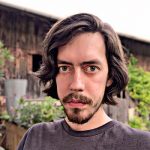 Severin Angerpointner
Severin Angerpointner
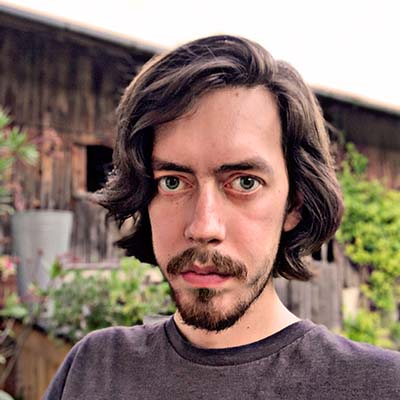
Severin Angerpointner
| Class of 2021
Country of origin: Germany
MSc: Theoretical and Mathematical Physics, LMU & TU Munich, Germany
PI: Erwin Frey, Statistical and Biological Physics, Dept. of Physics, LMU
2022
A V Dass, S Wunnava, et al., F Gartner, S Angerpointner, E Frey, D Braun: RNA Oligomerisation without Added Catalyst from 2 ′ ,3 ′ ‑Cyclic Nucleotides by Drying at Air‑Water Interfaces; ChemSystemsChem e202200026 (2022)
View publication Ashretha Latha Ashok Kumar (Alumna)
Ashretha Latha Ashok Kumar (Alumna)
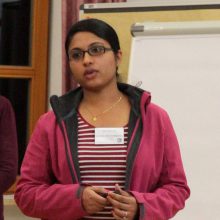
Ashretha Latha Ashok Kumar (Alumna)
| Class of 2013
Country of origin: India
MSc: Biotechnology, Anna University Chennai, India
PI: Thomas Brocker, Medical Faculty, LMU Munich
CoPI: Axel Imhof, Medical Faculty, LMU Munich
Project: Identification of novel SLE susceptibility factors
Our aim is the identification of novel factors involved in the development of autoimmunity by using a combination of proteomic and immunological approaches. We have successfully identified factors which could contribute to the disease development and pathogenesis. Further, we are investigating the underlying mechanisms of how these factors contribute to disease and are also developing novel therapeutic strategies.
2020
J. Kranich, N.-K. Chlis, L. Rausch, A. Latha, M. Schifferer, T. Kurz, A. Foltyn-Arfa Kia, M. Simons, F. J. Theis & Th. Brocker; In vivo identification of apoptotic and extracellular vesicle-bound live cells using image-based deep learning; Journal of Extracellular Vesicles Volume 9, 2020 – Issue 1, Article: 1792683
View publication Alexander Auer (Alumnus)
Alexander Auer (Alumnus)
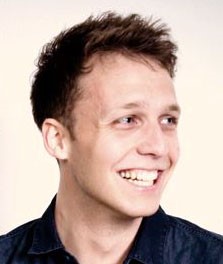
Alexander Auer (Alumnus)
| Class of 2016
Country of origin: Austria
MSc: Physics, LMU Munich, Germany
PI: Ralf Jungmann, Max Planck Institute of Biochemistry, Martinsried
2020
A Auer, M T Strauss, S Strauss, R Jungmann; nanoTRON: a Picasso module for MLP-based classification of super-resolution data; btaa154, https://doi.org/10.1093/bioinformatics/btaa154
View publication2019
F Schueder, J Stein, F Stehr, A Auer, B Sperl, M T. Strauss, P Schwille & R Jungmann, An order of magnitude faster DNA-PAINT imaging by optimized sequence design and buffer conditions, Nature Methods, Oct 7th
View publicationSchlichthaerle T, Strauss MT, Schueder F, Auer A, Nijmeijer B, Kueblbeck M, Jimenez Sabinina V, Thevathasan JV, Ries J, Ellenberg J, Jungmann R; Angew Chem Int Ed Engl 58: 13004-13008 (2019); Direct Visualization of Single Nuclear Pore Complex Proteins Using Genetically-Encoded Probes for DNA-PAINT.
View publication2018
N. S. Deußner-Helfmann, A. Auer, M. T. Strauss, S. Malkusch, M. S. Dietz, H-D Barth, R. Jungmann, M. Heilemann, Nano letters, 18, 7, 4626-4630
View publicationSchlichthaerle T, Ganji M, Auer A, Wade O K, Jungmann R; Chembiochem (2018); Bacterial-derived antibody binders as small adapters for DNA-PAINT microscopy.
View publicationAuer A, Schlichthaerle T, Woehrstein J B, Schueder F, Strauss M T, Grabmayr H, Jungmann R; Chemphyschem 19: 3024-3034 (2018); Nanometer-scale Multiplexed Super-Resolution Imaging with an Economic 3D-DNA-PAINT Microscope.
View publication2017
Auer A, Strauss M T, Schlichthaerle T, Jungmann R ; Nano Lett 17: 6428-6434 (2017); Fast, Background-Free DNA-PAINT Imaging Using FRET-Based Probes.
View publication Žiga Avsec (Alumnus)
Žiga Avsec (Alumnus)

Žiga Avsec (Alumnus)
| Class of 2015
Country of origin: Slovenia
MSc: Biophysics, LMU Munich, Germany
PI: Julien Gagneur, Faculty of Informatics, TU Munich
Project: Systems genetics approaches for rare genetic disorders.
2019
G. Eraslan, Ž. Avsec, J. Gagneur, F. J. Theis, Deep learning: new computational modelling techniques for genomics, Nature Reviews Genetics, 20, 389–403 (2019)
View publicationŽ. Avsec, R. Kreuzhuber, J. Israeli, N. Xu, J. Cheng, A. Shrikumar, A. Banerjee, D. S Kim, T. Beier, L. Urban, A. Kundaje, O. Stegle, J. Gagneur, The Kipoi repository accelerates community exchange and reuse of predictive models for genomics, Nature biotechnology, 2019, PMID: 31138913
View publicationJ. Cheng, M. H. Çelik, Y. D. Nguyen, Ž. Avsec, J. Gagneur, CAGI5 splicing challenge: Improved exon skipping and intron retention predictions with MMSplice, Human Mutation, 2019, PMID: 31070280
View publicationJ. Cheng, T. Y. D. Nguyen, K. J. Cygan, M. H. Celik, W. Fairbrother, Ž. Avsec, J. Gagneur, MMSplice: modular modeling improves the predictions of genetic variant effects on splicing, Genome Biol. 2019, PMID: 30823901
View publication2018
F. Brechtmann, A. Matuseviciute, Ch. Mertes, V. A. Yepez, Z. Avsec, M. Herzog, D. M. Bader, H. Prokisch, J. Gagneur, OUTRIDER: A statistical method for detecting aberrantly expressed genes in RNA sequencing data, AJHG, 2018, PMID: 30503520
View publication2017
Avsec, Z., Barekatain, M., Cheng, J., Gagneur, J. (2017). Modeling positional effects of regulatory sequences with spline transformations increases prediction accuracy of deep neural networks. Bioinformatics doi.10.1093/bioinformatics/btx727
View publicationCheng, J., Maier, K.C., Avsec, Z., Rus, P., and Gagneur, J. (2017). Cis-regulatory elements explain most of the mRNA stability variation across genes in yeast. Rna 23, 1648-1659.
View publicationAit-El-Mkadem, S., Dayem-Quere, M., Gusic, M., Chaussenot, A., Bannwarth, S., François, B., Genin, E.C., Fragaki, K., Volker-Touw, C.L.M., Vasnier, C., et al. Mutations in MDH2, Encoding a Krebs Cycle Enzyme, Cause Early-Onset Severe Encephalopathy. The American Journal of Human Genetics 100, 151-159.
View publication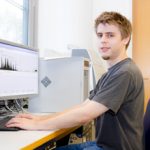 Mattias Backman (until Oct 2019)
Mattias Backman (until Oct 2019)
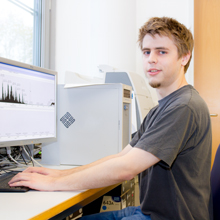
Mattias Backman (until Oct 2019)
| Class of 2015
Country of origin: Sweden
MSc: Molecular Biology, University of Gothenburg, Sweden
PI: Eckhard Wolf, Gene Center Munich, Dept. of Biochemistry, LMU
2019
Renner S, Martins AS, Streckel E, Braun-Reichhart C, Backman M, Prehn C, Klymiuk N, Bähr A, Blutke A, Landbrecht-Schessl C, Wünsch A, Kessler B, Kurome M, Hinrichs A, Koopmans SJ, Krebs S, Kemter E, Rathkolb B, Nagashima H, Blum H, Ritzmann M, Wanke R, Aigner B, Adamski J, Hrabě de Angelis M, Wolf E; Mild maternal hyperglycemia in INS C93S transgenic pigs causes impaired glucose tolerance and metabolic alterations in neonatal offspring; Dis Model Mech.
View publication2017
Blutke, A., Renner, S., Flenkenthaler, F., Backman, M., Haesner, S., Kemter, E., Landstrom, E., Braun-Reichhart, C., Albl, B., Streckel, E., et al. (2017). The Munich MIDY Pig Biobank – A unique resource for studying organ crosstalk in diabetes. Mol Metab 6, 931-940.
View publication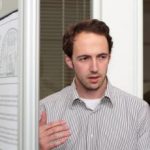 Daniel Bader (Alumnus)
Daniel Bader (Alumnus)
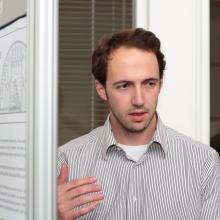
Daniel Bader (Alumnus)
| Class of 2013
Country of origin: Germany
MSc: Bioinformatics, LMU and TU Munich, Germany
PI: Julien Gagneur, Gene Center Munich, Dept. of Biochemistry, LMU
CoPI: Christoph Klein, Medical Faculty, LMU Munich
Project: Inferring causal mutations and pathways in patient-derived multi-layer omics data
I work on the genetic diagnosis of Mendelian disorders using a multi-omics approach. Our group together with our collaborators measured and analyzed whole exome, whole gnome and RNA sequencing as well as label-free mass-spectrometry proteomics data. With that work, I would like to contribute to the long-promised personalized medicine goal.
2018
F. Brechtmann, A. Matuseviciute, Ch. Mertes, V. A. Yepez, Z. Avsec, M. Herzog, D. M. Bader, H. Prokisch, J. Gagneur, OUTRIDER: A statistical method for detecting aberrantly expressed genes in RNA sequencing data, AJHG, 2018, PMID: 30503520
View publication2017
Kremer, L.S., Bader, D.M., Mertes, C., Kopajtich, R., Pichler, G., Iuso, A., Haack, T.B., Graf, E., Schwarzmayr, T., Terrile, C., et al. (2017). Genetic diagnosis of Mendelian disorders via RNA sequencing. Nat Commun 8, 15824.
View publication2015
Bader, D.M., Wilkening, S., Lin, G., Tekkedil, M.M., Dietrich, K., Steinmetz, L.M., and Gagneur, J. (2015). Negative feedback buffers effects of regulatory variants. Molecular systems biology 11, 785.
View publicationHaack, T.B., Staufner, C., Kopke, M.G., Straub, B.K., Kolker, S., Thiel, C., Freisinger, P., Baric, I., McKiernan, P.J., Dikow, N., Harting, I., Beisse, F., Burgard, P., Kotzaeridou, U., Kühr, J., Himbert, U., Taylor, R.W., Distelmaier, F., Vockley, J., Ghaloul-Gonzalez, L., Zschocke, J., Kremer, L.S., Graf, E., Schwarzmayr, T., Bader, D.M., Gagneur, J., et al. (2015). Biallelic Mutations in NBAS Cause Recurrent Acute Liver Failure with Onset in Infancy. American journal of human genetics 97, 163-169.
View publicationArloth, J., Bader, D.M., Röh, S., and Altmann, A. (2015). Re-Annotator: Annotation Pipeline for Microarray Probe Sequences. PloS one 10, e0139516.
View publication Ivan Bagaric
Ivan Bagaric
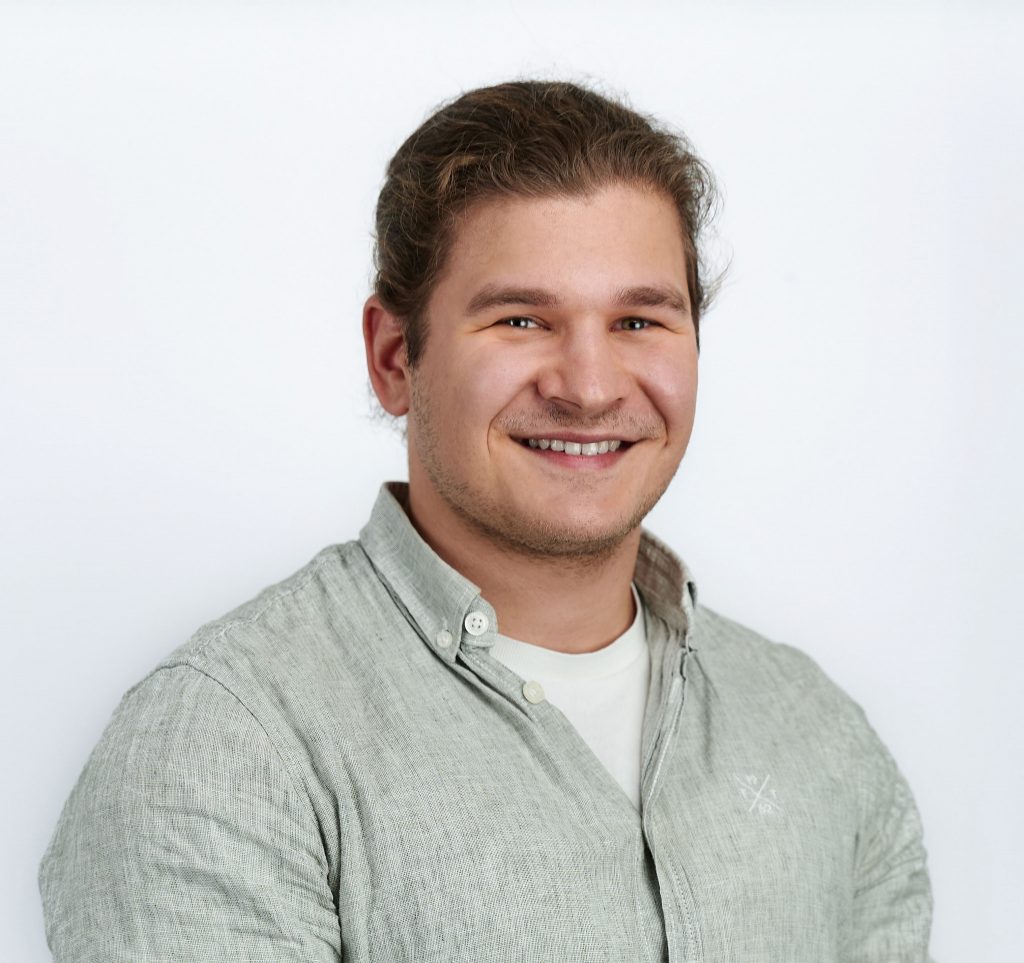
Ivan Bagaric
| Class of 2025
Country of origin: Croatia
MSc: Molecular Biosciences, University of Heidelberg, Germany
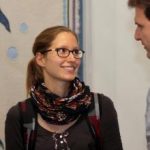 Silke Bergeler (Alumna)
Silke Bergeler (Alumna)

Silke Bergeler (Alumna)
| Class of 2013
Country of origin: Germany
MSc: Mathematics, University of Cambridge, UK
PI: Erwin Frey, Faculty of Physics, LMU Munich
CoPI: Ulrike Gaul, Gene Center Munich, Dept. of Biochemistry, LMU
Project: Pattern Formation in Early Embryonic Development & Modeling Midcell Positioning in Bacteria
I am currently working on two topics from different areas. Together with Ulrike Gaul’s lab we investigate by which regulatory mechanisms the steroid hormone ecdysone leads to the observed changes in gene expression in Drosophila S2 cells. The other topic deals with the question how the cell division site in M. Xanthus is positioned precisely at midcell. This work is in cooperation with Lotte Søgaard-Andersen’s microbiology lab at the MPI in Marburg and we are developing a computational model based on their experimental findings to get insight into the mechanism of midcell positioning.
2019
M. Kober, S. Bergeler, E. Frey, Can a flux-based mechanism explain positioning of protein clusters in three-dimensional cell geometry? Biophysical Journal 117 (3), 420-428 (2019).
View publication2018
Bergeler, S., and Frey, E. (2018). Regulation of Pom cluster dynamics in Myxococcus xanthus, PLoS Comput Biol 14 (8), e1006358 (2018).
View publication2017
Schumacher, D., Bergeler, S., Harms, A., Vonck, J., Huneke-Vogt, S., Frey, E., and Søgaard-Andersen, L. (2017). The PomXYZ Proteins Self-Organize on the Bacterial Nucleoid to Stimulate Cell Division. Developmental Cell 41, 299-314. e213.
View publication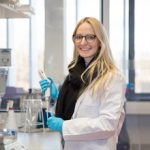 Ricarda Berger (Alumna)
Ricarda Berger (Alumna)
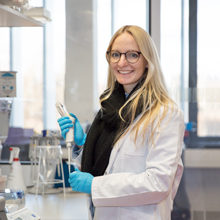
Ricarda Berger (Alumna)
| Class of 2016
Country of origin: Germany
MSc: Physics, LMU Munich, Germany
PI: Joachim Rädler, Faculty of Physics, LMU Munich, Germany
2020
A Sandoval-Pérez, R M L Berger, A Garaizar, S E Farr, M A Brehm, G König, S W Schneider, R Collepardo-Guevara, V Huck, J O Rädler, C Aponte-Santamaría, DNA binds to a specific site of the adhesive blood-protein von Willebrand factor guided by electrostatic interactions, Nucleic Acids Research, gkaa466,
View publication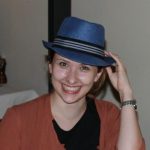 Katharina Best (Class '17 Rep., Alumna)
Katharina Best (Class '17 Rep., Alumna)
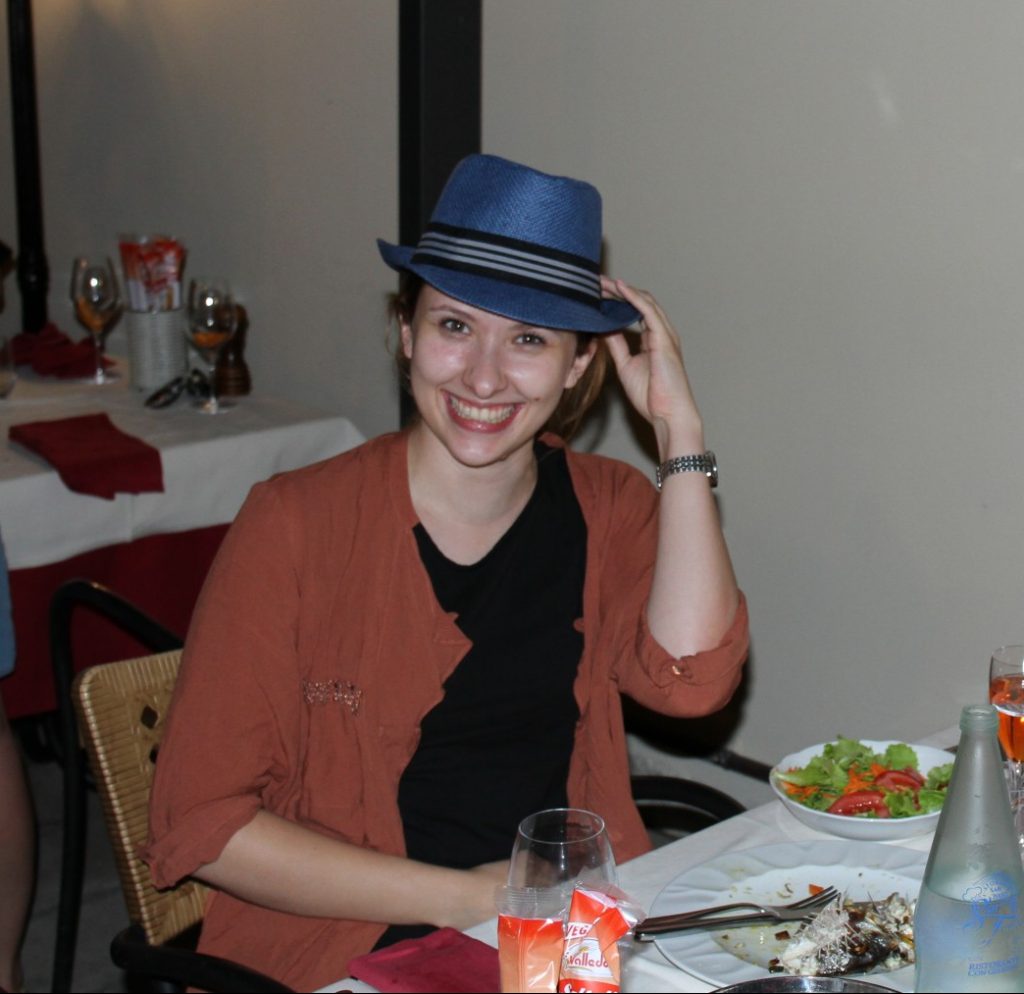
Katharina Best (Class '17 Rep., Alumna)
| Class of 2017
Country of origin: Germany
MSc: Biochemistry, LMU Munich, Germany
PI: Roland Beckmann, Gene Center Munich, Dept. of Biochemistry, LMU
2020
N K Sinha, A Ordureau, K Best, J A Saba, B Zinshteyn, E Sundaramoorthy, A Fulzele, D M Garshott, T Denk, M Thoms, J A Paulo, J W Harper, E J Bennett, R Beckmann, R Green; EDF1 coordinates cellular responses to ribosome collisions; eLife 2020;9:e58828
View publicationWells JN, Buschauer R, Mackens-Kiani T, Best K, Kratzat H, Berninghausen O, Becker T, Gilbert W, Cheng J, Beckmann R.: Structure and function of yeast Lso2 and human CCDC124 bound to hibernating ribosomes; PLoS Biol. 2020 Jul 20;18(7):e3000780. doi: 10.1371/journal.pbio.3000780. PMID: 32687489; PMCID: PMC7392345.
View publication Elena Biselli (Alumna)
Elena Biselli (Alumna)
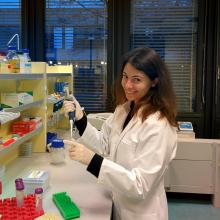
Elena Biselli (Alumna)
| Class of 2014
Country of origin: Italy
Laurea Magistrale: Physics, University of Rome La Sapienza, Italy
PI: Ulrich Gerland, Faculty of Physics, TU Munich
Project: Characterization and analysis of bacterial behaviour during starvation
I experimentally characterize bacterial behaviour during carbon starvation and quantitatively analyze it using theoretical models. I would like to understand the regulation strategy whereby E.coli cells manage the utilization of a scarce resource and if this strategy is optimized for survival in a fluctuating environment.
2019
S J Schink, E Biselli, C Ammar, U Gerland: Death rate of E. coli during starvation is set by maintenance cost and biomass recycling; Cell Systems, 9, ue 1, 2019, 64-73.e3, ISSN 2405-4712
View publication2018
S J Schink, E Biselli, C Ammar, U Gerland: Maintenance Cost and Biomass Recycling Determine Fitness of E. Coli During Starvation; September 26, 2018, SSRN: https://ssrn.com/abstract=3255561
View publication2017
Biselli, E., Agliari, E., Barra, A., Bertani, F.R., Gerardino, A., De Ninno, A., Mencattini, A., Di Giuseppe, D., Mattei, F., Schiavoni, G., et al. (2017). Organs on chip approach: a tool to evaluate cancer-immune cells interactions. Sci Rep-Uk 7, 12737.
View publication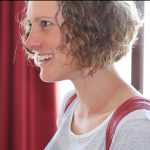 Mareike Bojer (Alumna)
Mareike Bojer (Alumna)

Mareike Bojer (Alumna)
| Class of 2017
Country of origin: Germany
MSc: Theoretical and Mathematical Physics, LMU and TUM Munich, Germany
PI: Ulrich Gerland, Faculty of Physics, TU Munich
2022
M. Bojer, S. Kremser, and U. Gerland: Robust boundary formation in a morphogen gradient via cell-cell signaling; Physical Review E 105.6 (2022): 064405.
View publication2018
Bojer, M., Graf, I.R., and Frey, E. (2018). Self-organized system size oscillation of a stochastic lattice-gas model.; Phys. Rev. E 98, 012410
View publication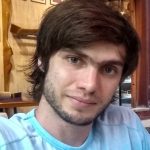 Augusto Borges (Alumnus)
Augusto Borges (Alumnus)
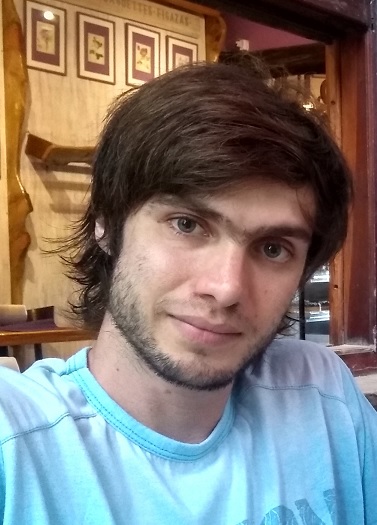
Augusto Borges (Alumnus)
| Class of 2020
Country of origin: Argentinia/Portugal
Argentina
Erwin Frey/ Hernan Lopez-Schier
2023
E. L. Kozak, J. R. Miranda-Rodríguez, A. Borges, K. Dierkes, A. Mineo, F. Pinto-Teixeira, O. Viader-Llargués, J. Solon, O. Chara, H. López-Schier; Quantitative videomicroscopy reveals latent control of cell-pair rotations in vivo. Development 1 May 2023; 150 (9): dev200975.
View publication2022
A S Ceccarelli, A Borges and O Chara: Size matters: tissue size as a marker for a transition between reaction–diffusion regimes in spatio-temporal distribution of morphogens; R. Soc. Open Sci. 9: 211112., 2022
View publication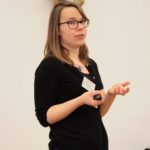 Marta Bozek (Alumna)
Marta Bozek (Alumna)
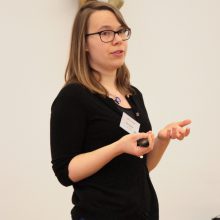
Marta Bozek (Alumna)
| Class of 2013
Country of origin: Poland
MSc: Systems Biology, University of Cambridge, UK
PI: Ulrike Gaul, Gene Center Munich, Dept. of Biochemistry, LMU
Project: DHS Mapping in Drosophila Development
My project focuses on a transcriptional network that governs the process of body segmentation during early Drosophila embryogenesis. I will apply chromatin accessibility assays, i.e. Dnase-seq and ATAC-seq, in order to comprehensively characterize this regulatory network, which will include genome-wide identification of active cis-regulatory elements as well as mapping of individual TF binding sites. The obtained data will allow me to investigate how the positional information encoded in gradients of TFs along the body axis is deciphered and processed both at the level of the entire network as well as individual regulatory elements.
2019
Bozek M, Cortini R, Storti AE, Unnerstall U, Gaul U and Gompel N (2019) ATAC-seq reveals regional differences in enhancer accessibility during the establishment of spatial coordinates in the Drosophila blastoderm. Genome Research, 29(5): 771-783
View publicationBozek M , Cortini R , Storti AE , Unnerstall U , Gaul U and Gompel N (2019) ATAC-seq reveals regional differences in enhancer accessibility during the establishment of spatial coordinates in the Drosophila blastoderm. Genome Research, 29(5): 771-783
View publication Emily Brieger (Alumna)
Emily Brieger (Alumna)
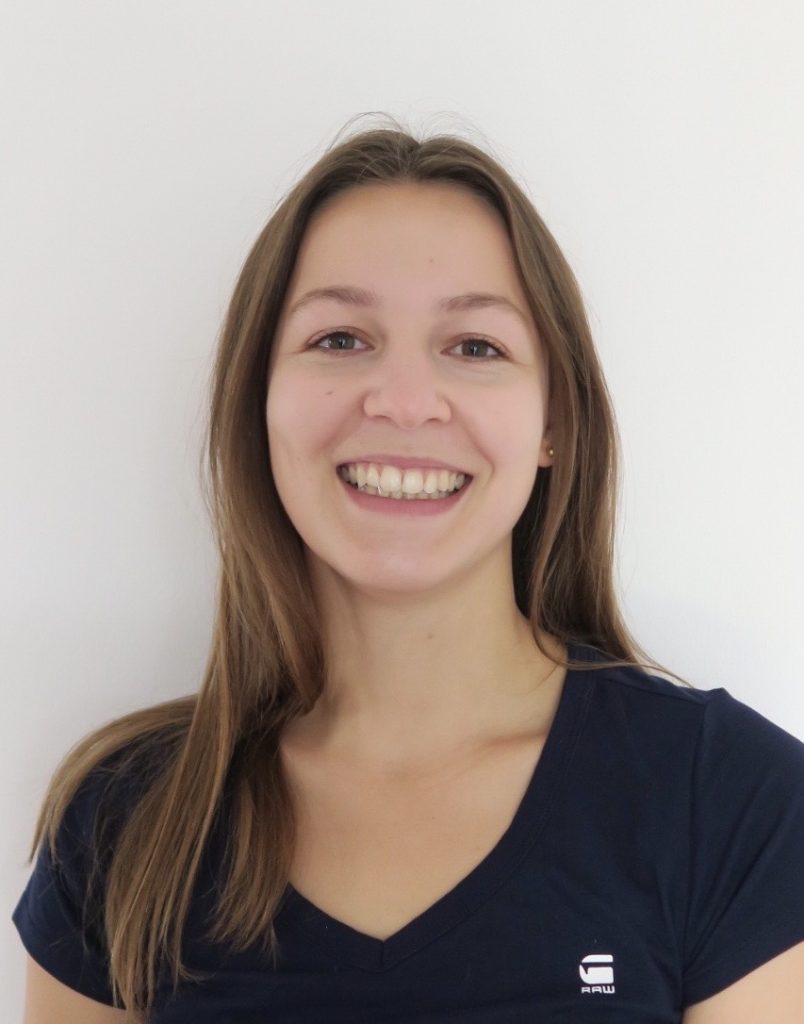
Emily Brieger (Alumna)
| Class of 2021
Country of origin: Germany
MSc: Physics, Universität Heidelberg
PI: Joachim Rädler, Soft Matter Group, Dept. of Physics, LMU
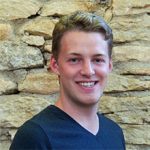 David Brückner (Alumnus)
David Brückner (Alumnus)
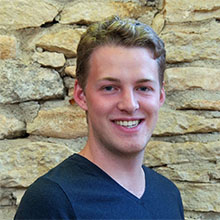
David Brückner (Alumnus)
| Class of 2016
Country of origin: Germany
MSc: Physics, University of Cambridge, UK
PI: Chase Broedersz, Faculty of Physics, LMU Munich
2021
D B Brückner, N Arlt, A Fink, P Ronceray, J O Rädler, and C P Broedersz; PNAS February 16, 2021 118 (7) e2016602118; Learning the dynamics of cell–cell interactions in confined cell migration
2020
D. B. Brückner, A. Fink, J. O. Rädler, C. P. Broedersz: Disentangling the behavioural variability of confined cell migration, J. R. Soc. Interface (2020)
View publicationD. B. Brückner, P. Ronceray, C. P. Broedersz: Inferring the dynamics of underdamped stochastic systems, Phys. Rev. Lett. (2020)
View publication2019
Brückner, D., Fink, A., Schreiber, C., Röttgermann, P., Rädler, J., Broedersz, C.; Nature Physics (2019); Stochastic nonlinear dynamics of confined cell migration in two-state systems
View publicationA. Fink, D. B. Brückner, C. Schreiber, P. J. F. Röttgermann, C. P. Broedersz and J. O. Rädler, Area and geometry dependence of cell migration in asymmetric two-state micropatterns, Biophys. J. (2019)
View publication2018
Dietrich, M., Le Roy, H., Brückner, D.B., Engelke, H., Zantl, R., Rädler, J.O., and Broedersz, C.P. (2018). Guiding 3D cell migration in deformed synthetic hydrogel microstructures. Soft matter 14, 2816 -2826.
View publicationBurelbach, J., Brückner, D., Frenkel, D., Eiser, E. (2018). Thermophoretic forces on a mesoscopic scale. Soft Matter.
View publication Andrew Nelson Butterfield (until Sep 2019)
Andrew Nelson Butterfield (until Sep 2019)
Andrew Nelson Butterfield (until Sep 2019)
| Class of 2019
Country of origin: Germany / UK
MSc: Biology, LMU, Germany
Petra Schwille, MPI of Biochemistry
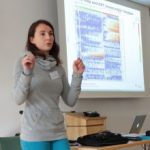 Maren Büttner (Alumna)
Maren Büttner (Alumna)
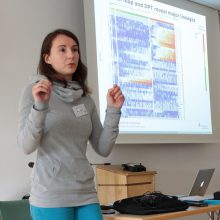
Maren Büttner (Alumna)
| Class of 2014
Country of origin: Germany
MSc: Mathematics, TU Munich, Germany
PI: Fabian Theis, Helmholtz Center Munich, TU Munich
Project: Accounting for noise in single-cell omics
In my PhD, I focus on the analysis of single-cell data and the integration of different data types from several experimental sources. In particular, I focus on data with a large number of features (transcriptomics, esp. RNA-seq) or a large number of samples as in FACS/cyTOF experiments. Mainly the project addresses the need of statistical methods to deal with measurement noise, confounding factors and issues arising from high-dimensionality of the data. Besides, integrating data from different sources demands a robust handling of data processing and possible batch effects.
2019
M. Büttner, Z. Miao, F. A. Wolf, S. A. Teichmann, and F. J. Theis, A test metric for assessing single-cell RNA-seq batch correction. Nature Methods, 16, 43-49 (2019)
View publicationS. Tritschler, M. Büttner, D. S. Fischer, M. Lange, V. Bergen, H. Lickert, F. J. Theis, Concepts and limitations for learning developmental trajectories from single cell genomics, Development 2019 146: dev170506
View publication2017
Buttner, M., Miao, Z., Wolf, A., Teichmann, S.A., and Theis, F.J. (2017). Assessment of batch-correction methods for scRNA-seq data with a new test metric. bioRxiv, 200345.
View publication2016
Haghverdi, L., Büttner, M., Wolf, F.A., Buettner, F., and Theis, F.J. (2016). Diffusion pseudotime robustly reconstructs lineage branching. Nature methods 13, 845-848.
View publication2015
Angerer, P., Haghverdi, L., Büttner, M., Theis, F.J., Marr, C., and Buettner, F. (2015). destiny: diffusion maps for large-scale single-cell data in R. Bioinformatics.
View publication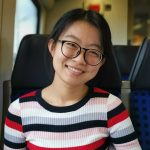 Xueqi Cao (Alumna)
Xueqi Cao (Alumna)
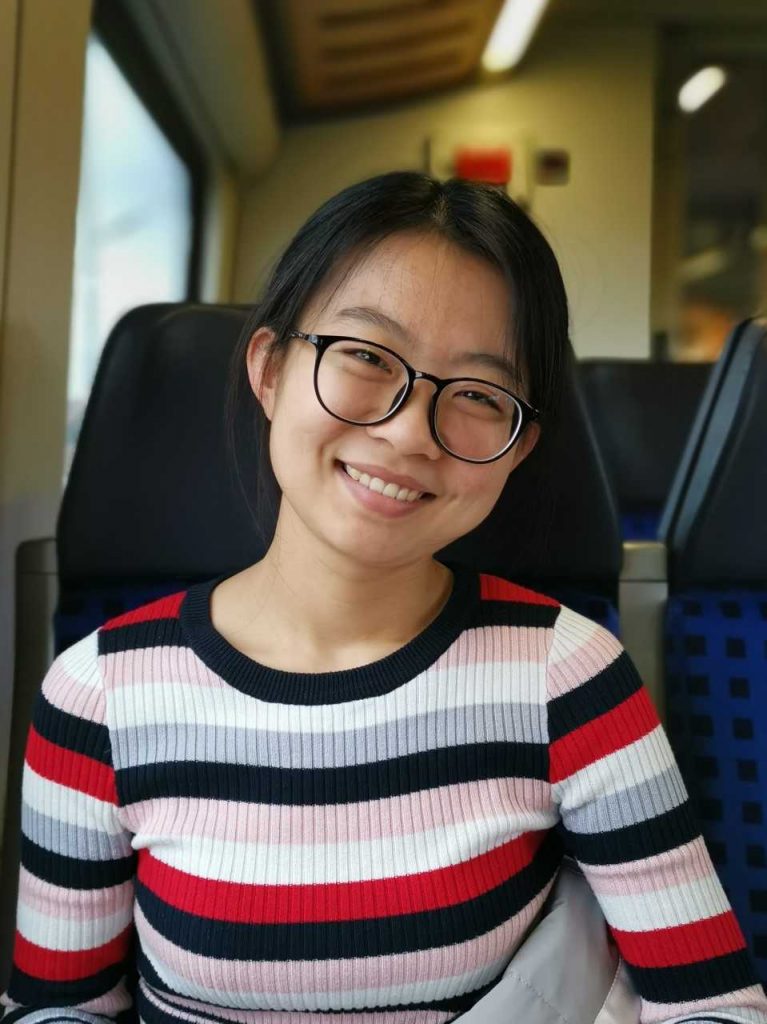
Xueqi Cao (Alumna)
| Class of 2019
Country of origin: China
MSc: Molecular Medicine, University of Jena, Germany
Julien Gagneur, Informatics, TUM
 Stefano Ceolin (Alumnus)
Stefano Ceolin (Alumnus)

Stefano Ceolin (Alumnus)
| Class of 2015
Country of origin: Italy
Laurea Magistrale: Physics, University of Padua, Italy
PI: Ulrike Gaul, Gene Center Munich, Dept. of Biochemistry, LMU
Project: Transcription factors dynamics at the single molecule level in the early Drosophila embryo
2020
M. Schnepf, C. Ludwig, P. Bandilla, S. Ceolin, U. Unnerstall, C. Jung, U. Gaul; Science (2020); Sensitive Automated Measurement of Histone-DNA Affinities in Nucleosomes;
View publication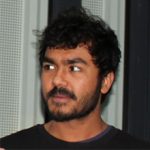 Shounak Chakraborty (Alumnus)
Shounak Chakraborty (Alumnus)
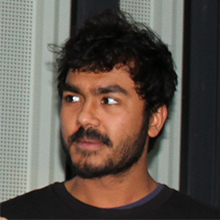
Shounak Chakraborty (Alumnus)
| Class of 2017
Country of origin: India
MSc: Bioinformatics, University of Saarland, Saarbrucken, Germany
PI: Stefan Canzar, Gene Center Munich, Dept. of Biochemistry, LMU
2018
Chakraborty S, Canzar S, Marschall T , Schulz MH, Chromatyping: Reconstructing Nucleosome Profiles from NOMe Sequencing Data; Research in Computational Molecular Biology. RECOMB 2018. Lecture Notes in Computer Science. 2018;10812:60-61. doi: 10.1007/978-3-319-16706-0_8
View publication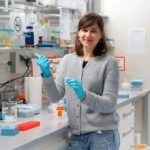 Elisavet Chatzopoulou (Alumna)
Elisavet Chatzopoulou (Alumna)
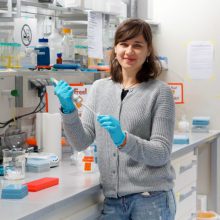
Elisavet Chatzopoulou (Alumna)
| Class of 2013
Country of origin: Greece
PI: Joachim Rädler, Faculty of Physics, LMU Munich
CoPI: Thomas Brocker, Medical Faculty, LMU Munich
Project: Development of a Quantitative Single Cell Cytolysis Assay
Natural killer (NK) cells, a subtype of cytotoxic lymphocytes, play a crucial role in immunity. They recognize infected and cancerous cells, form with them a specific one-to-one immune synapse and eventually eliminate them through the perforin/granzyme pathway. This innate mechanism can be manipulated as a potent cancer therapy using antibodies or recombinant proteins that target both cell types of interest. Our aim is the development of single-cell platforms to uncover the special characteristics of the cell-mediated cytolysis.
2016
Chatzopoulou, E.I., Roskopf, C.C., Sekhavati, F., Braciak, T.A., Fenn, N.C., Hopfner, K.-P., Oduncu, F.S., Fey, G.H., and Rädler, J.O. (2016). Chip-based platform for dynamic analysis of NK cell cytolysis mediated by a triplebody. Analyst 141, 2284-2295.
View publication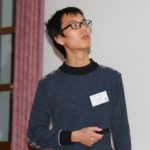 Jun Cheng (Alumnus)
Jun Cheng (Alumnus)

Jun Cheng (Alumnus)
| Class of 2015
Country of origin: China
MSc: Biological Sciences, University of Cologne, Germany
PI: Julien Gagneur, Gene Center Munich, Dept. of Biochemistry, LMU CoPI: Ulrike Gaul, Gene Center Munich, Dept. of Biochemistry, LMU
Project: Statistical modeling of RNA degradation
2019
Ž. Avsec, R. Kreuzhuber, J. Israeli, N. Xu, J. Cheng, A. Shrikumar, A. Banerjee, D. S Kim, T. Beier, L. Urban, A. Kundaje, O. Stegle, J. Gagneur, The Kipoi repository accelerates community exchange and reuse of predictive models for genomics, Nature biotechnology, 2019, PMID: 31138913
View publicationJ. Cheng, M. H. Çelik, Y. D. Nguyen, Ž. Avsec, J. Gagneur, CAGI5 splicing challenge: Improved exon skipping and intron retention predictions with MMSplice, Human Mutation, 2019, PMID: 31070280
View publicationJ. Cheng, T. Y. D. Nguyen, K. J. Cygan, M. H. Celik, W. Fairbrother, Ž. Avsec, J. Gagneur, MMSplice: modular modeling improves the predictions of genetic variant effects on splicing, Genome Biol. 2019, PMID: 30823901
View publication2018
Cheng, J., Nguyen, T.Y.D., Cygan, K.J., Celik, M.H., Fairbrother, W.G., Avsec, Z., Gagneur, J. (2018). Modular modeling improves the predictions of genetic variant effects on splicing. bioRxiv. doi.org/10.1101/438986
View publication2017
Avsec, Z., Barekatain, M., Cheng, J., Gagneur, J. (2017). Modeling positional effects of regulatory sequences with spline transformations increases prediction accuracy of deep neural networks. Bioinformatics doi.10.1093/bioinformatics/btx727
View publicationCheng, J., Maier, K.C., Avsec, Z., Rus, P., and Gagneur, J. (2017). Cis-regulatory elements explain most of the mRNA stability variation across genes in yeast. Rna 23, 1648-1659.
View publication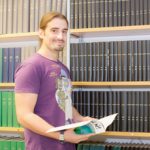 Nikolaos-Kosmas Chlis (Alumnus)
Nikolaos-Kosmas Chlis (Alumnus)
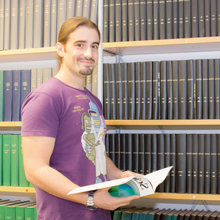
Nikolaos-Kosmas Chlis (Alumnus)
| Class of 2015
Country of origin: Greece
MSc: Electronic and Computer Engineering, Technical University of Crete Chania, Greece
PI: Fabian Theis, Helmholtz Center Munich, TU Munich
Project: Machine Learning for Single Cell Profiling Data
2020
N.-K. Chlis, L. Rausch, Th. Brocker, J. Kranich, F. J. Theis; Predicting single-cell gene expression profiles of imaging flow cytometry data with machine learning; Nucleic Acids Research, gkaa926, https://doi.org/10.1093/nar/gkaa926
View publicationN.-K. Chlis, A. Karlas, N.-A. Fasoul, M. Kallmayer, H.-H. Eckstein, F. J. Theis, V. Ntziachristos, C. Marr; A sparse deep learning approach for automatic segmentation of human vasculature in multispectral optoacoustic tomography, Photoacoustics Volume 20, December 2020, 100203
View publicationJ. Kranich, N.-K. Chlis, L. Rausch, A. Latha, M. Schifferer, T. Kurz, A. Foltyn-Arfa Kia, M. Simons, F. J. Theis & Th. Brocker; In vivo identification of apoptotic and extracellular vesicle-bound live cells using image-based deep learning; Journal of Extracellular Vesicles Volume 9, 2020 – Issue 1, Article: 1792683
View publication2017
Chlis, N.K., Alexander Wolf, F., and Theis, F.J. (2017). Model-based branching point detection in single-cell data by K-Branches clustering. Bioinformatics.
View publication Purva Choudhary
Purva Choudhary
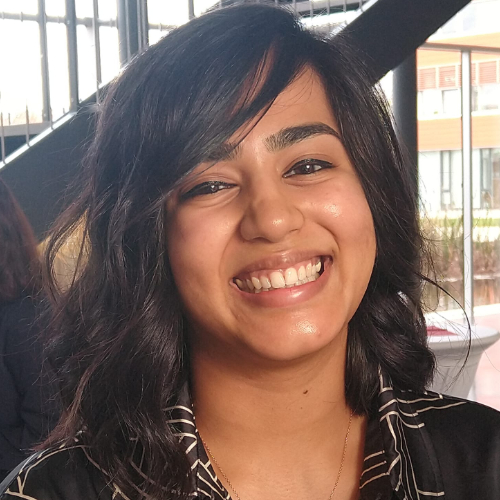
Purva Choudhary
| Class of 2024
Country of origin: India
MSc: Molecular and Cellular Biology, LMU Munich
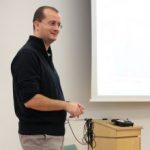 Roberto Cortini (Alumnus)
Roberto Cortini (Alumnus)
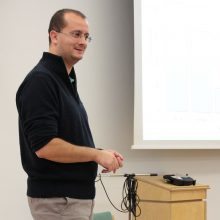
Roberto Cortini (Alumnus)
| Class of 2014
Country of origin: Italy
MSc: Computer Science Engineer, University of Florence, Italy
PI: Ulrike Gaul, Gene Center Munich, Dept. of Biochemistry, LMU
CoPI: Julien Gagneur, Faculty of Informatics, TU Munich
Project: Digital footprinting for genome-wide analysis of Drosophila developmental regulatory networks
Transcription is regulated by several means, in particular by binding of transcription factors (TFs) to non-coding regulatory regions in the genome, with occupancy levels positively or negatively driving gene expression. This can be described using regulatory networks, which are graphs with nodes corresponding to TFs/genes, edges to binding interactions and edges‘ weights to occupancy measurements. Dnase/ATAC-seq are methods that can identify open chromatin regions, transcription factor binding sites (TFBSs) and their occupancies in a genome wide fashion, also called digital footprinting. By combining existing algorithms and tools, and developing new ones if missing, I will create a solid and easy-to-use framework for footprint detection, occupancy measurements and regulatory network construction. We will apply this framework to elucidate the ecdysone network in S2 cells as our principal paradigm and later to the segmentation network in the Drosophila embryo.
2019
Bozek M, Cortini R, Storti AE, Unnerstall U, Gaul U and Gompel N (2019) ATAC-seq reveals regional differences in enhancer accessibility during the establishment of spatial coordinates in the Drosophila blastoderm. Genome Research, 29(5): 771-783
View publicationBozek M , Cortini R , Storti AE , Unnerstall U , Gaul U and Gompel N (2019) ATAC-seq reveals regional differences in enhancer accessibility during the establishment of spatial coordinates in the Drosophila blastoderm. Genome Research, 29(5): 771-783
View publication Maíra de Oliveira Torres
Maíra de Oliveira Torres

Maíra de Oliveira Torres
| Class of 2022
Country of origin: Brazil
MSc: Neurology, Federal University of the State of Rio de Janeiro
PI: Johanna Klughammer, Gene Center, LMU
CoPI:
 Carina Demel (Alumna)
Carina Demel (Alumna)
Carina Demel (Alumna)
| Class of 2013
Country of origin: Germany
MSc: Bioinformatics, LMU Munich, Germany
PI: Patrick Cramer, MPI for Biophysical Chemistry, Göttingen (formerly at Gene Center Munich)
CoPI: Julien Gagneur, Gene Center Munich, Dept. of Biochemistry, LMU
Project: Quantifying Human RNA Metabolism
We are quantifying RNA metabolism in human cells by using 4sU-seq, an approach which is able to quantify newly-synthesized RNA. We are using a system which can be perturbed by the addition of drugs. The aim is a system-wide understanding of how RNA metabolism, i.e. synthesis and degradation rates, changes in response to drugs.
2017
Michel, M., Demel, C., Zacher, B., Schwalb, B., Krebs, S., Blum, H., Gagneur, J., and Cramer, P. (2017). TT-seq captures enhancer landscapes immediately after T-cell stimulation. Mol Syst Biol 13, 920.
View publicationShetty, A., Kallgren, S.P., Demel, C., Maier, K.C., Spatt, D., Alver, B.H., Cramer, P., Park, P.J., and Winston, F. (2017). Spt5 Plays Vital Roles in the Control of Sense and Antisense Transcription Elongation. Molecular cell 66, 77-88 e75.
View publication2016
Eser, P., Wachutka, L., Maier, K.C., Demel, C., Boroni, M., Iyer, S., Cramer, P., and Gagneur, J. (2016). Determinants of RNA metabolism in the Schizosaccharomyces pombe genome. Mol Syst Biol 12, 857.
View publicationSchwalb, B., Michel, M., Zacher, B., Fruhauf, K., Demel, C., Tresch, A., Gagneur, J., and Cramer, P. (2016). TT-seq maps the human transient transcriptome. Science 352, 1225-1228.
View publication Timo Denk
Timo Denk
Timo Denk
| Class of 2020
Country of origin: Germany
MSc: Biochemistry, LMUMunich, Germany
Roland Beckmann
Project: Coordination of translation with quality control and mRNA decay in humans
2022
M Narita, T Denk, Y Matsuo, T Sugiyama, C Kikuguchi, S Ito, N Sato, T Suzuki, S Hashimoto, I Machová, P Tesina, R Beckmann & T Inada; A distinct mammalian disome collision interface harbors K63-linked polyubiquitination of uS10 to trigger hRQT-mediated subunit dissociation, Nat Commun, 13, 6411 (2022)
View publication2020
Thoms, M., Buschauer, R., Ameismeier, M., Koepke, L., Denk, T., Hirschenberger, M., Kratzat, H., Hayn, M., Mackens-Kiani, T., Cheng, J., et al. (2020); Structural basis for translational shutdown and immune evasion by the Nsp1 protein of SARS-CoV-2. Science 369, 1249-1255.
View publicationN K Sinha, A Ordureau, K Best, J A Saba, B Zinshteyn, E Sundaramoorthy, A Fulzele, D M Garshott, T Denk, M Thoms, J A Paulo, J W Harper, E J Bennett, R Beckmann, R Green; EDF1 coordinates cellular responses to ribosome collisions; eLife 2020;9:e58828
View publication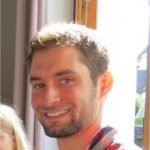 Jonas Sebastian Denk (Alumnus)
Jonas Sebastian Denk (Alumnus)
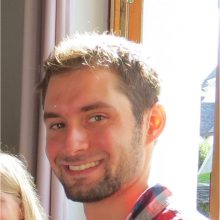
Jonas Sebastian Denk (Alumnus)
| Class of 2013
Country of origin: Germany
MSc: Statistics and Biophysics, LMU Munich, Germany
PI: Erwin Frey, Faculty of Physics, LMU Munich
CoPI: Petra Schwille, MPI of Biochemistry, Martinsried
Project: Regulatory Mechanisms of Pattern Formation in Cell Devision
My research is focused on a theoretical description of pattern formation and collective phenomena in the process of bacterial cell division. On the one hand, this includes a quantitative characterization of Min protein patterns based on diffusion reaction systems. On the other hand, I study the collective behavior of active FtsZ polymers regarding Z-ring formation. In my work, I benefit from a strong collaboration with experimentalists (e.g. Simon Kretschmer, QBM member).
2018
Denk, J., Kretschmer, S., Halatek, J., Hartl, C., Schwille, P., and Frey, E. (2018). MinE conformational switching confers robustness on self-organized Min protein patterns. Proceedings of the National Academy of Sciences of the United States of America. DOI: 10.1073/pnas.1719801115
View publication2016
Denk, J., Huber, L., Reithmann, E., and Frey, E. (2016). Active Curved Polymers Form Vortex Patterns on Membranes. Phys Rev Lett 116.
View publication Alice Fabienne Descoeudres
Alice Fabienne Descoeudres

Alice Fabienne Descoeudres
| Class of 2022
Country of origin: Switzerland
PI: Stefan Canzar, Gene Center, LMU
 Vladana Djakovic
Vladana Djakovic
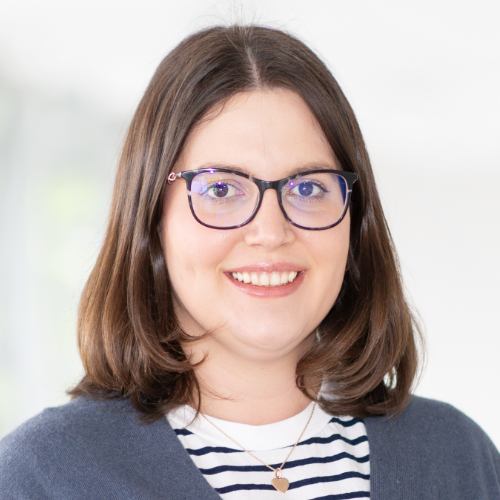
Vladana Djakovic
| Class of 2024
Country of origin: Bosnia and Herzegovina
MSc: ESG Data Science, LMU Munich
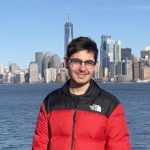 Maximilian Donsbach
Maximilian Donsbach

Maximilian Donsbach
| Class of 2023
Country of origin: Germany
MSc: Biochemistry, LMU Munich
Project: DNA-Protein-Crosslink Repair, Genome stability
2023
D Yaneva, J L Sparks, M Donsbach, S Zhao, P Weickert, R Bezalel-Buch, J Stingele, J C Walter: The FANCJ helicase unfolds DNA-protein crosslinks to promote their repair, Mol Cell, 2023 Jan 5;83(1):43-56.e10.
View publication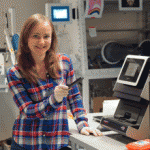 Evgeniia Edeleva (Alumna)
Evgeniia Edeleva (Alumna)
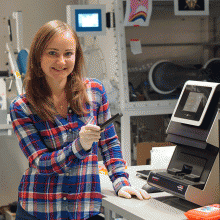
Evgeniia Edeleva (Alumna)
| Class of 2014
Country of origin: Russia
MSc: Molecular Biology, IMPRS, Georg-August University, Göttingen, Germany
PI: Dieter Braun, Faculty of Physics, LMU Munich
Project: Towards immunological and kinetics measurements with thermophoresis
I apply thermophoresis – the novel technique for affinity quantification – for two purposes. In one project, my aim is to devise a better method for the diagnostics of the disease a1PI-deficiency disorder. A new method should work directly in plasma, be fast, and be more informative (provide information on the concentration and affinity of the disease-associated molecule) than the currently used methods. In another project, I am testing the stereochemical theory of the origin of the genetic code by looking for a simple RNA structure where codon/anticodon presence in the binding pocket would modify the affinity to the cognate amino acid.
2019
E. Edeleva, A. Salditt, J. Stamp, P. Schwintek, J. Boekhoven and D. Braun, Continuous nonenzymatic cross-replication of DNA strands with in situ activated DNA oligonucleotides Chemical Science 10, 5807 – 5814, doi:10.1039/C9SC00770A (2019)
View publication2016
Dau, T., Edeleva, E.V., Seidel, S.A.I., Stockley, R.A., Braun, D., and Jenne, D.E. (2016). Quantitative analysis of protease recognition by inhibitors in plasma using microscale thermophoresis. Sci Rep-Uk 6, 35413.
View publication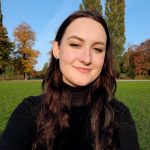 Antonia Eicher
Antonia Eicher
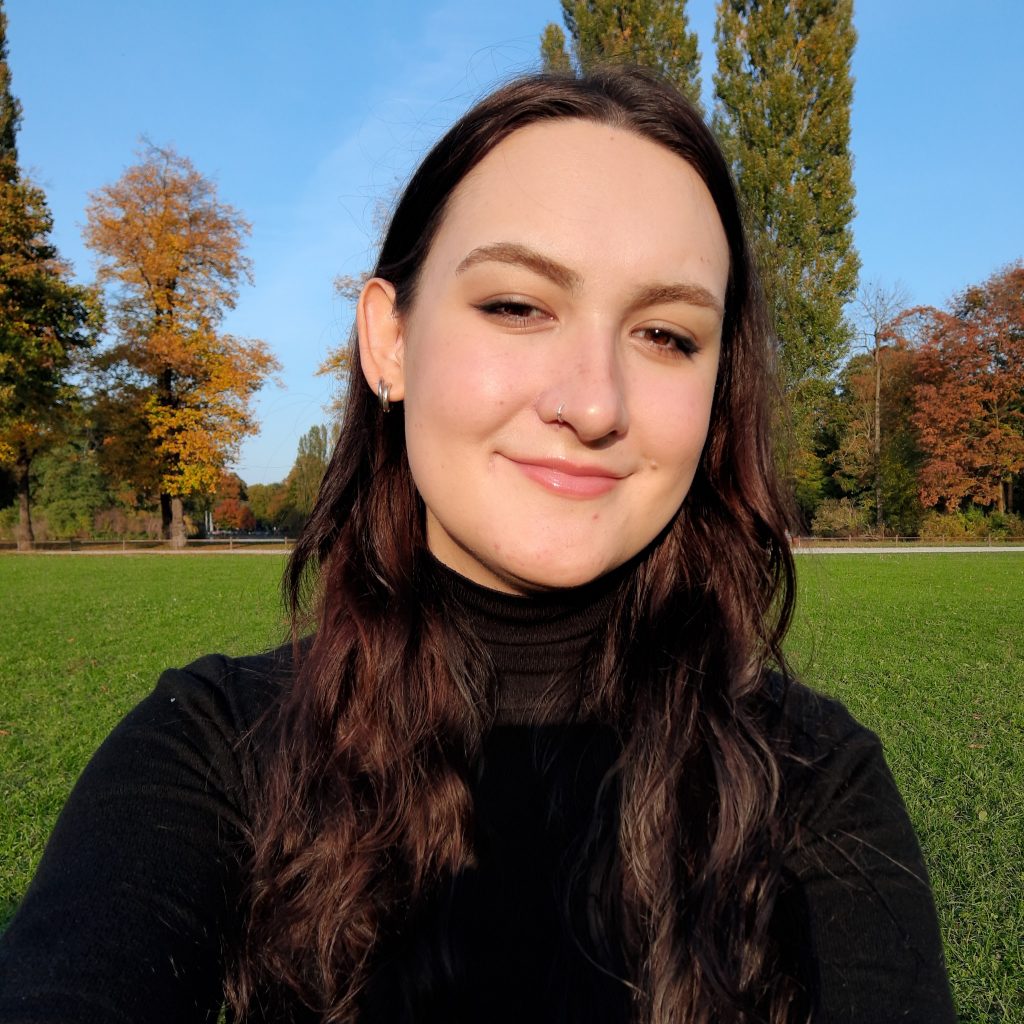
Antonia Eicher
| Class of 2023
Country of origin: Germany
MSc: Biochemistry, LMU Munich
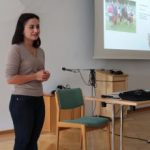 Basak Eraslan (Alumna)
Basak Eraslan (Alumna)
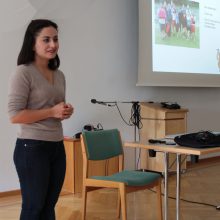
Basak Eraslan (Alumna)
| Class of 2014
Country of origin: Turkey
MSc: Computational Systems Biology, Aalto University Espoo, Finland
PI: Julien Gagneur, Faculty of Informatics, TU Munich
CoPI: Roland Beckmann, Gene Center Munich, Dept. of Biochemistry, LMU
Project: Integrative Analysis of Genome Wide DNA Binding Protein Occupancy Maps
Protein expression levels are modulated at several levels in the cell, from transcription level to RNA processing, RNA transport, translation and finally post translational modification levels. Many studies have considered steady-state mRNA levels as an indication of corresponding protein levels in the cell. However, recent studies have revealed that the correlation between mRNA levels and protein levels is poor. Therefore, in order to understand several processes in the cell, we should get a quantitative understanding of contribution of each step to the final protein abundance. In my first project, I am studying translational control during human dendritic cell maturation using a combination of RNA-seq and Ribosome-pofiling time-course dataset in collaboration with the Prof. Beckmann’s lab.
2019
B. Eraslan, D. Wang, M. Gusic, H. Prokisch, B. M. Hallstrom, M. Uhlen, A. Asplund, F. Ponten, Th. Wieland, Th. Hopf, H. Hahne, B. Kuster, J. Gagneur, Quantification and discovery of sequence determinants of protein per mRNA amount in 29 human tissues, Mol. Syst. Biol. 2019, PMID: 30777893
View publicationD. Wang, B. Eraslan, Th. Wieland, B. M. Hallstrom, Th. Hopf, D. P. Zolg, J. Zecha, A. Asplund, L-h. Li, Ch. Meng, M. Frejno, T. Schmidt, K. Schnatbaum, M. Wilhelm, F. Ponten, M. Uhlen, J. Gagneur, H. Hahne, B. Kuster, A deep proteome and transcriptome abundance atlas of 29 healthy human tissues, Mol. Syst. Biol. 2019, PMID: 30777892
View publication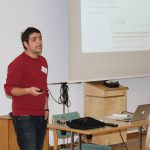 Gökcen Eraslan (Alumnus)
Gökcen Eraslan (Alumnus)
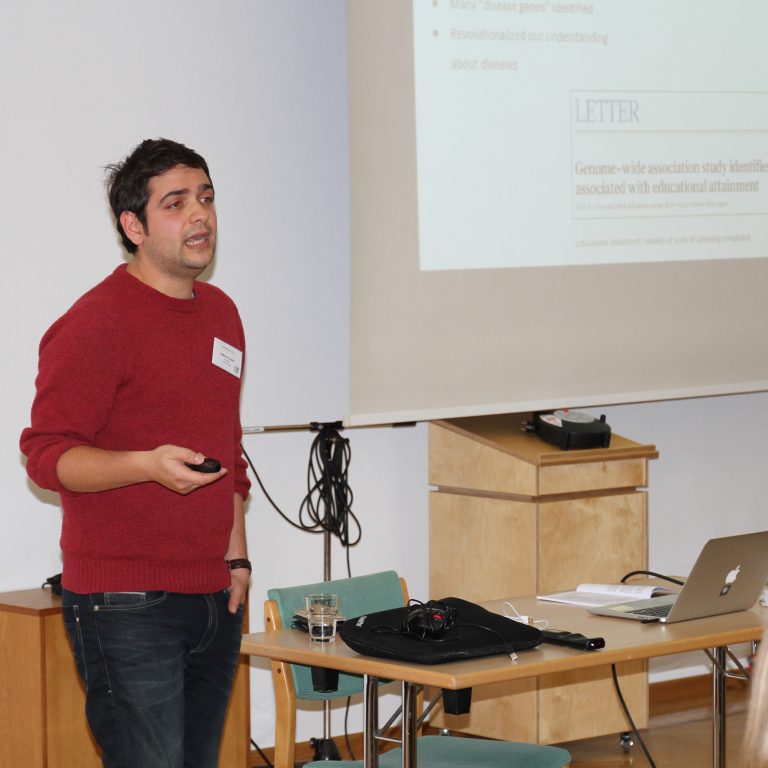
Gökcen Eraslan (Alumnus)
| Class of 2014
Country of origin: Turkey
MSc: Computational Systems Biology, Aalto University Espoo, Finland
PI: Fabian Theis, Helmholtz Center Munich, TU Munich
Project: Bayesian Integrative Modeling of Genomics Data in Systems Medicine
Single nucleotide changes may influence the regulatory mechanisms in the genomic landscape. Several single nucleotide polymorphisms can also have more severe effects and may be associated to diseases. It has been reported that SNPs might impair microRNA-mediated post-transcriptional regulation which may in turn result in diseases including coronary artery disease (CAD). In this project, we use deep neural networks which are able to capture intricate patterns encoded in sequences with a high predictive power. We use this method to understand associations between sequence alterations and mechanisms underlying diseases for a combination of SNPs and microRNA-mediated SNP effects.
2019
G. Eraslan, Ž. Avsec, J. Gagneur, F. J. Theis, Deep learning: new computational modelling techniques for genomics, Nature Reviews Genetics, 20, 389–403 (2019)
View publication2016
Eraslan, G., Arloth, J., Martins, J., Iurato, S., Czamara, D., Binder, E.B., Theis, F.J., and Mueller, N.S. (2016). DeepWAS: Directly integrating regulatory information into GWAS using deep learning supports master regulator MEF2C as risk factor for major depressive disorder. bioRxiv.
View publication Hanna Esser
Hanna Esser
Hanna Esser
| Class of 2023
Country of origin: UK
MSc: Biochemistry, LMU Munich
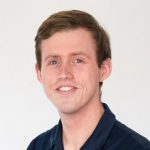 Conrad Fallon
Conrad Fallon
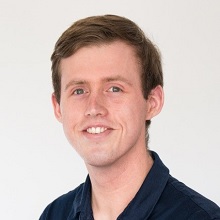
Conrad Fallon
| Class of 2022
Country of origin: UK
MSc: Developmental Biology, University of Manchester
PI: Nicolas Gompel, Dept. of Cell and Developmental Biology, LMU
CoPI:
Project: Modulating a single TFBS in an enhancer: from atomic contacts to variation in enhancer activity
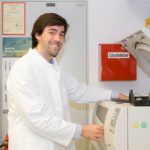 Javier Fernandez Collado (Alumnus)
Javier Fernandez Collado (Alumnus)
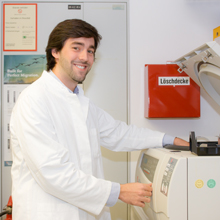
Javier Fernandez Collado (Alumnus)
| Class of 2015
Country of origin: Spain
MSc: Nanoscience and Molecular Nanotechnology, The Autonomous University of Madrid, Spain
PI: Wolfgang Baumeister / Rubén Fernández-Busnadiego, Max Planck Institute of Biochemistry, Martinsried
Project: Structural analysis of membrane contact sites (MCS) using Cryo-electron tomography
2020
M. Salfer, J. F. Collado, W. Baumeister, R. Fernández-Busnadiego, A. Martínez-Sánchez, Reliable estimation of membrane curvature for cryo-electron tomography, https://doi.org/10.1371/journal.pcbi.1007962
View publication2019
J Collado, M Kalemanov, F Campelo, C Bourgoint, F. Thomas, R Loewith, A Martínez-Sánchez, W Baumeister, Chr J Stefan, R Fernández-Busnadiego, Tricalbin-Mediated Contact Sites Control ER Curvature to Maintain Plasma Membrane Integrity, Developmental Cell, Vol 51, ISSUE 4, P476-487.e7, November 18, 2019
View publication2017
Collado, J., and Fernandez-Busnadiego, R. (2017). Deciphering the molecular architecture of membrane contact sites by cryo-electron tomography. Biochimica et biophysica acta.
View publication David Sebastian Fischer (Alumnus)
David Sebastian Fischer (Alumnus)
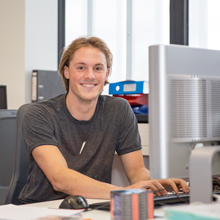
David Sebastian Fischer (Alumnus)
| Class of 2016
Country of origin: Germany
MSc: Computational Biology and Bioinformatics, Swiss Federal Institute of Technology Zurich, Switzerland
PI: Fabian Theis, Helmholtz Center Munich, TU Munich
2022
G Palla, H Spitzer, M Klein, D Fischer, A Chr Schaar, L B Kuemmerle, S Rybakov, I L Ibarra, O Holmberg, I Virshup, M Lotfollahi, S Richter & F J Theis Squidpy: a scalable framework for spatial omics analysis, Nature Methods, 19, 171–178 (2022)
View publication2021
A-D Brunner, M Thielert, C G Vasilopoulou, C Ammar, F Coscia, A Mund, O B Hoerning, N Bache, A Apalategui, M Lubeck, S Richter, D S Fischer, O Raether, M A Park, F Meier, F J Theis, M Mann: Ultra-high sensitivity mass spectrometry quantifies single-cell proteome changes upon perturbation; BioRxiv, 2020.12. 22.423933
View publication2019
S. Tritschler, M. Büttner, D. S. Fischer, M. Lange, V. Bergen, H. Lickert, F. J. Theis, Concepts and limitations for learning developmental trajectories from single cell genomics, Development 2019 146: dev170506
View publicationD. S. Fischer, A. K. Fiedler, E. M. Kernfeld, R. M. J. Genga, A. Bastidas-Ponce, M. Bakhti, H. Lickert, J. Hasenauer, R. Maehr, F. J. Theis, Inferring population dynamics from single-cell RNA-sequencing time series data, Nature Biotechnology, 37, 461–468 (2019)
View publication2017
Fischer, D.S., Fiedler, A.K., Kernfeld, E., Genga, R.M., Hasenauer, J., Maehr, R., and Theis, F.J. (2017). Beyond pseudotime: Following T-cell maturation in single-cell RNAseq time series. bioRxiv, 219188.
View publicationAngerer, P., Simon, L., Tritschler, S., Wolf, F.A., Fischer, D., and Theis, F.J. (2017). Single cells make big data: New challenges and opportunities in transcriptomics. Current Opinion in Systems Biology 4, 85-91.
View publication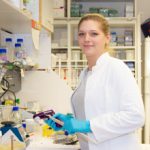 Verena Friedrich (nee Steyer, Alumna)
Verena Friedrich (nee Steyer, Alumna)
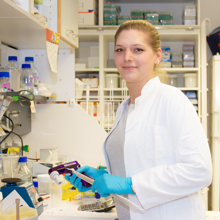
Verena Friedrich (nee Steyer, Alumna)
| Class of 2015
Country of origin: Germany
MSc: Biology, LMU Munich, Germany
PI: Thomas Brocker, Medical Faculty, LMU
Project: Immune homeostasis of the gut microbiota
2017
Barthels, C., Ogrinc, A., Steyer, V., Meier, S., Simon, F., Wimmer, M., Blutke, A., Straub, T., Zimber-Strobl, U., Lutgens, E., et al. (2017). CD40-signalling abrogates induction of RORγt(+) Treg cells by intestinal CD103(+) DCs and causes fatal colitis. Nature Communications 8, 14715.
View publication Fabian Fröhlich (Alumnus)
Fabian Fröhlich (Alumnus)
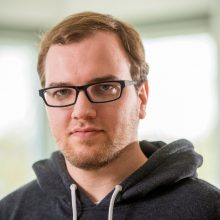
Fabian Fröhlich (Alumnus)
| Class of 2013
Country of origin: Germany
MSc: Mathematics, TU Munich, Germany
PI: Fabian Theis, Helmholtz Center Munich, TU Munich
CoPI: Joachim Rädler, Faculty of Physics, LMU Munich
Project: Parameter Estimation for Heterogeneous Population Data
In this project we develop numerical methods for parameter estimation from heterogeneous population data using mechanistic dynamical models. The developed methods account for both sources of heterogeneity: the cell-to-cell variability of parameters and the stochasticity of the underlying biochemical processes. We apply these methods to various experimental datasets to learn about sources of heterogeneity and build predictive models for the cellular response to external stimuli.
2018
Stapor, P., Froehlich, F., and Hasenauer, J. (2018). Optimization and uncertainty analysis of ODE models using second order adjoint sensitivity analysis. bioRxiv.
View publicationVillaverde, A.F., Froehlich, F., Weindl, D., Hasenauer, J., and Banga, J.R. (2018). Benchmarking optimization methods for parameter estimation in large kinetic models. bioRxiv.
View publicationFroehlich, F., Reiser, A., Fink, L., Woschee, D., Ligon, T., Theis, F., Raedler, J., and Hasenauer, J. (2018). Multi-Experiment Nonlinear Mixed Effect Modeling of Single-Cell Translation Kinetics after Transfection. bioRxiv.
View publicationFröhlich, F., Reiser, A., Fink, L., Woschee, D., Ligon, T., Theis, F.J., Rädler, J.O., Hasenauer, J. (2018). Multi-experiment nonlinear mixed effect modeling of single-cell translation kinetics after transfection. npj Systems Biology and applications 4, Article number: 42
View publication2017
Fröhlich, F., Kaltenbacher, B, Theis, F.J., Hasenauer, J. (2017). Scalable parameter estimation for genome-scale biochemical reaction networks. Plos Comput Biol 13(1): e1005331.
View publicationLoos, C., Moeller, K., Fröhlich, F., Hucho, T., and Hasenauer, J. (2017). Mechanistic hierarchical population model identifies latent causes of cell-to-cell variability. bioRxiv, 171561.
View publicationFroehlich, F., Kessler, T., Weindl, D., Shadrin, A., Schmiester, L., Hache, H., Muradyan, A., Schuette, M., Lim, J.-H., Heinig, M., et al. (2017). Efficient parameterization of large-scale mechanistic models enables drug response prediction for cancer cell lines. bioRxiv, 174094.
View publicationStapor, P., Weindl, D., Ballnus, B., Hug, S., Loos, C., Fiedler, A., Krause, S., Hroß, S., Fröhlich, F., and Hasenauer, J. (2017). PESTO: Parameter EStimation TOolbox. Bioinformatics.
View publicationLigon, T.S., Fröhlich, F., Chi, O.T., Banga, J.R., Balsa-Canto, E., and Hasenauer, J. (2017). GenSSI 2.0: Multi-experiment structural identifiability analysis of SBML models. Bioinformatics.
View publicationFröhlich, F., Loos, C., and Hasenauer, J. (2017). Scalable Inference of Ordinary Differential Equation Models of Biochemical Processes. arXiv preprint arXiv:171108079.
View publication2016
Fröhlich, F., Theis, F.J., Rädler, J.O., and Hasenauer, J. (2016). Parameter estimation for dynamical systems with discrete events and logical operations. Bioinformatics.
View publicationFröhlich, F., Thomas, P., Kazeroonian, A., Theis, F.J., Grima, R., and Hasenauer, J. (2016). Inference for Stochastic Chemical Kinetics Using Moment Equations and System Size Expansion. Plos Comput Biol 12.
View publicationKazeroonian, A., Fröhlich, F., Raue, A., Theis, F.J., and Hasenauer, J. (2016). CERENA: ChEmical REaction Network Analyzer-A Toolbox for the Simulation and Analysis of Stochastic Chemical Kinetics. PloS one 11, e0146732.
View publication2014
Fröhlich, F., Hross, S., Theis, F.J., and Hasenauer, J. (2014). Radial Basis Function Approximations of Bayesian Parameter Posterior Densities for Uncertainty Analysis. In: Mendes P., Dada J.O., Smallbone K. (eds) Computational Methods in Systems Biology. CMSB 2014. Lecture Notes in Computer Science, vol 8859. Springer, Cham
View publicationFröhlich, F., Theis, F.J., and Hasenauer, J. (2014). Uncertainty Analysis for Non-identifiable Dynamical Systems: Profile Likelihoods, Bootstrapping and More. In: Mendes P., Dada J.O., Smallbone K. (eds) Computational Methods in Systems Biology. CMSB 2014. Lecture Notes in Computer Science, vol 8859. Springer, Cham
View publication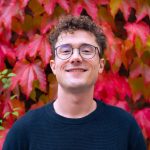 Bela Frohn
Bela Frohn

Bela Frohn
| Class of 2021
Country of origin: Germany
M.Sc.: Bioinformatics, University of Edinburgh, UK
PI: Petra Schwille, Max Planck Institute of Biochemistry, Martinsried
Project: Bottom-up synthetic biology tries to build minimal living systems from scratch by combining biomolecules such as proteins, lipids and DNA to both understand and engineer life. Up to now, researchers in bottom-up synthetic biology typically have been trying to reconstitute and reduce existing multi-protein systems in vitro by using a minimal number of their components. However, utilising existing proteins is not only inherently contradictory to the idea of bottom-up design as they are themselves not designed from scratch, but also faces severe practical problems as natural proteins are evolutionary optimised for specific in vivo conditions. In my research, I combine computational and experimental tools to on one hand engineer existing protein machineries to fit the specific needs of in vitro reconstitution, and to on the other hand de novo design protein machineries that are potentially easier to understand and control than naturally occurring ones.
2022
P Schwille & B Frohn (2022), Hidden protein functions and what they may teach us; Trends Cell Biol. 32(2):102-109.
View publicationB. Frohn, T. Härtel, J. Cox, P. Schwille (2022): Tracing back variations in archaeal ESCRT-based cell division to protein domain architectures. PLoS One 17(3).
View publication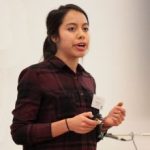 Daniela Garcia (Alumna)
Daniela Garcia (Alumna)
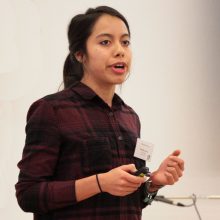
Daniela Garcia (Alumna)
| Class of 2014
Country of origin: Mexico
MSc: Systems and Synthetic Biology, ISSB Evry, France
PI: Petra Schwille, Max Planck Institute of Biochemistry, Martinsried
Project: In-Vitro Expression of self-organizing proteins in droplets
Our aim is to generate cell-like microenvironments for the study of self-organizing proteins in a high-throughput manner. We will employ microfluidic devices that will allow us to encapsulate the minimal set of components for the in-vitro expression of self-organizing proteins inside droplets. This will provide a suitable minimal chassis where any protein can be studied in a define compartment under specific conditions.
2016
Ramirez, D., Garcia-Soriano, D.A., Raso, A., Feingold, M., Rivas, G., and Schwille, P. (2016). Chiral vortex dynamics on membranes is an intrinsic property of FtsZ, driven by GTP hydrolysis. bioRxiv.
View publication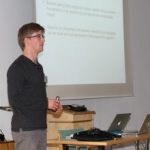 Florian Gartner (Alumnus)
Florian Gartner (Alumnus)
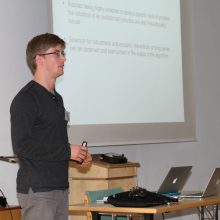
Florian Gartner (Alumnus)
| Class of 2014
Country of origin: Germany
MSc: Physics, LMU Munich, Germany
PI: Erwin Frey, Faculty of Physics, LMU Munich
CoPI: Julien Gagneur, Faculty of Informatics, TU Munich
Project: Search for biophysical principles of morphogenesis in Drosophila melanogaster
We are investigating the biophysical principles of self-organization during the early stages of morphogenesis in Drosophila melanogaster. Morphogenesis refers to the process that results in the differentiation and specialization of primarily identical embryonic cells in order to form a functional, multi-cellular organism. We use computer models to gain basic understanding of the design principles of the underlying gene-expression network in Drosophila. In particular, we are interested in the question of how fluctuations are „averaged out“ in order to create morphogen patterns at increasingly high precision that scale reliably with body-size.
2022
A V Dass, S Wunnava, et al., F Gartner, S Angerpointner, E Frey, D Braun: RNA Oligomerisation without Added Catalyst from 2 ′ ,3 ′ ‑Cyclic Nucleotides by Drying at Air‑Water Interfaces; ChemSystemsChem e202200026 (2022)
View publicationF M Gartner, I R Graf and E Frey: The time complexity of self-assembly; PNAS, January 18, 2022, 119 (4) e2116373119
View publication2020
Gartner, F. M., Graf, I. R., Wilke, P., Geiger, P. M., & Frey, E. (2020), Stochastic yield catastrophes and robustness in self-assembly. ELife, 9, 1–37.
View publication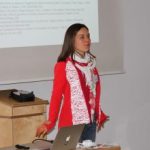 Raphaela Geßele (Alumna)
Raphaela Geßele (Alumna)
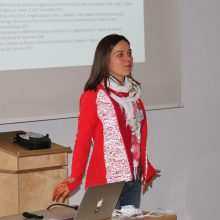
Raphaela Geßele (Alumna)
| Class of 2014
Country of origin: Germany
MSc: Physics, LMU Munich, Germany
PI: Erwin Frey, Faculty of Physics, LMU Munich
Project: Cell polarization in specific geometries
2020
Geßele R., Halatek J., Würthner L. and Frey E; Geometric cues stabilise long- axis polarisation of PAR protein patterns in C. elegans., Nat. Commun. 11(1): 539, 2020. doi: 10.1038/s41467-020-14317-w
View publication2014
Pietrowski D., Gong Y., Mairhofer M., Gessele R. and Sator M.; Effects of Progesterone and its Metabolites on Human Granulosa Cells. Horm. Metab. Res. 46(2): 133-7. 2014. doi: 10.1055/s-0033-1357167
View publication Giovanni Giunta (Alumnus)
Giovanni Giunta (Alumnus)
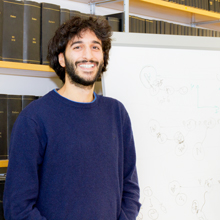
Giovanni Giunta (Alumnus)
| Class of 2015
Country of origin: Italy
MSc: Physics, LMU Munich, Germany
PI: Ulrich Gerland, Faculty of Physics, TU Munich
Project: Developing an analytical theoretical framework for understanding design principles of enzyme arrangements
2020
G. Giunta, H. Seyed-Allaei & U. Gerland, Cross-diffusion induced patterns for a single-step enzymatic reaction, Communications Physics volume 3, Article number: 167 (2020)
View publication Tobias Göppel (until 2020)
Tobias Göppel (until 2020)
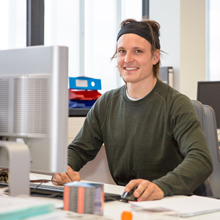
Tobias Göppel (until 2020)
| Class of 2016
Country of origin: Germany
MSc: Physics, LMU Munich, Germany
PI: Ulrich Gerland, Faculty of Physics, TU Munich
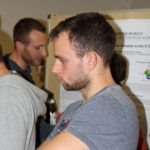 Andriy Goychuk (Alumnus)
Andriy Goychuk (Alumnus)
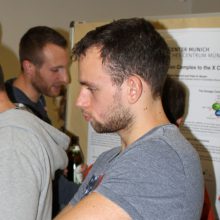
Andriy Goychuk (Alumnus)
| Class of 2016
Country of origin: Germany
MSc: Physics, LMU Munich, Germany
PI: Erwin Frey, Faculty of Physics, LMU Munich
2021
B Ramm, A Goychuk, A Khmelinskaia, P Blumhardt, K. Ganzinger, E Frey, P Schwille; Nature Physics 17, 850–858 (2021); A diffusiophoretic mechanism for ATP-driven transport without motor proteins
View publicationA Kosloff, A W Holle, J Young, M A George, O Heifler, A Goychuk, E Frey, J P Spatz, F Patolsky, R Elnathan, N H Voelcker; Journal of Nanobiotechnology 19, 51 (2021); Optically Transparent Vertical Silicon Nanowire Arrays for Live-Cell Imaging
View publication2020
D Rüdiger, K Kick, A Goychuk, A M Vollmar, E Frey, S Zahler; Cell Reports 32, 108015 (2020); Cell-Based Strain Remodeling of a Nonfibrous Matrix as an Organizing Principle for Vasculogenesis
View publicationF Zhou, S A Schaffer, Ch Schreiber, F J Segerer, A Goychuk, E Frey, J O Rädler; PLOS ONE 15, e0230679 (2020); Quasi-periodic migration of single cells on short microlanes
View publication2019
F Thüroff, A Goychuk, M Reiter, E Frey; eLife 6, e46842 (2019); Bridging the gap between single cell migration and collective dynamics
View publicationA Goychuk & E Frey, Physical Review Letters 123, 178101 (2019); Protein recruitment through indirect mechanochemical interactions
View publication Isabella Graf (Alumna)
Isabella Graf (Alumna)
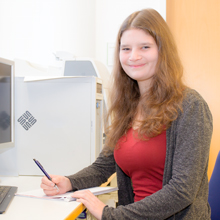
Isabella Graf (Alumna)
| Class of 2015
Country of origin: Germany
MSc: Theoretical and Mathematical Physics, LMU Munich, Germany
PI: Erwin Frey, Faculty of Physics, LMU Munich
Project: Spatially extended stochastic systems
2020
Gartner, F. M., Graf, I. R., Wilke, P., Geiger, P. M., & Frey, E. (2020), Stochastic yield catastrophes and robustness in self-assembly. ELife, 9, 1–37.
View publicationStriebel, M., Graf, I. R., & Frey, E. (2020). A mechanistic view of collective filament motion in active nematic networks. Biophysical Journal, 118(2), 313–324
View publication2018
Bojer, M., Graf, I.R., and Frey, E. (2018). Self-organized system size oscillation of a stochastic lattice-gas model.; Phys. Rev. E 98, 012410
View publication2017
Graf, I.R., and Frey, E. (2017). Generic transport mechanisms for molecular traffic in cellular protrusions. Phys Rev Lett 118, 128101.
View publicationBauer, M., Graf, I.R., Ngampruetikorn, V., Stephens, G.J., and Frey, E. (2017). Exploiting ecology in drug pulse sequences in favour of population reduction. Plos Comput Biol 13, e1005747.
View publication Ferdinand Greiss (Alumnus)
Ferdinand Greiss (Alumnus)
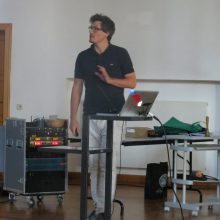
Ferdinand Greiss (Alumnus)
| Class of 2013
Country of origin: Germany
MSc: Biology, Humboldt University Berlin, Germany
PI: Dieter Braun, Faculty of Physics, LMU Munich
CoPI: Ulrike Gaul, Gene Center Munich, Dept. of Biochemistry, LMU
Project: Micro-Sheet Illumination and Cooperative Binding
My research focuses on the development of optical instruments and their application from a biophysical perspective. We study the stochastic behavior of single molecules in the highly opaque and living Drosophila embryo with a novel adaption of reflected light sheet microscopy that I designed. We try to find the connection between single molecule diffusivity and pattern formation on a multicellular scale. Additionally, I am developing a generic approach to characterize the cooperative effect of 3- Body reaction networks. With the combined strength of a newly developed high-throughput binding assay and numerical modelling, we are transferring our knowledge to biological relevant questions. The future application will range from cooperative binding between proteins to boolean switching in artifical DNA reaction networks.
2017
Vogel, S.K., Greiss, F., Khmelinskaia, A., and Schwille, P. (2017). Control of lipid domain organization by a biomimetic contractile actomyosin cortex. eLife 6.
View publicationGreiss, F., Kriegel, F., Braun, D. (2017). Probing the cooperativity of binding networks with high-throughput thermophoresis. Analytical Chemistry 89 (4), 2592-2597.
View publication2016
Greiss, F., Deligiannaki, M., Jung, C., Gaul, U., and Braun, D. (2016). Single-Molecule Imaging in Living Drosophila Embryos with Reflected Light-Sheet Microscopy. Biophys J 110, 939-946.
View publication2015
Reichl, M., Herzog, M., Greiss, F., Wolff, M., and Braun, D. (2015). Understanding the similarity in thermophoresis between single- and double-stranded DNA or RNA. Physical review E, Statistical, nonlinear, and soft matter physics 91, 062709.
View publication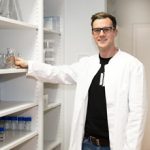 Michael Gropp (Alumnus)
Michael Gropp (Alumnus)
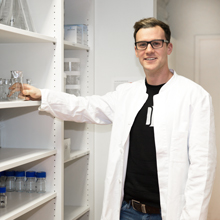
Michael Gropp (Alumnus)
| Class of 2016
Country of origin: Germany
MSc: Biochemistry, LMU Munich, Germany
PI: Ulrich Hartl, Max Planck Institute of Biochemistry, Martinsried
2022
Gropp, M.H.M., Klaips, C.L., Hartl, F.U. (2022): Formation of toxic oligomers of polyQ-expanded Huntingtin by prion-mediated cross-seeding; Mol Cell 82(22), 4290-4306, doi: 10.1016/j.molcel.2022.09.031.
View publication2020
Klaips, C.L., Gropp, M.H.M., Hipp, M.S., and Hartl, F.U. (2020): Sis1 potentiates the stress response to protein aggregation and elevated temperature. Nat Commun 11, 6271, doi: 10.1038/s41467-020-20000-x.
View publication Dandan Guan
Dandan Guan
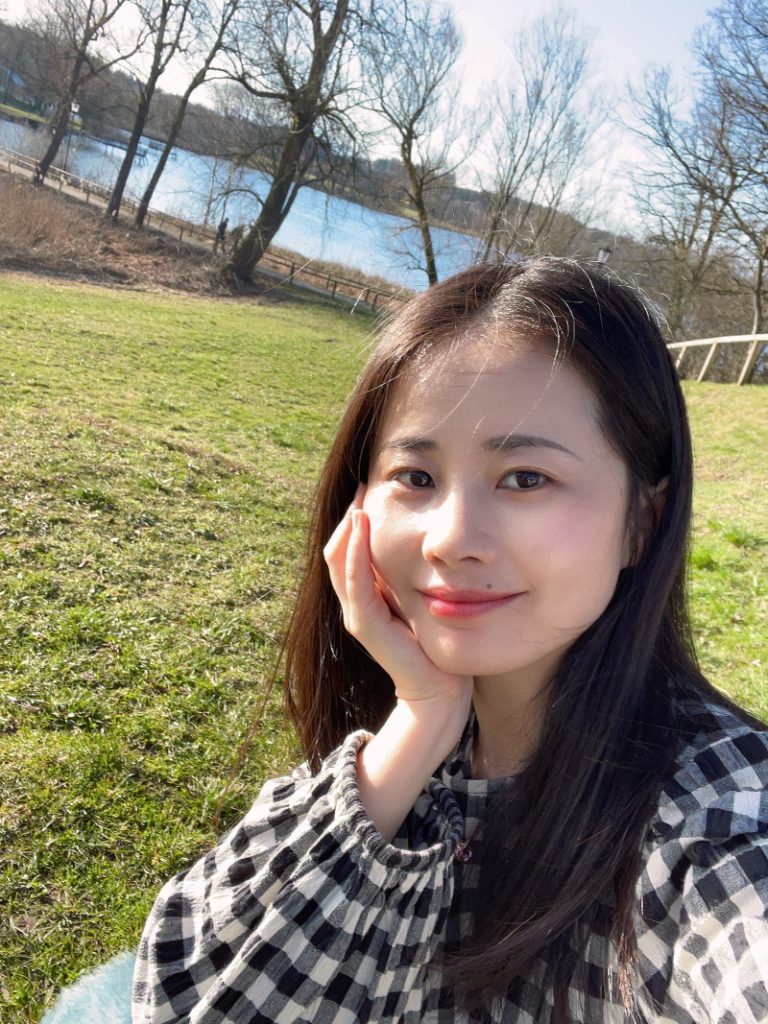
Dandan Guan
| Class of 2024
Country of origin: China
MSc: Peking Union Medical College, Tsinghua University, China
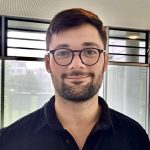 Jakob Hartmann
Jakob Hartmann
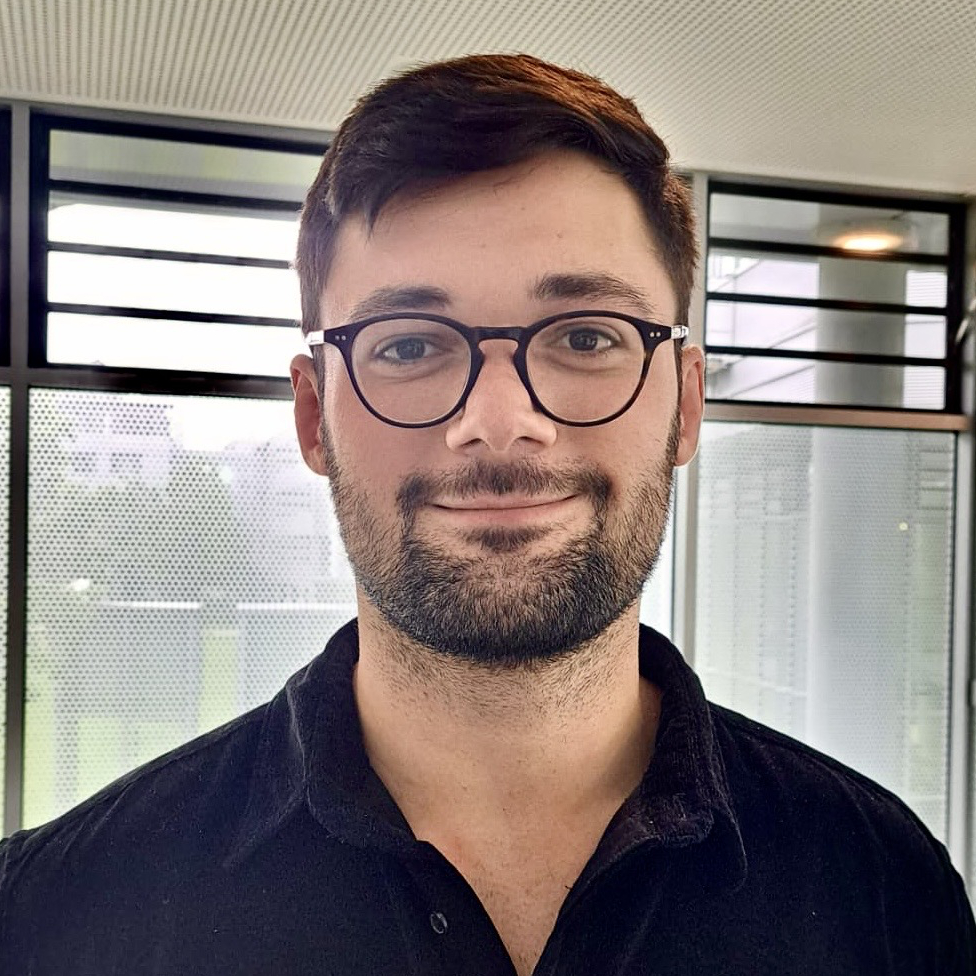
Jakob Hartmann
| Class of 2025
Country of origin: Germany
MSc: Chemistry, LMU Munich, Germany
 Mari Heininen-Brown (Alumna)
Mari Heininen-Brown (Alumna)
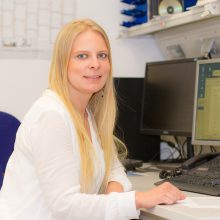
Mari Heininen-Brown (Alumna)
| Class of 2013
Country of origin: Finland
MSc: Bioinformatics, University of Turku, Finland
PI: Eckhard Wolf, Gene Center Munich, Dept. of Biochemistry, LMU
CoPI: Ralf Zimmer, Faculty of Mathematics, Informatics and Statistics, LMU
Project: Molecular Networks Governing Early Bovine Embryo Development
Gene expression profiling is widely used to gain insight into molecular mechanisms of early embryonic development. We study the proteome and the transcriptome in order to identify protein and transcriptional networks involved in development of bovine embryos during the transition of totipotency to pluripotency and during maternal-to-embryonic transition. My PhD project uses somatic-cell nuclear transfer (SCNT) embryos to map out the differences in embryonic genome activation events compared to in vitro fertilized embryos. Based on high-throughput RNA-Seq data I use bioinformatic analyses to map the reprogramming of the nucleus and study the decay rate of the maternal transcripts.
2014
Graf, A., Krebs, S., Heininen-Brown, M., Zakhartchenko, V., Blum, H., and Wolf, E. (2014). Genome activation in bovine embryos: review of the literature and new insights from RNA sequencing experiments. Animal reproduction science 149, 46-58.
View publication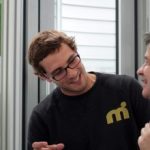 Florian Hinzpeter (Alumnus)
Florian Hinzpeter (Alumnus)
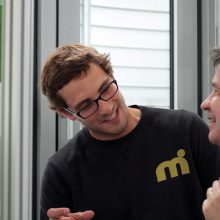
Florian Hinzpeter (Alumnus)
| Class of 2013
Country of origin: Germany
MSc: Physics, LMU Munich, Germany
PI: Ulrich Gerland, Faculty of Physics, TU Munich
CoPI: Peter Becker, Medical Faculty, LMU Munich
Project: Cooperative Nonlinear Dynamical Phenomena in Biological Systems
We study how the spatial arrangement and coordination of enzymes affects the efficiency of a multi-step reaction. These spatial arrangements can be natural as in the Carboxysome micro compartment or engineered with the modern methods of biotechnology. In both cases, fundamental functional tradeoffs emerge, which must be characterized to understand the optimal design principles of such systems.
2017
Hinzpeter, F., Gerland, U., Tostevin, F. (2017). Optimal compartmentalization strategies for metabolic microcompartments. Biophys J 112, 767 – 779
View publication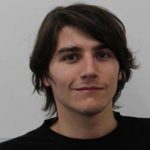 Alan Ianeselli (Alumnus)
Alan Ianeselli (Alumnus)
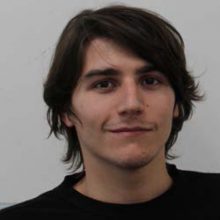
Alan Ianeselli (Alumnus)
| Class of 2017
Country of origin: Italy
MSc: Cellular and Molecular Biotechnology, University of Trento, Italy
PI: Dieter Braun, Faculty of Physics, LMU Munich
2022
A. Ianeselli, D. Tetiker, J. Stein, A. Kühnlein, Ch B. Mast, D. Braun & T.-Y. D. Tang; Non-equilibrium conditions inside rock pores drive fission, maintenance and selection of coacervate protocells; Nature Chemistry volume 14, pages 32–39 (2022)
View publicationA Ianeselli, M Atienza, P W Kudella, U Gerland, Chr B Mast & D Braun: Water cycles in a Hadean CO2 atmosphere drive the evolution of long DNA; Nat. Phys. (2022).
View publication2019
Ianeselli, A.; Mast, C. B.; Braun, D. Periodic Melting of Oligonucleotides by Oscillating Salt Concentrations Triggered by Microscale Water Cycles Inside Heated Rock Pores; Angew. Chemie Int. Ed., https://doi.org/10.1002/anie.201907909.
View publication Rahmi Imamoglu (Alumnus)
Rahmi Imamoglu (Alumnus)
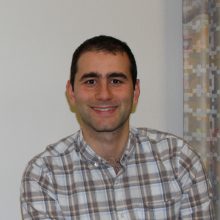
Rahmi Imamoglu (Alumnus)
| Class of 2014
Country of origin: Turkey
MSc: Biotechnology, Istanbul Technical University, Turkey
PI: Ulrich Hartl, Max Planck Institute of Biochemistry, Martinsried
Project: Mechanisms of Chaperone-Assisted Protein Folding
Molecular chaperones assist protein chains to reach their unique three-dimensional structures. The 70-kDa heat shock protein (Hsp70) is a ubiquitously expressed molecular chaperone that plays a significant role in a variety of cellular activities including de novo folding of newly sythesized peptides, refolding of denatured proteins and assisting the translocation of proteins into organelles. In this project, we aim to elucidate the protein folding mechanism of Hsp70.
2020
R. Imamoglu, D. Balchin, M. Hayer-Hartl & F. U. Hart; Nature Communications (2020); Bacterial Hsp70 resolves misfolded states and accelerates productive folding of a multi-domain protein
View publication Hendrik Jock
Hendrik Jock
Hendrik Jock
| Class of 2024
Country of origin: Germany
MSc: Biochemistry, LMU Munich
 Lukas Kater (Class '15 Rep., Alumnus)
Lukas Kater (Class '15 Rep., Alumnus)
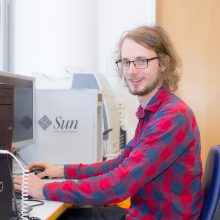
Lukas Kater (Class '15 Rep., Alumnus)
| Class of 2015
Country of origin: Germany
MSc: Biochemistry, LMU Munich, Germany
PI: Roland Beckmann, Gene Center Munich, Dept. of Biochemistry, LMU
Project: Systemic analysis of ribosome biogenesis in human cells
2020
L Kater, N Wagener, O Berninghausen, Th Becker, W Neupert & R Beckmann; Structure of the Bcs1 AAA-ATPase suggests an airlock-like translocation mechanism for folded proteins; Nature Structural & Molecular Biology volume 27, pages142–149(2020)
View publicationL Kater, V Mitterer, M Thoms, J Cheng, O. Berninghausen, R Beckmann, E. Hurt; Construction of the Central Protuberance and L1 Stalk during 60S Subunit Biogenesis; Molecular Cell, Volume 79, Issue 4, 20 August 2020, Pages 615-628.e5
View publication2019
P Tesina, E Heckel, J Cheng, M Fromont-Racine, R Buschauer, L Kater, B Beatrix, O Berninghausen, A Jacquier, Th Becker & R Beckmann; Structure of the 80S ribosome–Xrn1 nuclease complex; Nature Structural & Molecular Biology volume 26, pages275–280(2019)
View publicationL Kater, B Frieg, O Berninghausen, H Gohlke, R Beckmann, A Kedrov; Partially inserted nascent chain unzips the lateral gate of the Sec translocon; EMBO Rep (2019)20:e48191https://doi.org/10.15252/embr.201948191
View publication2018
M Thoms, V Mitterer, L Kater, L Falquet, R Beckmann, D Kressler & E Hurt; Suppressor mutations in Rpf2–Rrs1 or Rpl5 bypass the Cgr1 function for pre-ribosomal 5S RNP-rotation; Nature Communications volume 9, Article number: 4094 (2018)
View publication2017
Kater, L., Thoms, M., Barrio-Garcia, C., Cheng, J., Ismail, S., Ahmed, Y.L., Bange, G., Kressler, D., Berninghausen, O., Sinning, I., et al. (2017). Visualizing the Assembly Pathway of Nucleolar Pre-60S Ribosomes. Cell 171, 1599-1610. e1514.
View publication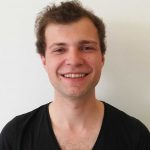 Florian Katzmeier (Alumnus)
Florian Katzmeier (Alumnus)
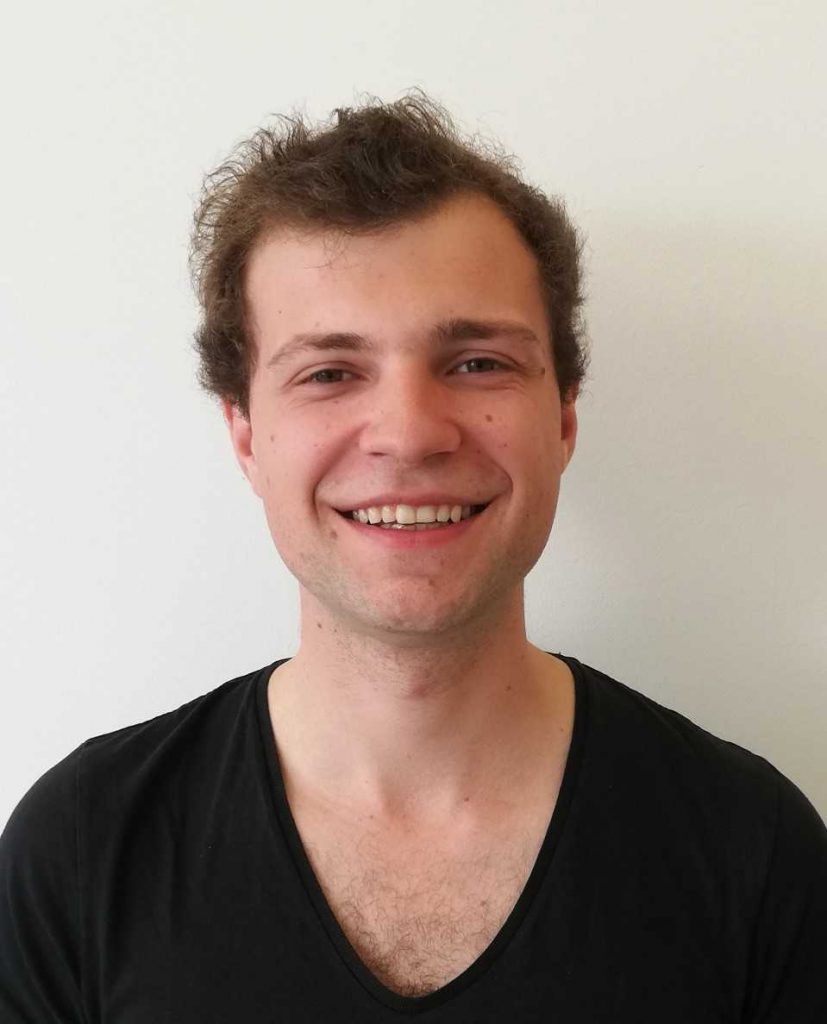
Florian Katzmeier (Alumnus)
| Class of 2019
Country of origin: Germany
MSc: Physics, Technische Universität München, Germany
Fritz Simmel, Physics, TUM
 Alena Khmelinskaia (Alumna)
Alena Khmelinskaia (Alumna)
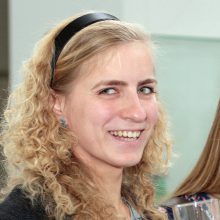
Alena Khmelinskaia (Alumna)
| Class of 2014
Country of origin: Portugal
MSc: Biochemistry, University of Lisbon, Portugal
PI: Petra Schwille, Max Planck Institute of Biochemistry, Martinsried
CoPI: Joachim Rädler, Faculty of Physics, LMU Munich
Project: Development of synthetic DNA-based membrane scaffolds
In this project DNA-origami based synthetic nanostructures are being produced to mimic the mechanism of action of scaffolding proteins. Here, we aim to unravel the minimal requirements for lipid membrane binding, self-organization in 2D as well as recognition or induction of membrane curvature.
2019
H. Eto, N. Soga, H. G. Franquelim, P. Glock, A. Khmelinskaia, L. Kai, M. Heymann, H. Noji and P. Schwille; Design of Sealable Custom-Shaped Cell Mimicries Based on Self- Assembled Monolayers on CYTOP Polymer, ACS Appl. Mater. Interfaces 2019, 11, 21372−21380
View publicationS. Kempter, A. Khmelinskaia, M. T. Strauss, P. Schwille, R. Jungmann, T. Liedl, W. Bae; Single Particle Tracking and Super-Resolution Imaging of Membrane-Assisted Stop-and-Go Diffusion and Lattice Assembly of DNA Origami; ACS Nano, 2019, 132, 996-1002
View publication2018
Franquelim, H.G., Khmelinskaia, A., Sobczak, J.P., Dietz, H., and Schwille, P. (2018). Membrane sculpting by curved DNA origami scaffolds. Nat Commun 9, 811.
View publicationA. Khmelinskaia, J. Mücksch, E. P. Petrov, H. G. Franquelim. P. Schwille; Control of Membrane Binding and Diffusion of Cholesteryl-Modified DNA Origami Nanostructures by DNA Spacers; Langmuir, 2018, 34, 49, 14921-14931
View publicationA. Khmelinskaia, J. Mücksch, F. Conci, G. Chwastek, P. Schwille; FCS Analysis of Protein Mobility on Lipid Monolayers, Open Archive Published: March 28, 2018 DOI:https://doi.org/10.1016/j.bpj.2018.02.031
View publicationW. Ye, S. Celiksoy, A. Jakab, A. Khmelinskaia, T. Heermann, A. Raso, S. V. Wegner, G. Rivas, P. Schwille, R. Ahijado-Guzmán, C. Sönnichsen; Plasmonic Nanosensors Reveal a Height Dependence of MinDE Protein Oscillations on Membrane Features, J. Am. Chem. Soc.2018, 140, 51
View publication2017
Vogel, S.K., Greiss, F., Khmelinskaia, A., and Schwille, P. (2017). Control of lipid domain organization by a biomimetic contractile actomyosin cortex. eLife 6.
View publication2016
Khmelinskaia, A., Franquelim, H.G., Petrov, E.P., and Schwille, P. (2016). Effect of anchor positioning on binding and diffusion of elongated 3D DNA nanostructures on lipid membranes. J Phys D Appl Phys 49.
View publication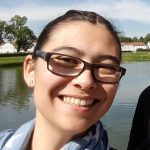 Anna Kiss (Alumna)
Anna Kiss (Alumna)
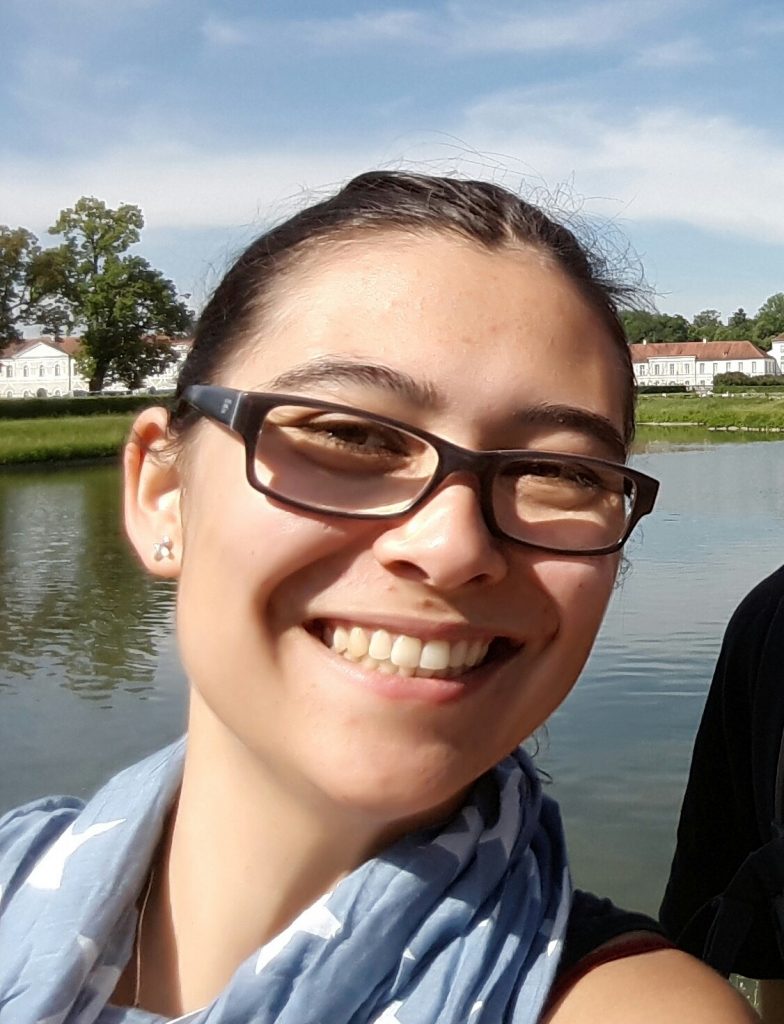
Anna Kiss (Alumna)
| Class of 2018
Country of origin: Germany
MSc: Molecular Life Science, Univ. Lübeck, Germany
Peter Becker, Biomedical Center, LMU Munich
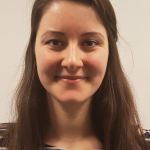 Vera Kleene (Alumna)
Vera Kleene (Alumna)
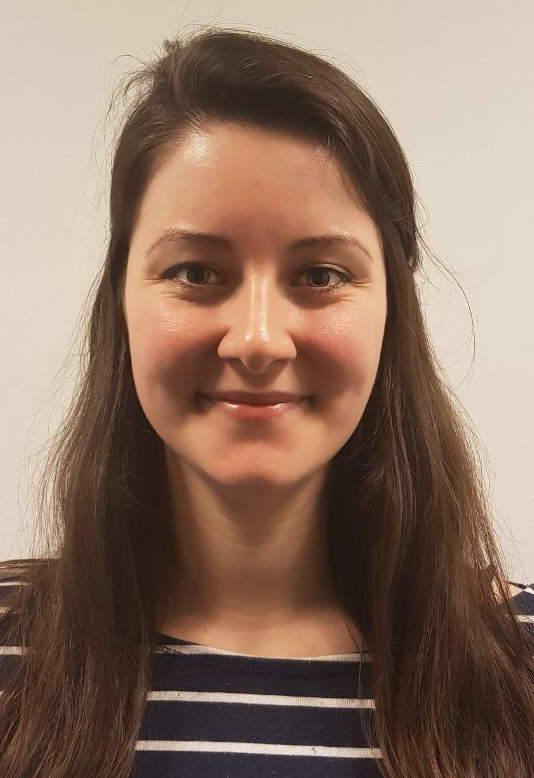
Vera Kleene (Alumna)
| Class of 2018
Country of origin: Germany
MSc: Biochemistry, LMU Munich
Axel Imhof, Biomedical Center, LMU
2023
Vera Kleene, Valentina Corvaglia, Erika Chacin, Ignasi Forne, David B Konrad, Pardis Khosravani, Céline Douat, Christoph F Kurat, Ivan Huc, Axel Imhof: DNA mimic foldamers affect chromatin composition and disturb cell cycle progression; Nucleic Acids Res., 2023 Aug 31; gkad681. doi: 10.1093/nar/gkad681,
View publication Alexandra Knorr (Alumna)
Alexandra Knorr (Alumna)
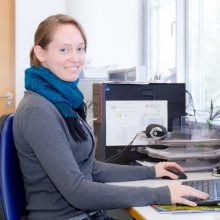
Alexandra Knorr (Alumna)
| Class of 2015
Country of origin: Germany
MSc: Biochemistry, LMU Munich, Germany
PI: Roland Beckmann, Gene Center Munich, Dept. of Biochemistry, LMU
Project: Structural and functional analysis of nascent chain acetylation
2019
A. G. Knorr, C. Schmidt, P. Tesina, O. Berninghausen, T. Becker, B. Beatrix & R. Beckmann, Ribosome–NatA architecture reveals that rRNA expansion segments coordinate N-terminal acetylation, Nature Structural & Molecular Biology 26, 35–39 (2019)
View publicationA G Knorr, Ch Schmidt, P Tesina, O Berninghausen, Th Becker, B Beatrix, R Beckmann; 4Ribosome-NatA architecture reveals that rRNA expansion segments coordinate N-terminal acetylation; Nat Struct Mol Biol; 2019 Jan;26(1):35-39.
View publication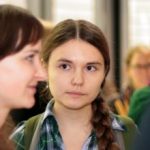 Natalia Kochanova (Alumna)
Natalia Kochanova (Alumna)
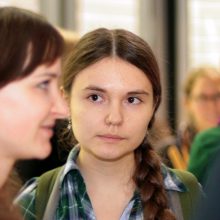
Natalia Kochanova (Alumna)
| Class of 2014
Country of origin: Russia
MSc: Biochemistry, M. V. Lomonosov Moscow State University, Russia
PI: Axel Imhof, Medical Faculty, LMU Munich
Project: Proximity based biotinylation in Drosophila chromatin
We are using engineered ascorbate peroxidase from soybean to label different compartments in Drosophila nuclei. The plan is to capture the proteomic compositions of these chromatin copartments and confirm the localization of newly discovered factors. Based on the information gathered, we will predict and test the biological functions of selected factors.
2021
A. Lukacs, A. W. Thomae, P. Krueger, T. Schauer, A. V. Venkatasubramani, N. Y. Kochanova, W. Aftab, R. Choudhury, I. Forne & A. Imhof: The Integrity of the HMR complex is necessary for centromeric binding and reproductive isolation in Drosophila, https://doi.org/10.1371/journal.pgen.1009744
View publication2020
N. Kochanova, T. Schauer, G. P. Mathias, A. Lukacs, A. Schmidt, A. Flatley, A. Schepers A, A. W. Thomae, A. Imhof; Nucleic Acids Res. (2020); A multi-layered structure of the interphase chromocenter revealed by proximity-based biotinylation.
View publication2018
Kochanova, N., Schauer, T., Mathias, G.P., Lukacs, A., Schmidt, A., Flatley, A., Schepers,A., Thomae, A.W., Imhof, A. (2018). Intricate structure of the interphase chromocenter revealed by the analysis of a factor involved in species formation. bioRxiv. doi.org/10.1101/441675
View publication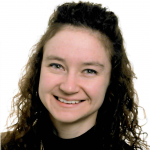 Lara Charlotte Kopp
Lara Charlotte Kopp
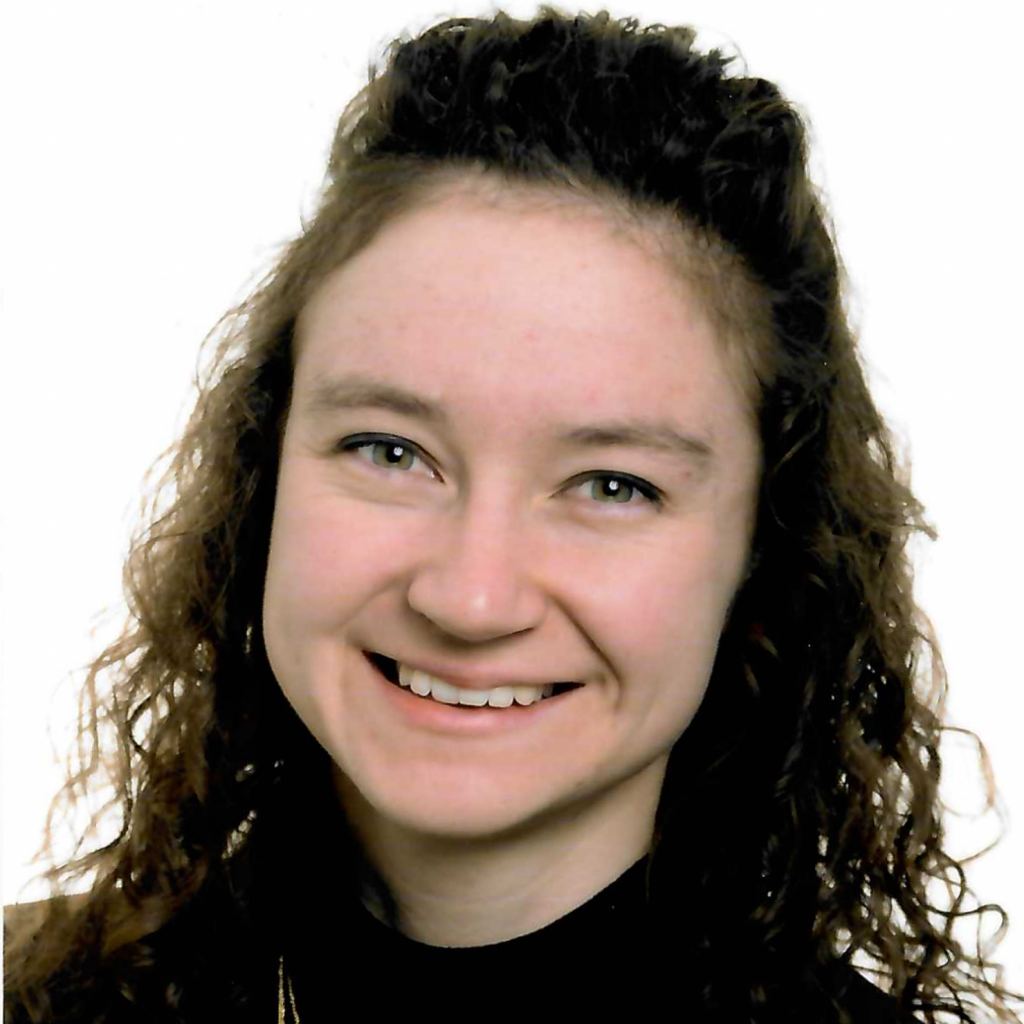
Lara Charlotte Kopp
| Class of 2025
Country of origin: Germany
MSc: Biomolecular Engineering, TU Darmstadt, Germany
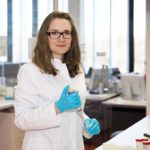 Hanna Kratzat (Alumna)
Hanna Kratzat (Alumna)
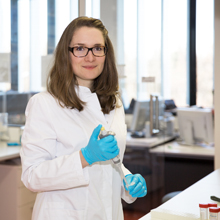
Hanna Kratzat (Alumna)
| Class of 2016
Country of origin: Germany
MSc: Biochemistry, Ernst-Moritz-Arndt University Greifswald, Germany
PI: Roland Beckmann, Gene Center Munich, Dept. of Biochemistry, LMU
2022
Saito K, Kratzat H, Campbell A, Buschauer R, Burroughs AM, Berninghausen O, Aravind L, Green R, Beckmann R, Buskirk AR: Ribosome collisions induce mRNA cleavage and ribosome rescue in bacteria; Nature. in press; doi: https://doi.org/10.1038/s41586-022-04416-7
View publicationCzech L, Mais CN, Kratzat H, Sarmah P, Giammarinaro P, Freibert SA, Esser HF, Musial J, Berninghausen O, Steinchen W, Beckmann R, Koch HG, Bange G: Inhibition of SRP-dependent protein secretion by the bacterial alarmone (p)ppGpp; Nat Commun. in press, doi:https://doi.org/10.1038/s41467-022-28675-0
View publication2021
Kratzat H, Mackens-Kiani T, Ameismeier M, Potocnjak M, Cheng J, Dacheux E, Namane A, Berninghausen O, Herzog F, Fromont-Racine M, Becker T, Beckmann R: A structural inventory of native ribosomal ABCE1-43S pre-initiation complexes; EMBO J. 2021 Jan 4;40(1):e105179. doi: 10.15252/embj.2020105179. Epub 2020 Dec 8. PMID: 33289941; PMCID: PMC7780240.
View publication2020
Thoms, M., Buschauer, R., Ameismeier, M., Koepke, L., Denk, T., Hirschenberger, M., Kratzat, H., Hayn, M., Mackens-Kiani, T., Cheng, J., et al. (2020); Structural basis for translational shutdown and immune evasion by the Nsp1 protein of SARS-CoV-2. Science 369, 1249-1255.
View publicationNürenberg-Goloub E, Kratzat H, Heinemann H, Heuer A, Kötter P, Berninghausen O, Becker T, Tampé R, Beckmann R.: Molecular analysis of the ribosome recycling factor ABCE1 bound to the 30S post-splitting complex.; EMBO J. 2020 May 4;39(9):e103788. doi: 10.15252/embj.2019103788. Epub 2020 Feb 17. PMID: 32064661; PMCID: PMC7196836.
View publicationWells JN, Buschauer R, Mackens-Kiani T, Best K, Kratzat H, Berninghausen O, Becker T, Gilbert W, Cheng J, Beckmann R.: Structure and function of yeast Lso2 and human CCDC124 bound to hibernating ribosomes; PLoS Biol. 2020 Jul 20;18(7):e3000780. doi: 10.1371/journal.pbio.3000780. PMID: 32687489; PMCID: PMC7392345.
View publicationBlagotinsek V, Schwan M, Steinchen W, Mrusek D, Hook JC, Rossmann F, Freibert SA, Kratzat H, Murat G, Kressler D, Beckmann R, Beeby M, Thormann KM, Bange G.: An ATP-dependent partner switch links flagellar C-ring assembly with gene expression: Proc Natl Acad Sci U S A. 2020 Aug 25;117(34):20826-20835. doi: 10.1073/pnas.2006470117. Epub 2020 Aug 11. PMID: 32788349; PMCID: PMC7456076.
View publication Linda Krause (Class '14 Rep., Alumna)
Linda Krause (Class '14 Rep., Alumna)

Linda Krause (Class '14 Rep., Alumna)
| Class of 2014
Country of origin: Germany
MSc: Computational Life Sciences, University of Lübeck, Germany
PI: Fabian Theis, Helmholtz Center Munich, TU Munich
Project: Analysis of the Cell Heterogeneity in Skin Diseases
T helper cells (Th cells) play a crucial role in the adaptive immune system. Clustering cytokine measurements of stable Th cell clones derived from human skin, allows us to identify novel Th cell subsets. We next aim to characterize the Th cell phenotypes on a genome-wide methylation and transcriptional level through applying statistical models and machine learning algorithms.
2017
Milger, K., Gotschke, J., Krause, L., Nathan, P., Alessandrini, F., Tufman, A., Fischer, R., Bartel, S., Theis, F.J., Behr, J., et al. (2017). Identification of a plasma miRNA biomarker signature for allergic asthma: A translational approach. Allergy 72, 1962-1971.
View publicationGarzorz-Stark, N., Lauffer, F., Krause, L., Thomas, J., Atenhan, A., Franz, R., Roenneberg, S., Boehner, A., Jargosch, M., Batra, R., et al. (2017). Toll-like receptor 7/8 agonists stimulate plasmacytoid dendritic cells to initiate TH17-deviated acute contact dermatitis in human subjects. Journal of Allergy and Clinical Immunology.
View publication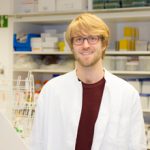 Simon Kretschmer (Alumnus)
Simon Kretschmer (Alumnus)
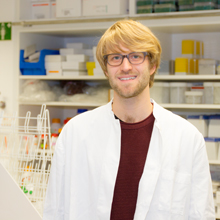
Simon Kretschmer (Alumnus)
| Class of 2013
Country of origin: Germany
MSc: Biochemistry, LMU Munich, Germany
PI: Petra Schwille, MPI of Biochemistry, Martinsried
CoPI: Erwin Frey, Faculty of Physics, LMU Munich
Project: Engineering a pattern-forming protein system
In my PhD project, I investigate how self-organized protein patterns emerge from protein-protein and protein-lipid interactions. In particular, I am interested in how alterations in reaction and binding rates modulate the spatiotemporal properties and robustness of the protein patterns. Toward this end, I apply techniques from protein and membrane biochemistry as well as fluorescence microscopy.
2019
Glock P, Ramm B, Heermann T, Kretschmer S, Schweizer J, Mücksch J, Alagöz G, Schwille P (2019) Stationary patterns in a two-protein reaction-diffusion system, ACS Synth Biol 8(1):148-157
View publication2018
Denk, J., Kretschmer, S., Halatek, J., Hartl, C., Schwille, P., and Frey, E. (2018). MinE conformational switching confers robustness on self-organized Min protein patterns. Proceedings of the National Academy of Sciences of the United States of America. DOI: 10.1073/pnas.1719801115
View publicationKretschmer, S., Harrington, L., and Schwille, P. (2018). Reverse and forward engineering of protein pattern formation. Philosophical Transactions of the Royal Society B: Biological Sciences 373.
View publication2017
Kretschmer, S., Zieske, K., and Schwille, P. (2017). Large-scale modulation of reconstituted Min protein patterns and gradients by defined mutations in MinE’s membrane targeting sequence. PloS one 12, e0179582.
View publication2016
Kretschmer, S., and Schwille, P. (2016). Pattern formation on membranes and its role in bacterial cell division. Current opinion in cell biology 38, 52-59.
View publication2015
Kretschmer, S., and Schwille, P. (2015). Rekonstitution biologischer Selbstorganisation in vitro. BIOspektrum 21, 148-150.
View publication2014
Kretschmer, S., and Schwille, P. (2014). Toward Spatially Regulated Division of Protocells: Insights into the E. coli Min System from in Vitro Studies. Life 4, 915-928.
View publication Rafał Krzysztoń (Alumnus)
Rafał Krzysztoń (Alumnus)
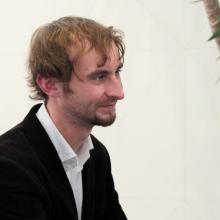
Rafał Krzysztoń (Alumnus)
| Class of 2013
Country of origin: Poland
MSc: Biophysics, Adam Mickiewicz University, Pozna, Poland
PI: Joachim Rädler, Faculty of Physics, LMU Munich
CoPI: Fabian Theis, Helmholtz Center Munich, TU Munich
Project: Quantitative Studies on Artificial Gene Regulatory Circuits
RNA interference (RNAi) is a process of target-specific degradation of mRNA, guided by small interfering RNA (siRNA) template. Gene silencing by RNAi became the key technology for functional genomics and systems biology. Moreover, it shows promises for development of novel siRNA-based therapeutics. In this study, we are exploring the cell-to-cell variances in dynamics of gene silencing after siRNA transfection using non-viral vectors. By combining the cell cultures on micropatterned surfaces with time-lapse fluorescence microscopy we are capable of tracking dynamic changes of targeted green fluorescent protein levels (eGFP) inside each cell in high-throughput manner. Single-cell expression time-courses obtained in this way could be modeled and statistically analyzed. With this approach we can reveal the real single-cell behavior and population heterogeneity in cellular responses – features that are not accessible by population-averaged biochemical assays.
2019
Krzysztoń R, Woschée D, Reiser A, Schwake G, Strey HH, Rädler JO. Single-cell kinetics of siRNA-mediated mRNA degradation. Nanomedicine: Nanotechnology, Biology and Medicine. 2019;21:102077.
View publicationR. Krzysztoń, D. Woschée, A. Reiser, G. Schwake, H. H. Strey, J. O. Rädler; nano, 21, October 2019, 102077; Single-cell kinetics of siRNA-mediated mRNA degradation
View publication2017
Krzyszton, R., Salem, B., Lee, D.J., Schwake, G., Wagner, E., Rädler, J.O. (2017). Microfluidic self-assembly of folate-targeted monomolecular siRNA-lipid nanoparticles. Nanoscale 9, 7442-7453.
View publication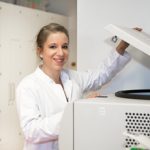 Alexandra Kühnlein (Class '16 Rep., Alumna)
Alexandra Kühnlein (Class '16 Rep., Alumna)
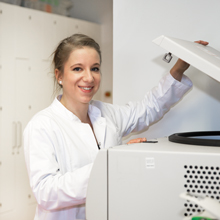
Alexandra Kühnlein (Class '16 Rep., Alumna)
| Class of 2016
Country of origin: Germany
MSc: Physics, University of Lund, Sweden
PI: Dieter Braun, Faculty of Physics, LMU Munich
2022
A. Ianeselli, D. Tetiker, J. Stein, A. Kühnlein, Ch B. Mast, D. Braun & T.-Y. D. Tang; Non-equilibrium conditions inside rock pores drive fission, maintenance and selection of coacervate protocells; Nature Chemistry volume 14, pages 32–39 (2022)
View publication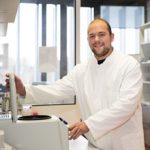 Tilman Kurz (Alumnus)
Tilman Kurz (Alumnus)
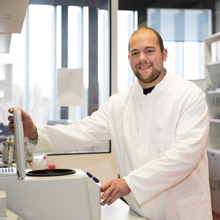
Tilman Kurz (Alumnus)
| Class of 2016
Country of origin: Germany
MSc: Biochemistry and Molecular Biology, University of Bayreuth, Germany
PI: Thomas Brocker, Medical Faculty, LMU Munich
2020
J. Kranich, N.-K. Chlis, L. Rausch, A. Latha, M. Schifferer, T. Kurz, A. Foltyn-Arfa Kia, M. Simons, F. J. Theis & Th. Brocker; In vivo identification of apoptotic and extracellular vesicle-bound live cells using image-based deep learning; Journal of Extracellular Vesicles Volume 9, 2020 – Issue 1, Article: 1792683
View publication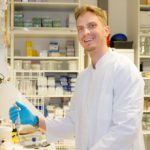 Gunnar Kuut (Alumnus)
Gunnar Kuut (Alumnus)
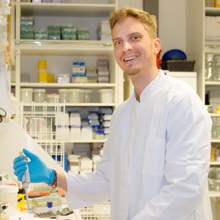
Gunnar Kuut (Alumnus)
| Class of 2015
Country of origin: Estonia
MSc: Biology, LMU Munich, Germany
PI: Veit Hornung, Gene Center Munich, Dept. of Biochemistry, LMU
 Erik Ländström (until Oct 2019)
Erik Ländström (until Oct 2019)
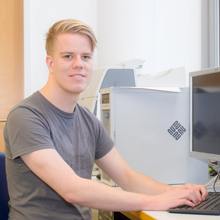
Erik Ländström (until Oct 2019)
| Class of 2015
Country of origin: Sweden
MSc: Molecular Biology, University of Gothenburg, Sweden
PI: Eckhard Wolf, Gene Center Munich, Dept. of Biochemistry, LMU
2019
2017
Blutke, A., Renner, S., Flenkenthaler, F., Backman, M., Haesner, S., Kemter, E., Landstrom, E., Braun-Reichhart, C., Albl, B., Streckel, E., et al. (2017). The Munich MIDY Pig Biobank – A unique resource for studying organ crosstalk in diabetes. Mol Metab 6, 931-940.
View publication Marius Lange (Class '17 Rep., Alumnus)
Marius Lange (Class '17 Rep., Alumnus)
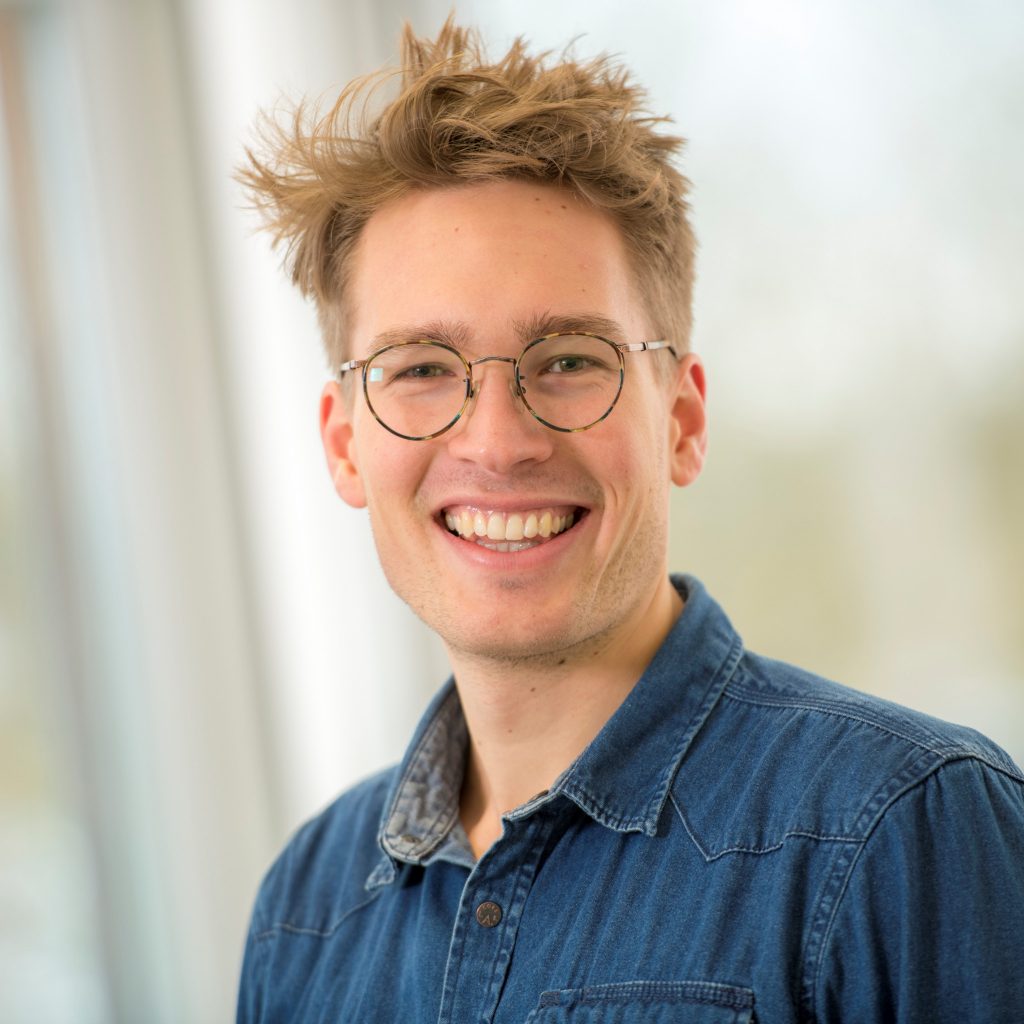
Marius Lange (Class '17 Rep., Alumnus)
| Class of 2017
Country of origin: Germany
MSc: Applied Mathematics, Oxford, UK
PI: Fabian Theis, Helmholtz Center Munich, TU Munich
Project: Inferring single cell regulatory networks and dynamics
2020
V. Bergen, M. Lange, S. Peidli, F. A. Wolf, F. J. Theis; Nature biotechnology 38 (12), 1408-1414; Generalizing RNA velocity to transient cell states through dynamical modeling
View publicationM Strunz, Lukas M Simon, M Ansari, J J Kathiriya, I Angelidis, Ch H Mayr, G Tsidiridis, M Lange, L F Mattner, M Yee, P Ogar, A Sengupta, I Kukhtevich, R Schneider, Z Zhao, C Voss, T Stoeger, J HL Neumann, A Hilgendorff, J Behr, M O’Reilly, M Lehmann, G Burgstaller, M Königshoff, H A Chapman, F J Theis, H B Schiller; Nature communications 11 (1), 1-20; Alveolar regeneration through a Krt8+ transitional stem cell state that persists in human lung fibrosis
View publicationM Lange, V Bergen, M Klein, M Setty, B Reuter, M Bakhti, H Lickert, M Ansari, J Schniering, H B Schiller, D Pe’er, F J Theis; doi: https://doi.org/10.1101/2020.10.19.345983; CellRank for directed single-cell fate mapping
View publication2019
S. Tritschler, M. Büttner, D. S. Fischer, M. Lange, V. Bergen, H. Lickert, F. J. Theis, Concepts and limitations for learning developmental trajectories from single cell genomics, Development 2019 146: dev170506
View publicationF. Erhard, MAP Baptista, T Krammer, T Hennig, M. Lange, P Arampatzi, C. S. Jürges, F. J. Theis, A.-E. Saliba, L. Dölken; Nature, 419–423, 19 (2019); scSLAM-seq reveals core features of transcription dynamics in single cells
View publicationC. Cartis, N. I. M. Gould, M. Lange; BIT Numerical Mathematics, 1-7, (2019); On monotonic estimates of the norm of the minimizers of regularized quadratic functions in Krylov spaces
View publication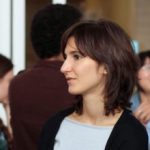 Ilaria Lavagi (Alumna)
Ilaria Lavagi (Alumna)
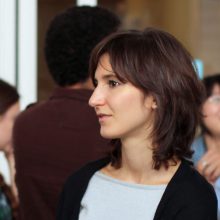
Ilaria Lavagi (Alumna)
| Class of 2014
Country of origin: Italy
MSc: Biology and Bioinformatics, University of Geneva, Switzerland
PI: Eckhard Wolf, Gene Center Munich, Dept. of Biochemistry, LMU
Project: Maternal-to-Embryonic Transition and early Lineage Specificationin Non-Rodent Mammalian Embryos
During the early bovine embryonic development, distinct orchestrated changes take place in gene transcription, yielding dedicated gene expression profiles. In this project we use RNA sequencing to study the influence of localization of single cells on gene expression pattern and thus to follow onset of development of embryonic cell lineages.
2018
Lavagi, I., Krebs, S., Simmet, K., Beck, A., Zakhartchenko, V., Wolf, E., and Blum, H. (2018). Single-cell RNA sequencing reveals developmental heterogeneity of blastomeres during major genome activation in bovine embryos. Sci Rep 8, 4071.
View publication Bronislava Leonaitė-Pittelkov (Alumna)
Bronislava Leonaitė-Pittelkov (Alumna)
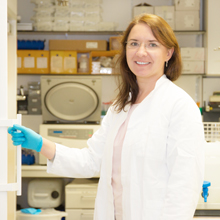
Bronislava Leonaitė-Pittelkov (Alumna)
| Class of 2014
Country of origin: Lithuania
MSc: Biochemistry, LMU Munich, Germany
PI: Elena Conti, Max Planck Institute of Biochemistry, Martinsried
CoPI: Petra Schwille, Max Planck Institute of Biochemistry, Martinsried
Project: Mechanistic Studies of the Ski Protein
The major goal of the project is to obtain a high-resolution crystal structure of Sen1 helicase core in order to understand the mechanistic site of RNA/DNA binding and helicase activity.
2017
Leonaite, B., Han, Z., Basquin, J., Bonneau, F., Libri, D., Porrua, O., and Conti, E. (2017). Sen1 has unique structural features grafted on the architecture of the Upf1-like helicase family. The EMBO journal 36, 1590-1604.
View publication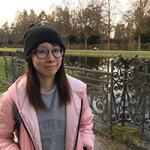 Ching Yee Leung
Ching Yee Leung
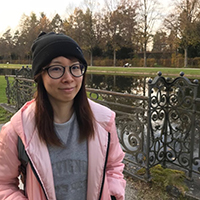
Ching Yee Leung
| Class of 2019
Country of origin: Hong Kong
MSc: Physics, Chinese University of Hong Kong, China
Erwin Frey, Physics, LMU
Project: Pattern formation
Pattern formation is crucial in biology as it offers a theoretical framework for understanding complex and spatially organized patterns in biological systems. Reaction-diffusion models are one of the most successful theories in this regard, with the 2-component mass conserving reaction diffusion model (2C-McRD) being the simplest. The local equilibria theory can well describe 2C-McRD, but more complex systems with additional components and conserved species have a significant gap between the 2C-McRD and multiple-component McRD (MC-McRD). Simple models like the Min system have been modified, but it leads to an increase in complexity and requires numerical simulations. To address this gap, the goal is to generalize the local equilibria theory for more complex systems by identifying important subspaces in the phase space of MC-McRD systems and classifying their behavior, which is different from the standard approach of reducing model complexity while retaining the main features.
2020
M. C. Wigbers, F. Brauns, C. Y. Leung and E. Frey; Flow Induced Symmetry Breaking in a Conceptual Polarity Model, Cells 2020, 9(6), 1524;
View publication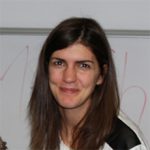 Chiara Lincetto (Alumna)
Chiara Lincetto (Alumna)
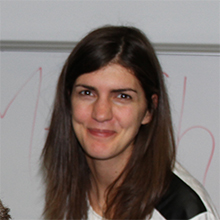
Chiara Lincetto (Alumna)
| Class of 2017
Country of origin: Italy
Laurea Magistrale: Medical Biotechnologies, University of Padua, Italy
PI: Christoph Klein, Medical Faculty, LMU Munich
 Garp Linder
Garp Linder
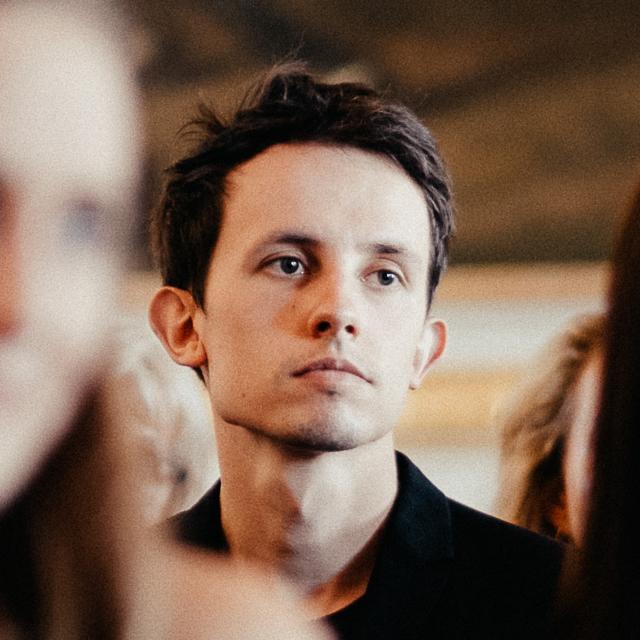
Garp Linder
| Class of 2023
Country of origin: Germany
MSc: Biology, LMU Munich
Project: DNA shape read-out of the INO80 chromatin remodeler revealed by single-molecule imaging
2021
O’Neill, L., Linder, G., van Buuren, M., & von Bayern, A.M.P. (2021). New Caledonian crows and hidden causal agents revisited; Animal Behavior and Cognition, 8(2), 166-189.
View publication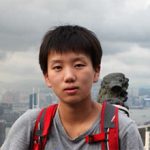 Liucong Ling (Alumna)
Liucong Ling (Alumna)
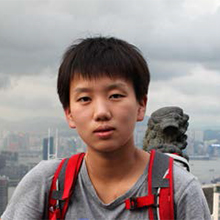
Liucong Ling (Alumna)
| Class of 2017
Country of origin: China
MSc: Biochemistry and Cell Biology, State University of New York at Stony Brook, USA
PI: Nicolas Gompel, Dept. of Biology, LMU
Project: Enhancer regulatory mechanisms
I am using molecular biology, biochemistry, and bioinformatics tools to study the enhancer regulatory mechanisms, specifically on chromatin accessibility dynamics during animal development and the mechanisms of transcription factor and DNA binding.
2023
Ling, L., Mühling, B., Jaenichen, R., and Gompel, N.: Increased chromatin accessibility promotes the evolution of a transcriptional silencer in Drosophila., Sci. Adv. 9, (2023).
View publication2020
Xin, Y., Poul, Y. Le, Ling, L., Museridze, M., Mühling, B., Jaenichen, R., Osipova, E., and Gompel, N.: Enhancer evolutionary co-option through shared chromatin accessibility input, Proc. Natl. Acad. Sci. 117, 20636–20644 (2020).
View publicationPoul, Y. Le, Xin, Y., Ling, L., Mühling, B., Jaenichen, R., Hörl, D., Bunk, D., Harz, H., Leonhardt, H., Wang, Y., et al., & Museridze M, Gompel, N: Regulatory encoding of quantitative variation in spatial activity of a Drosophila enhancer. Sci. Adv. 6, eabe2955 (2020).
View publication Mohammad Lotfollahi (Alumnus)
Mohammad Lotfollahi (Alumnus)

Mohammad Lotfollahi (Alumnus)
| Class of 2017
Country of origin: Iran
MSc: Computer Engineering, Sharif University of Technology, Tehran, Iran
PI: Fabian Theis, Helmholtz Center Munich, TU Munich
2023
Lotfollahi, M., Rybakov, S., Hrovatin, K. et al., Theis, F. J., Biologically informed deep learning to query gene programs in single-cell atlases. Nat Cell Biol (2023). https://doi.org/10.1038/s41556-022-01072-x
View publication2022
M Lotfollahi, M Naghipourfar, M D Luecken, M Khajavi, M Büttner, M Wagenstetter, Ž Avsec, A Gayoso, N Yosef, M Interlandi, S Rybakov, A V Misharin & F J Theis, Mapping single-cell data to reference atlases by transfer learning, Nature Biotechnology, 40, 121–130 (2022)
View publicationG Palla, H Spitzer, M Klein, D Fischer, A Chr Schaar, L B Kuemmerle, S Rybakov, I L Ibarra, O Holmberg, I Virshup, M Lotfollahi, S Richter & F J Theis Squidpy: a scalable framework for spatial omics analysis, Nature Methods, 19, 171–178 (2022)
View publicationA. Gayoso, et al. M Lotfollahi & F J Theis: A Python library for probabilistic analysis of single-cell omics data, Nature Biotechnology, 40, 163–166 (2022)
View publication2021
M Lotfollahi, F A Wolf, F J Theis: Machine learning for perturbational single-cell omics, Cell Systems, 12, 6, 16, 2021, 522-537
View publication2020
M Lotfollahi, M J Siavoshani, R S Hossein Zade & M Saberian, Deep packet: a novel approach for encrypted traffic classification using deep learning, Soft Computing, 24, 1999–2012 (2020)
View publicationM Lotfollahi, M Naghipourfar, F J Theis, F A Wolf: Conditional out-of-distribution generation for unpaired data using transfer VAE, Bioinformatics, 36, Issue Supplement_2, 2020, i610–i617
View publication2019
M Lotfollahi, F A Wolf & F. J. Theis, scGen predicts single-cell perturbation responses, Nature Methods, 16, 715–721 (2019)
View publication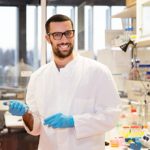 Andrea Lukacs (Class '14 Rep.)
Andrea Lukacs (Class '14 Rep.)
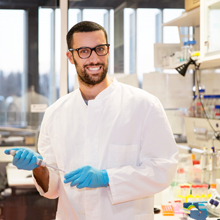
Andrea Lukacs (Class '14 Rep.)
| Class of 2014
Country of origin: Italy
MSc: Genetics and Molecular Biology, University of Rome La Sapienza, Italy
PI: Axel Imhof, Medical Faculty, LMU Munich
Project: Biochemical Characterization of the Speciation Complex in Drosophila melanogaster
Hmr and Lhr are two genetically interacting genes responsible for post-reproductive isolation of D. melanogaster and simulans hybrids. The main goal of my project is to shed light on the mechanisms responsible for the separation of these two species by characterizing the composition and the regulation of Hmr/Lhr-involving protein complexes.
2021
A. Lukacs, A. W. Thomae, P. Krueger, T. Schauer, A. V. Venkatasubramani, N. Y. Kochanova, W. Aftab, R. Choudhury, I. Forne & A. Imhof: The Integrity of the HMR complex is necessary for centromeric binding and reproductive isolation in Drosophila, https://doi.org/10.1371/journal.pgen.1009744
View publication2020
N. Kochanova, T. Schauer, G. P. Mathias, A. Lukacs, A. Schmidt, A. Flatley, A. Schepers A, A. W. Thomae, A. Imhof; Nucleic Acids Res. (2020); A multi-layered structure of the interphase chromocenter revealed by proximity-based biotinylation.
View publication2019
Cooper, J.C., Lukacs, A., Reich, S., Schauer, T., Imhof, A., Phadnis, N. (2018). Altered Localization of Hybrid Incompatibility Proteins in Drosophila,
Molecular Biology and Evolution, , msz105, https://doi.org/10.1093/molbev/msz105
View publication2017
Gerland, T.A., Sun, B., Smialowski, P., Lukacs, A., Thomae, A.W., and Imhof, A. (2017). The Drosophila speciation factor HMR localizes to genomic insulator sites. PloS one 12, e0171798.
View publication Frea Mehta (until 2020)
Frea Mehta (until 2020)
Frea Mehta (until 2020)
| Class of 2018
Country of origin: USA
BSE: Chemical Engineering
Joachim O. Rädler, Faculty of Physics, LMU
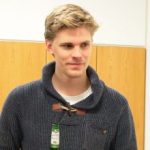 Joris Messelink (Alumnus)
Joris Messelink (Alumnus)

Joris Messelink (Alumnus)
| Class of 2016
Country of origin: Netherlands
MSc: Theoretical Physics, University of Amsterdam & VU University Amsterdam, Netherlands
PI: Chase Broedersz, Faculty of Physics, LMU Munich
2021
J. J. B. Messelink, M. C. F. van Teeseling, J. Janssen, M. Thanbichler & C. P. Broedersz: Learning the distribution of single-cell chromosome conformations in bacteria reveals emergent order across genomic scales, Nature Communications, 12, 1963 (2021)
View publicationJ. J. B. Messelink, F. Meyer, M. Bramkamp, C. P. Broedersz: Single-cell growth inference of Corynebacterium glutamicum reveals asymptotically linear growth, eLife 2021; 10:e70106
View publication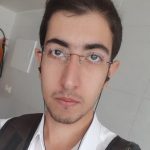 Mohammad Mokhtari
Mohammad Mokhtari
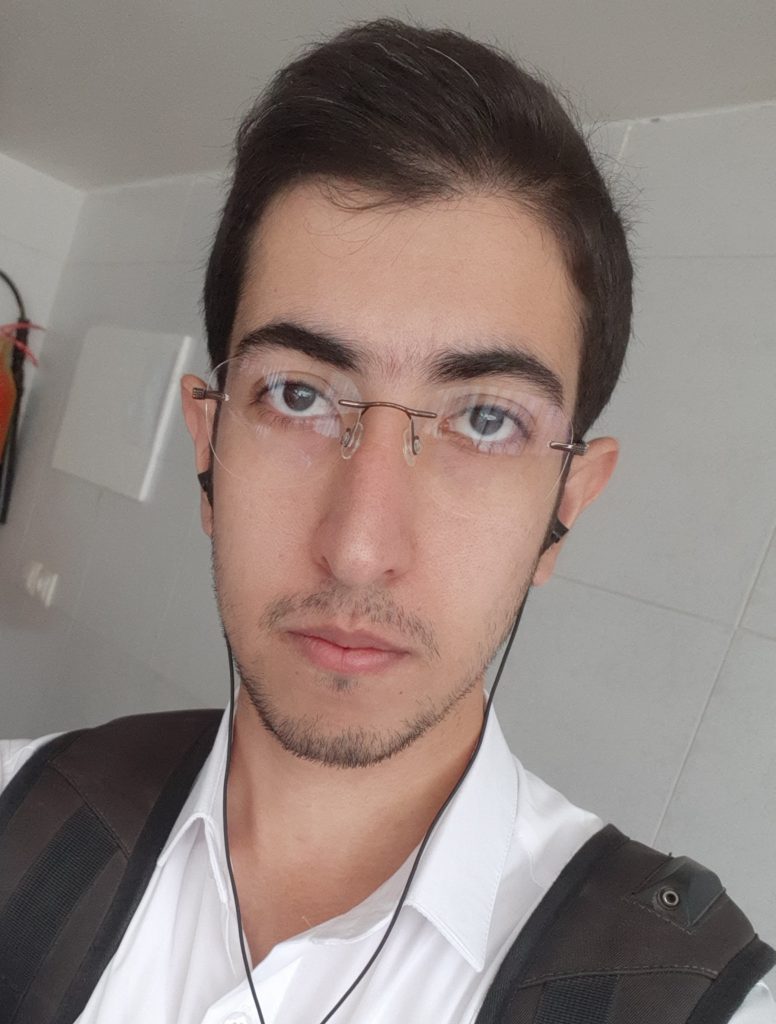
Mohammad Mokhtari
| Class of 2022
Country of origin: Iran
PI: Johanna Klughammer, Gene Center, LMU
CoPI:
Project: Spatio-molecular characterization of hepatocellular carcinoma immunotherapy in a mouse model
 Pablo Monteagudo Mesas (Alumnus)
Pablo Monteagudo Mesas (Alumnus)
Pablo Monteagudo Mesas (Alumnus)
| Class of 2018
Country of origin: Spain
MSc: Physics, LMU Munich, Germany
Stefan Canzar, Gene Center Munich, Dept of Biochemistry, LMU
2023
Luka Borozan, Francisca Rojas Ringeling, Shao-Yen Kao, Elena Nikonova, Pablo Monteagudo-Mesas, Domagoj Matijevic, Maria L. Spletter, Stefan Canzar, Counting pseudoalignments to novel splicing events. Bioinformatics (2023).
View publication2022
Pablo Monteagudo-Mesas, Cornelia Brönner, Parastou Kohvaei, Haris Amedi, Stefan Canzar, Mario Halic.
Ccr4–Not complex reduces transcription efficiency in heterochromatin. Nucleic Acids Research (2022).
Florian Eberhardt, Eric A. Bushong, Sébastien Phan, Steven Peltier, Pablo Monteagudo-Mesas, Tino Weinkauf, Andreas V. M. Herz, Martin Stemmler and Mark Ellisman, A Uniform and Isotropic Cytoskeletal Tiling Fills Dendritic Spines, eNeuro (2022).
View publication2019
Van Do H, Blažević M, Monteagudo P, Borozan L, Elbassioni K, Laue S, Rojas Ringeling F, Matijević D, Canzar C, Dynamic pseudo-time warping of complex single-cell trajectories; Research in Computational Molecular Biology. RECOMB 2019. Lecture Notes in Computer Science
View publication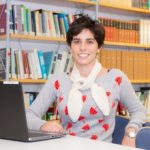 Federica Mura (Alumna)
Federica Mura (Alumna)

Federica Mura (Alumna)
| Class of 2015
Country of origin: Italy
Laurea Magistrale: Physics, University of Padua, Italy
PI: Chase Broedersz, Faculty of Physics, LMU Munich
Project: Active fluctuations in noisy biological systems
2019
F Mura, G Gradziuka and C. P. Broedersz, Soft Matter, Mesoscopic non-equilibrium measures can reveal intrinsic features of the active driving, Issue 40, 2019
View publicationG Gradziuk, F Mura, and C P Broedersz, Scaling behavior of nonequilibrium measures in internally driven elastic assemblies, Phys. Rev. E 99, 052406
View publication2018
Gnesotto, F., Mura, F., Gladrow, J., and Broedersz, C.P. Broken detailed balance and non-equilibrium dynamics in living systems. Rep Prog Phys. 2018 Jun;81(6):066601.
View publicationMura, F., Gradziuk, G., and Broedersz, C. P. (2018). Non-equilibrium scaling behaviour in driven soft biological assemblies.,Phys. Rev. Lett. 121, 038002
View publication2016
Mura, F., Zaccone., A. (2016). Effects of shear flow on phase nucleation and crystallization. Physical Review E 93, 042803.
View publication David Muramatsu (Alumnus)
David Muramatsu (Alumnus)
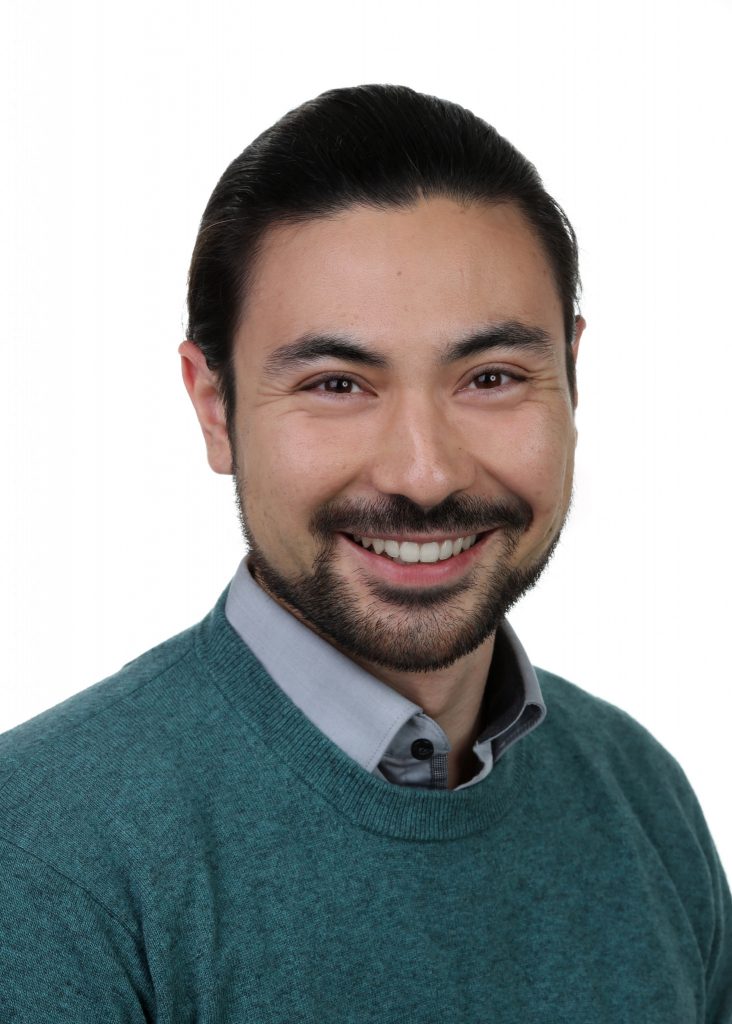
David Muramatsu (Alumnus)
| Class of 2017
Country of origin: Germany
MSc: Physics, LMU Munich, Germany
PI: Erwin Frey, Faculty of Physics, LMU Munich
 Mariam Museridze (Alumna)
Mariam Museridze (Alumna)
Mariam Museridze (Alumna)
| Class of 2020
Country of origin: Georgia
MSc: Biology, LMU Munich, Germany
Nicolas Gompel
2020
Xin, Y., Poul, Y. Le, Ling, L., Museridze, M., Mühling, B., Jaenichen, R., Osipova, E., and Gompel, N.: Enhancer evolutionary co-option through shared chromatin accessibility input, Proc. Natl. Acad. Sci. 117, 20636–20644 (2020).
View publicationPoul, Y. Le, Xin, Y., Ling, L., Mühling, B., Jaenichen, R., Hörl, D., Bunk, D., Harz, H., Leonhardt, H., Wang, Y., et al., & Museridze M, Gompel, N: Regulatory encoding of quantitative variation in spatial activity of a Drosophila enhancer. Sci. Adv. 6, eabe2955 (2020).
View publication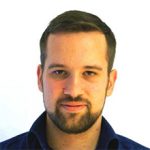 Dennis Nagl (Alumnus)
Dennis Nagl (Alumnus)
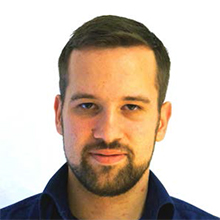
Dennis Nagl (Alumnus)
| Class of 2017
Country of origin: Germany
MSc: Biochemistry, University of Regensburg, Germany
PI: Veit Hornung, Gene Center Munich, Dept. of Biochemistry, LMU
 Hadi Zadeh Nastaran
Hadi Zadeh Nastaran
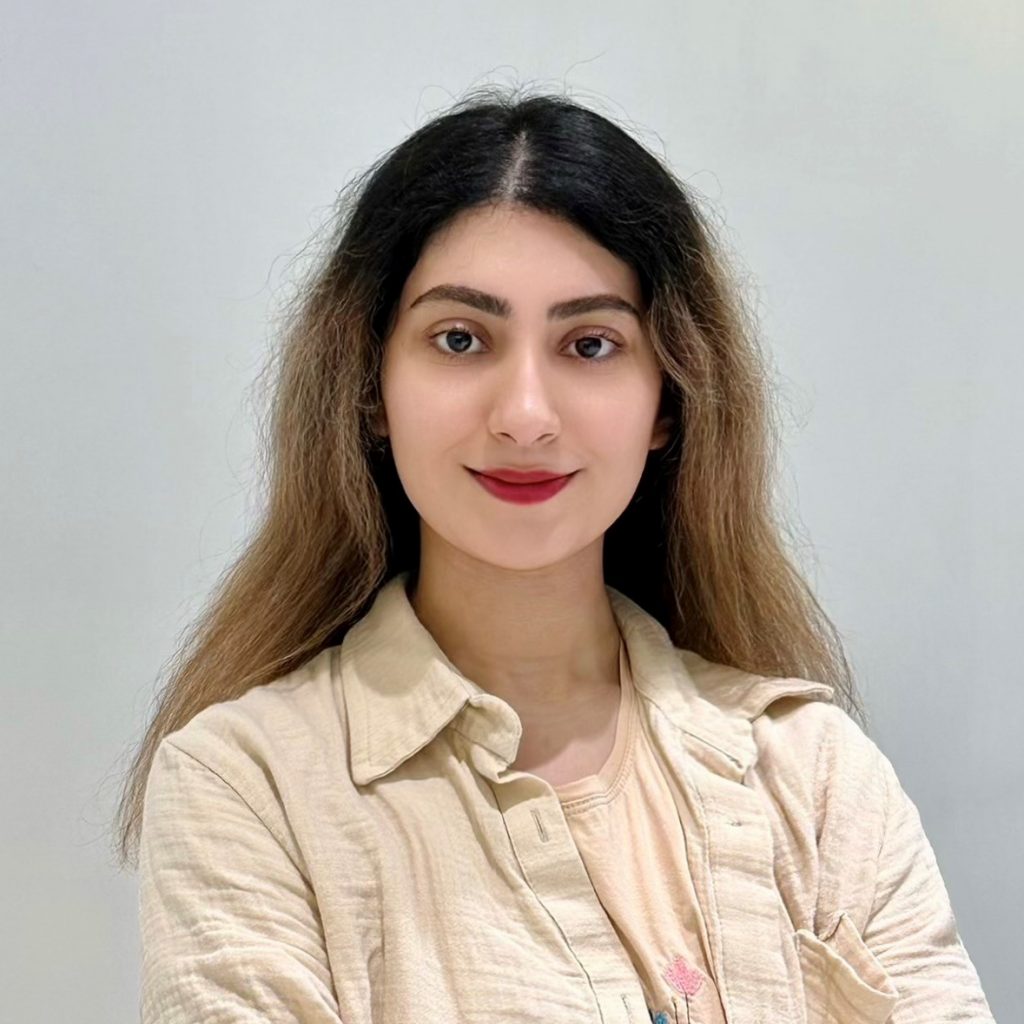
Hadi Zadeh Nastaran
| Class of 2025
Country of origin: Iran
years of BSc and 2 years of MSc,, Tehran University of Medical Sciences, Iran
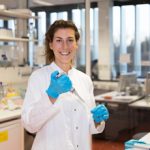 Vanessa Niebauer (Alumna)
Vanessa Niebauer (Alumna)
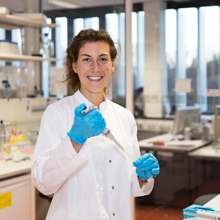
Vanessa Niebauer (Alumna)
| Class of 2016
Country of origin: Germany
MSc: Biochemistry, University of Regensburg, Germany
PI: Karl-Peter Hopfner, Gene Center Munich, Dept. of Biochemistry, LMU
2018
Knoll KR, Eustermann S, Niebauer V, Oberbeckmann E, Stoehr G, Schall K, Tosi A, Schwarz M, Buchfellner A, Korber P, Hopfner KP; The nuclear actin-containing Arp8 module is a linker DNA sensor driving INO80 chromatin remodeling. Nat Struct Mol Biol. 2018 Sep;25(9):823-832. doi: 10.1038/s41594-018-0115-8. Epub 2018 Sep 3. PMID: 30177756.
View publication Subarna Palit (Alumna)
Subarna Palit (Alumna)
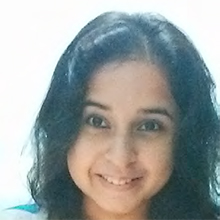
Subarna Palit (Alumna)
| Class of 2017
Country of origin: India
MSc: Life Science Informatics, Rheinische Friedrich-Wilhelms-University, Bonn, Germany
PI: Fabian Theis, Helmholtz Center Munich, TU Munich
2020
E. L. Kozak, S. Palit, J. R. Miranda-Rodríguez, A. Janjic, A. Böttcher, H. Lickert, W. Enard, F. J. Theis, H. López-Schier, Epithelial Planar Bipolarity Emerges from Notch-Mediated Asymmetric Inhibition of Emx2, CellPress, Volume 30, Issue 6, 23 March 2020, Pages 1142-1151.e6, https://doi.org/10.1016/j.cub.2020.01.027
View publication2019
S. Palit, Ch. Heuser, G. P. de Almeida, F. J. Theis and Ch. E. Zielinski, Meeting the Challenges of High-Dimensional Single-Cell Data Analysis in Immunology, Front. Immunol., 03 July 2019, https://doi.org/10.3389/fimmu.2019.01515
View publicationF. A. Vieira Braga, G. Kar, M. Berg, O. A. Carpaij, K. Polanski, L. M. Simon, S. Brouwer, T. Gomes, L. Hesse, J. Jiang, E. S. Fasouli, M. Efremova, R. Vento-Tormo, C. Talavera-López, M. R. Jonker, K. Affleck, S. Palit, P. M. Strzelecka, H. V. Firth, K. T. Mahbubani, A. Cvejic, K. B. Meyer, K. Saeb-Parsy, M. Luinge, C.-A. Brandsma, W. Timens, I. Angelidis, M. Strunz, G. H. Koppelman, A. J. van Oosterhout, H. B. Schiller, F. J. Theis, M. van den Berge, M. C. Nawijn & S. A. Teichmann, A cellular census of human lungs identifies novel cell states in health and in asthma, Nature Medicine volume 25, pages1153–1163(2019)
View publication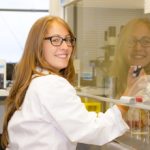 Laia Pascual Ponce (Alumna)
Laia Pascual Ponce (Alumna)
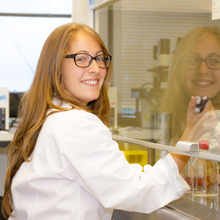
Laia Pascual Ponce (Alumna)
| Class of 2014
Country of origin: Spain
MSc: Advanced Immunology, University of Barcelona, Spain
PI: Karl-Peter Hopfner, Gene Center Munich, Dept. of Biochemistry, LMU
CoPI: Christoph Klein, Medical Faculty, LMU Munich
Project: Monoclonal antibody derivative for targeting cancer cells
Over the past decades, monoclonal antibodies have become an attractive type of antitumor immunotherapy and several strategies have been developed to exploit their entire potential. In my project, we engineer novel bispecific antibody derivatives as an improved approach for cancer therapy. These new molecules will be designed, produced, characterized and tested in vitro using tumor cell lines and quantitative methods.
2017
Ponce, L.P., Fenn, N.C., Moritz, N., Krupka, C., Kozik, J.H., Lauber, K., Subklewe, M., and Hopfner, K.P. (2017). SIRPalpha-antibody fusion proteins stimulate phagocytosis and promote elimination of acute myeloid leukemia cells. Oncotarget 8, 11284-11301.
View publication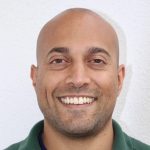 Akshay Patel (external)
Akshay Patel (external)

Akshay Patel (external)
| Class of 2021
Country of origin: USA
PI: Stefan Canzar, Gene Center, Dept. of Biochemistry, LMU
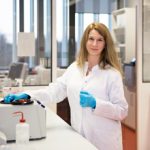 Mia Potocnjak (Alumna)
Mia Potocnjak (Alumna)

Mia Potocnjak (Alumna)
| Class of 2016
Country of origin: Croatia
MSc: Biotechnology in Medicine, University of Rijeka, Croatia
PI: Franz Herzog, Gene Center Munich, Dept. of Biochemistry, LMU
2021
Kratzat H, Mackens-Kiani T, Ameismeier M, Potocnjak M, Cheng J, Dacheux E, Namane A, Berninghausen O, Herzog F, Fromont-Racine M, Becker T, Beckmann R: A structural inventory of native ribosomal ABCE1-43S pre-initiation complexes; EMBO J. 2021 Jan 4;40(1):e105179. doi: 10.15252/embj.2020105179. Epub 2020 Dec 8. PMID: 33289941; PMCID: PMC7780240.
View publication2020
Ghodgaonkar-Steger M, Potocnjak M, Zimniak T, Fischböck-Halwachs J, Solis-Mezarino V, Singh S, Speljko T, Hagemann G, Drexler DJ, Witte G, Herzog F; C-Terminal Motifs of the MTW1 Complex Cooperatively Stabilize Outer Kinetochore Assembly in Budding Yeast. Cell Reports. 2020; 32, 108190.
View publication2019
Fischböck-Halwachs J., Singh S., Potocnjak M., Hagemann G., Solis-Mezarino V., Woike S., Ghodgaonkar-Steger M., Weissmann F., Gallego LD., Rojas J., Andreani J., Köhler A., Herzog F., The COMA complex interacts with Cse4 and positions Sli15/Ipl1 at the budding yeast inner kinetochore.; Elife. 2019 May 21;8. pii: e42879. doi: 10.7554/eLife.42879.
View publicationIvic N., Potocnjak M., Solis-Mezarino V., Herzog F., Bilokapic S., Halic M.; Fuzzy Interactions Form and Shape the Histone Transport Complex.; Mol Cell. 2019 Mar 21;73(6):1191-1203.e6. doi: 10.1016/j.molcel.2019.01.032. Epub 2019 Feb 26.
View publication Chandhana Prakash
Chandhana Prakash
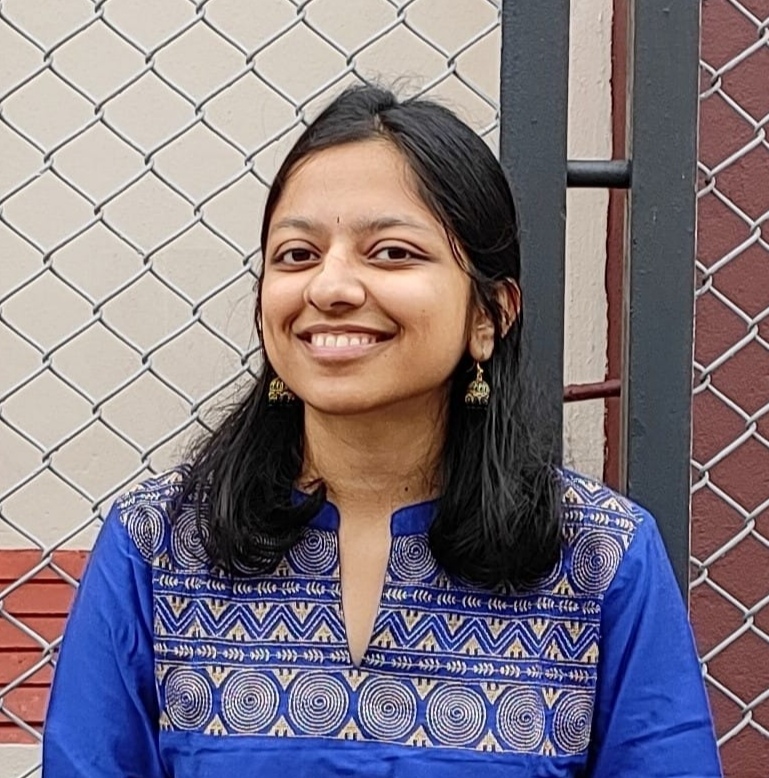
Chandhana Prakash
| Class of 2025
Country of origin: India
MSc: Biological Sciences, Indian Institute of Science Education and Research Thiruvananthapuram (IISER Thiruvananthapuram), India
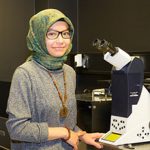 Khairunnadiya Prayitno (Alumna)
Khairunnadiya Prayitno (Alumna)
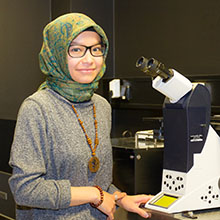
Khairunnadiya Prayitno (Alumna)
| Class of 2015
Country of origin: Canada
MSc: Molecular Medicine, University Medicine Göttingen, Germany
PI: Peter Becker, Medical Faculty, LMU Munich
Project: Comparative and Quantitative Analysis of roX1 and roX2 RNA in Dosage Compensation
2019
K. Prayitno, T. Schauer, C. Regnard, P. B. Becker; Progressive dosage compensation during Drosophila embryogenesis is reflected by gene arrangement, EMBO reports (2019)e48138; https://doi.org/10.15252/embr.201948138
View publication Michael Pries
Michael Pries
Michael Pries
| Class of 2023
Country of origin: Germany
MSc: Molecular and Cellular Biology, LMU Munich
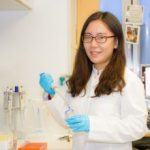 Zhan Qi (Alumna)
Zhan Qi (Alumna)
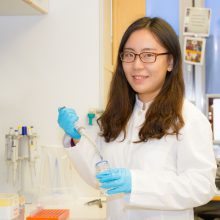
Zhan Qi (Alumna)
| Class of 2014
Country of origin: China
MSc: Biomedical Engineering, Southeast University Nanjing, China
PI: Ulrike Gaul, Gene Center Munich, Dept. of Biochemistry, LMU
CoPI: Julien Gagneur, Faculty of Informatics, TU Munich
Project: Functional Analysis of Drosophila Core Promoter Architecture Using Synthetic Promoters
The core promoter is a small region of around 150bp surrounding the transcription start site that fundamentally controls the level and plasticity of gene expression by differential recruitment of the basal transcription machinery and directing transcription initiation by RNA polymerase. Dissecting this complex DNA-protein interactions will further extend our understanding of transcriptional regulation. To evaluate the effects of intrinsic features of core promoters such as sequence motifs or nucleosome occupancy which were determined by functional genomics and bioinformatics, we developed a synthetic biological approach to achieve high-throughput structure-activity analysis by using a dual luciferase assay and a fully automated robotic pipeline.
 Diego Alejandro Ramirez Diaz (Alumnus)
Diego Alejandro Ramirez Diaz (Alumnus)
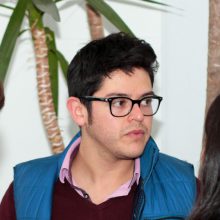
Diego Alejandro Ramirez Diaz (Alumnus)
| Class of 2013
Country of origin: Colombia
MSc: Physics, Universidad de los Andes Bogota, Colombia
PI: Petra Schwille, MPI of Biochemistry, Martinsried
CoPI: Dieter Braun, Faculty of Physics, LMU Munich
Project: Mechanical Measurements of Membrane Properties And Transformations
I am particularly working in FtsZ assembly. In bacteria, FtsZ forms circular polymers (rings) that drive cell division by making constriction in the center of the cell. Then, I am investigating how to trigger different polymer conformations in-vitro and how these conformations could suggest hints about the force generation mechanism.
2016
Ramirez, D., Garcia-Soriano, D.A., Raso, A., Feingold, M., Rivas, G., and Schwille, P. (2016). Chiral vortex dynamics on membranes is an intrinsic property of FtsZ, driven by GTP hydrolysis. bioRxiv.
View publication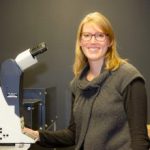 Beatrice Ramm (Alumna)
Beatrice Ramm (Alumna)
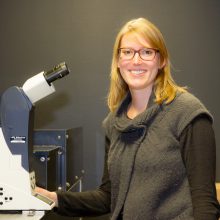
Beatrice Ramm (Alumna)
| Class of 2015
Country of origin: Germany
MSc: Biochemistry, TU Munich, Germany
PI: Petra Schwille, Max Planck Institute of Biochemistry, Martinsried
Project: Molecular studies of self-organizing proteins on model membranes
2020
Heermann T, Ramm B, Glaser S, Schwille P, Membrane-induced local self-enhancement of MinD membrane binding promotes Min protein pattern formation, J Mol Biol, 432(10):3191-3204
View publication2019
Ramm B, Heermann T, Schwille P (2019) The E. coli MinCDE system in the regulation of protein patterns and gradients, Cell Mol Life Sci
View publicationGlock P, Ramm B, Heermann T, Kretschmer S, Schweizer J, Mücksch J, Alagöz G, Schwille P (2019) Stationary patterns in a two-protein reaction-diffusion system, ACS Synth Biol 8(1):148-157
View publication2018
Ramm, B., Glock, P., Mücksch, J., Blumhardt, P., García-Soriano, D. A., Heymann, M., Schwille, P. (2018). The MinDE system is a generic spatial cue for membrane protein distribution in vitro. Nat Commun. doi: 10.1038/s41467-018-06310-1.
View publicationRamm, B., Glock, P., Schwille, P. (2018). In Vitro Reconstitution of Self-Organizing Protein Patterns on Supported Lipid Bilayers J. Vis. Exp. (137). e58139, doi:10.3791/58139
View publicationLitschel T, Ramm B, Maas R, Heymann M, Schwille P (2018) Beating vesicles: Encapsulated protein oscillations cause dynamic membrane deformation, Angew Chemie Int Ed 57(50):16286–16290
View publication2017
Miyagi, A., Ramm, B., Schwille, P., and Scheuring, S. (2017). High-speed AFM reveals the inner workings of the MinDE protein oscillator. Nano letters.
View publication2014
Ramm B, Stigler J, Hinczewski M, Thirumalai D, Herrmann H, Woehlke G, Rief M, 2014, Sequence-resolved free energy profiles of stress bearing vimentin intermediate filaments. Proc Natl Acad Sci USA, 111(31):11359–11364.
View publicationRamm B, Schwille P (2019) Crystal Ball: In vitro reconstitution of the bacterial cytoskeleton: Expected and unexpected new insights, Microb Biotechnol 12(1):74-76
View publication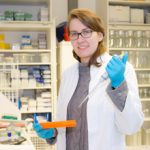 Anita Reiser (Alumna)
Anita Reiser (Alumna)
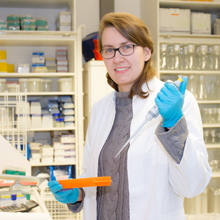
Anita Reiser (Alumna)
| Class of 2015
Country of origin: Germany
MSc: Integrated Life Sciences, Friedrich-Alexander University Erlangen-Nürnberg, Germany
PI: Joachim Rädler, Faculty of Physics, LMU Munich
Project: Quantitative mRNA Expression Studies using Single Cell Arrays
2019
Reiser, A., Woschee, D., Mehrotra, N., Krzyston, R., Strey, H.H., Rädler, O. (2019). Correlation of mRNA delivery timing and protein expression in lipid-based transfection. bioRxiv. doi: https://doi.org/10.1101/607986
View publicationKrzysztoń R, Woschée D, Reiser A, Schwake G, Strey HH, Rädler JO. Single-cell kinetics of siRNA-mediated mRNA degradation. Nanomedicine: Nanotechnology, Biology and Medicine. 2019;21:102077.
View publicationR. Krzysztoń, D. Woschée, A. Reiser, G. Schwake, H. H. Strey, J. O. Rädler; nano, 21, October 2019, 102077; Single-cell kinetics of siRNA-mediated mRNA degradation
View publication2018
Reiser, A., Zorn, M.L., Murschhauser, A., and Rädler, J.O. (2018). Single Cell Microarrays Fabricated by Microscale Plasma-Initiated Protein Patterning (μPIPP). In Cell-Based Microarrays (Springer), pp. 41-54.
View publicationFroehlich, F., Reiser, A., Fink, L., Woschee, D., Ligon, T., Theis, F., Raedler, J., and Hasenauer, J. (2018). Multi-Experiment Nonlinear Mixed Effect Modeling of Single-Cell Translation Kinetics after Transfection. bioRxiv.
View publicationFröhlich, F., Reiser, A., Fink, L., Woschee, D., Ligon, T., Theis, F.J., Rädler, J.O., Hasenauer, J. (2018). Multi-experiment nonlinear mixed effect modeling of single-cell translation kinetics after transfection. npj Systems Biology and applications 4, Article number: 42
View publication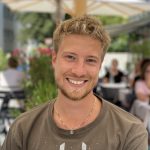 Andreas Riedlberger
Andreas Riedlberger
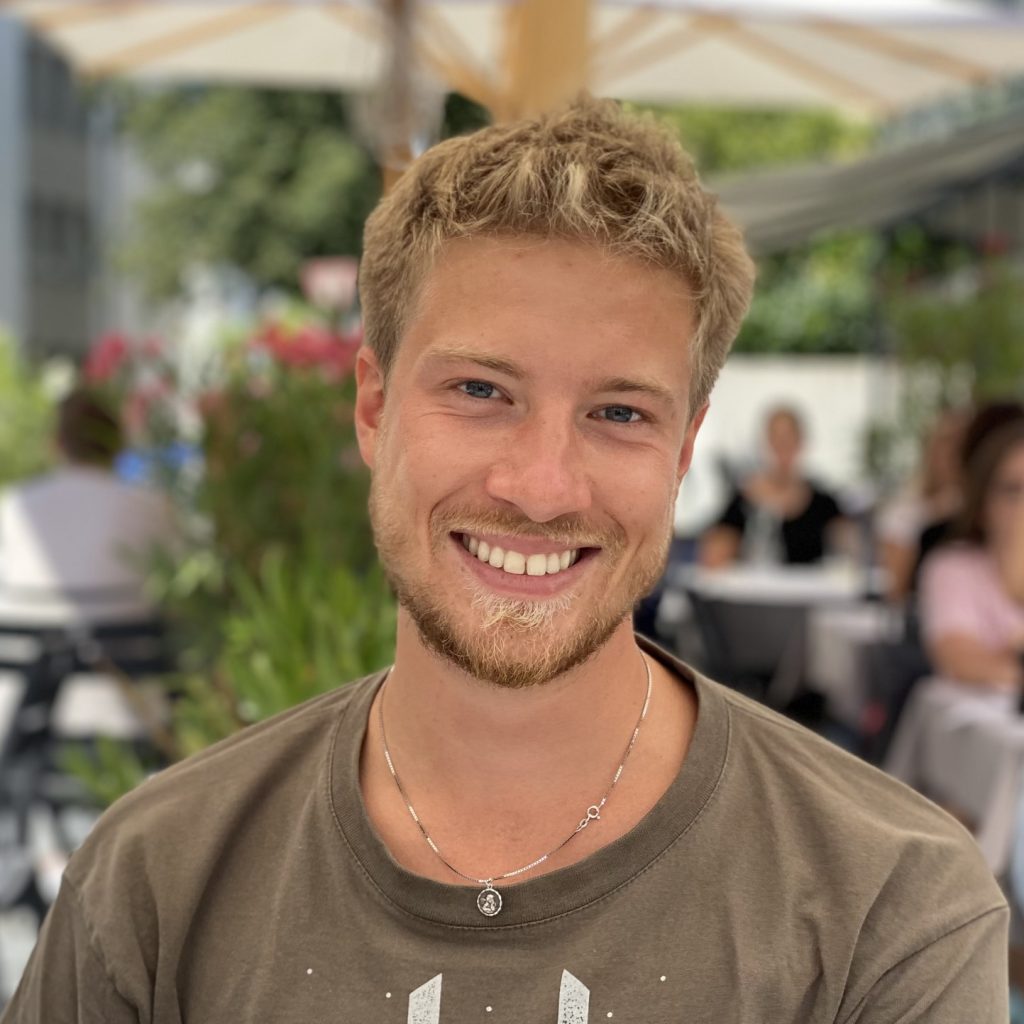
Andreas Riedlberger
| Class of 2025
Country of origin: Germany
MSc: Biology, University of Freiburg
 Cristian Rosales
Cristian Rosales
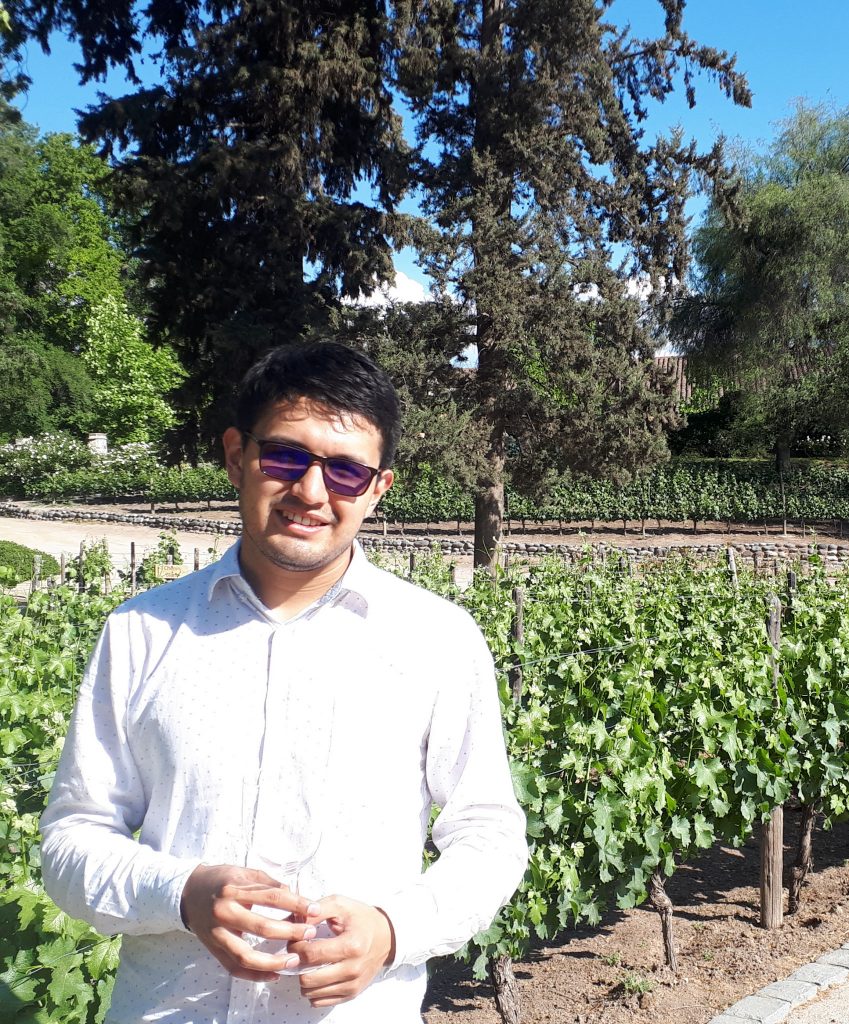
Cristian Rosales
| Class of 2021
Country of origin: Columbia
PI: Roland Beckmann, Gene Center, Dept. of Biochemistriy, LMU
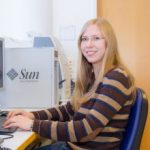 Maria Salfer (nee Kalemanov), Alumna
Maria Salfer (nee Kalemanov), Alumna
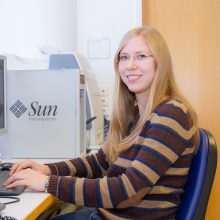
Maria Salfer (nee Kalemanov), Alumna
| Class of 2015
Country of origin: Israel
MSc: Bioinformatics, LMU and TU Munich, Germany
PI: Wolfgang Baumeister / Rubén Fernández-Busnadiego, Max Planck Institute of Biochemistry, Martinsried
Project: Quantitative computational methods for membranes in cryo-electron tomography
2020
M. Salfer, J. F. Collado, W. Baumeister, R. Fernández-Busnadiego, A. Martínez-Sánchez, Reliable estimation of membrane curvature for cryo-electron tomography, https://doi.org/10.1371/journal.pcbi.1007962
View publication2019
J Collado, M Kalemanov, F Campelo, C Bourgoint, F. Thomas, R Loewith, A Martínez-Sánchez, W Baumeister, Chr J Stefan, R Fernández-Busnadiego, Tricalbin-Mediated Contact Sites Control ER Curvature to Maintain Plasma Membrane Integrity, Developmental Cell, Vol 51, ISSUE 4, P476-487.e7, November 18, 2019
View publication2017
Bäuerlein, F.J.B., Saha, I., Mishra, A., Kalemanov, M., Martínez-Sánchez, A., Klein, R., Dudanova, I., Hipp, M.S., Hartl, F.U., Baumeister, W., Fernández-Busnadiego, R. (2017). In Situ Architecture and Cellular Interactions of PolyQ Inclusions. Cell 171, 179-187 e110.
View publication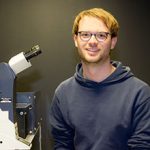 Kevin Schall (Alumnus)
Kevin Schall (Alumnus)
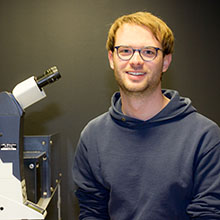
Kevin Schall (Alumnus)
| Class of 2015
Country of origin: Germany
MSc: Biochemistry, University of Regensburg, Germany
PI: Karl-Peter Hopfner, Gene Center Munich, Dept. of Biochemistry, LMU
Project: Structural and mechanistic studies of chromatin remodeling
2018
Schwarz, M., Schall, K., Kallis, E., Eustermann, S., Guariento, M., Moldt, M., Hopfner, K.P., and Michaelis, J. (2018). Single-molecule nucleosome remodeling by INO80 and effects of histone tails. FEBS letters.
View publicationEustermann, S., Schall, K., Kostrewa, D., Lakomek, K., Strauss, M., Moldt, M., and Hopfner, K.P. (2018). Structural basis for ATP-dependent chromatin remodelling by the INO80 complex. Nature.
View publicationKnoll KR, Eustermann S, Niebauer V, Oberbeckmann E, Stoehr G, Schall K, Tosi A, Schwarz M, Buchfellner A, Korber P, Hopfner KP; The nuclear actin-containing Arp8 module is a linker DNA sensor driving INO80 chromatin remodeling. Nat Struct Mol Biol. 2018 Sep;25(9):823-832. doi: 10.1038/s41594-018-0115-8. Epub 2018 Sep 3. PMID: 30177756.
View publication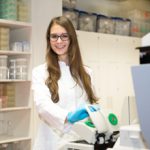 Madlin Schenk (Alumna)
Madlin Schenk (Alumna)
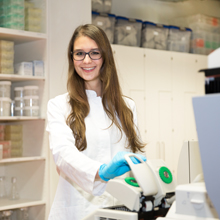
Madlin Schenk (Alumna)
| Class of 2014
Country of origin: Germany
MSc: Biology, LMU Munich, Germany
PI: Christoph Klein, Medical Faculty, LMU
Project: Mechanisms of Immune Tolerance in the Human Gut
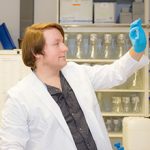 Thomas Schlichthärle (Alumnus)
Thomas Schlichthärle (Alumnus)
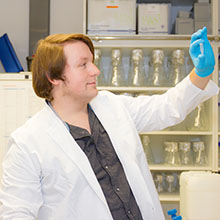
Thomas Schlichthärle (Alumnus)
| Class of 2015
Country of origin: Germany
MSc: Molecular Bioengineering, TU Dresden, Germany
PI: Ralf Jungmann, Max Planck Institute of Biochemistry, Martinsried
Project: Novel quantitative super resolution microscopy methods for multi protein complexes in cells
2021
Fischer L S, Klingner C, Schlichthaerle T, Strauss M T, Böttcher R, Fässler R, Jungmann R, Grashoff C; Nature Communications (2021); Quantitative single-protein imaging reveals molecular complex formation of integrin, talin, and kindlin during cell adhesion.
View publicationHellmeier J, Platzer R, Eklund A S, Schlichthaerle T, Karner A, Motsch V, Schneider M C, Kurz E, Bamieh V, Brameshuber M, Preiner J, Jungmann R, Stockinger H, Schutz GJ, Huppa JB, Sevcsik E: Proc Natl Acad Sci U S A 118(4): e2016857118; (2021) DNA origami demonstrate the unique stimulatory power of single pMHCs as T cell antigens.
View publication2020
Curd A P, Leng J, Hughes R E, Cleasby A J, Rogers B, Trinh C H, Baird M A, Takagi Y, Tiede C, Sieben C, Manley S, Schlichthaerle T, Jungmann R, Ries J, Shroff H, Peckham M; Nano Letters, in press (2020); Nanoscale Pattern Extraction from Relative Positions of Sparse 3D Localizations.
View publicationSograte-Idrissi S, Schlichthaerle T, Duque-Afonso C J, Alevra M, Strauss S, Moser T, Jungmann R, Rizzoli SO, Opazo F; Nanoscale 12: 10226-10239 (2020); Circumvention of common labelling artefacts using secondary nanobodies.
View publication2019
Schlichthaerle T, Strauss MT, Schueder F, Auer A, Nijmeijer B, Kueblbeck M, Jimenez Sabinina V, Thevathasan JV, Ries J, Ellenberg J, Jungmann R; Angew Chem Int Ed Engl 58: 13004-13008 (2019); Direct Visualization of Single Nuclear Pore Complex Proteins Using Genetically-Encoded Probes for DNA-PAINT.
View publicationGotzke H, Kilisch M, Martinez-Carranza M, Sograte-Idrissi S, Rajavel A, Schlichthaerle T, Engels N, Jungmann R, Stenmark P, Opazo F, Frey S; Nat Commun 10: 4403 (2019); The ALFA-tag is a highly versatile tool for nanobody-based bioscience applications.
View publicationBoger C, Hafner A S, Schlichtharle T, Strauss M T, Malkusch S, Endesfelder U, Jungmann R, Schuman E M, Heilemann M; Neurophotonics 6: 035008 (2019); Super-resolution imaging and estimation of protein copy numbers at single synapses with DNA-point accumulation for imaging in nanoscale topography.
View publicationFrottin F, Schueder F, Tiwary S, Gupta R, Korner R, Schlichthaerle T, Cox J, Jungmann R, Hartl F U, Hipp MS; Science 365: 342-347 (2019) The nucleolus functions as a phase-separated protein quality control compartment.
View publicationCamargo Ortega G, Falk S, Johansson PA, Peyre E, Broix L, Sahu SK, Hirst W, Schlichthaerle T, …, Jungmann R, Bradke F, Borrell V, Geerlof A, Reber S, Tiwari VK, Huttner WB, Wilsch-Brauninger M, Nguyen L, Gotz M; Nature 567: 113-117 (2019); The centrosome protein AKNA regulates neurogenesis via microtubule organization.
Comment: GCO, SF and PAJ contributed equally to this work
2018
Schlichthaerle T, Ganji M, Auer A, Wade O K, Jungmann R; Chembiochem (2018); Bacterial-derived antibody binders as small adapters for DNA-PAINT microscopy.
View publicationBasnet N, Nedozralova H, Crevenna AH, Bodakuntla S, Schlichthaerle T, Taschner M, Cardone G, Janke C, Jungmann R, Magiera MM, Biertumpfel C, Mizuno N; Nat Cell Biol 20: 1172-1180 (2018); Direct induction of microtubule branching by microtubule nucleation factor SSNA1.
View publicationAuer A, Schlichthaerle T, Woehrstein J B, Schueder F, Strauss M T, Grabmayr H, Jungmann R; Chemphyschem 19: 3024-3034 (2018); Nanometer-scale Multiplexed Super-Resolution Imaging with an Economic 3D-DNA-PAINT Microscope.
View publicationSchlichthaerle T, Eklund A S, Schueder F, Strauss M T, Tiede C, Curd A, Ries J, Peckham M, Tomlinson D C, Jungmann R; Angew Chem Int Ed Engl 57: 11060-11063 (2018); Site-Specific Labeling of Affimers for DNA-PAINT Microscopy.
View publication2017
Schueder, F., Strauss, M.T., Hoerl, D., Schnitzbauer, J., Schlichthaerle, T., Strauss, S., Yin, P., Harz, H., Leonhardt, H., and Jungmann, R. (2017). Universelles Superauflösungs-Multiplexing durch DNA-Austausch. Angewandte Chemie 129, 4111-4114.
View publicationSchnitzbauer, J., Strauss, M.T., Schlichthaerle, T., Schueder, F., and Jungmann, R. (2017). Super-resolution microscopy with DNA-PAINT. Nature protocols 12, 1198-1228.
View publicationAuer A, Strauss M T, Schlichthaerle T, Jungmann R ; Nano Lett 17: 6428-6434 (2017); Fast, Background-Free DNA-PAINT Imaging Using FRET-Based Probes.
View publicationSchueder F, Strauss M T, Hoerl D, Schnitzbauer J, Schlichthaerle T, Strauss S, Yin P, Harz H, Leonhardt H, Jungmann R; Angew Chem Int Ed Engl 56: 4052-4055 (2017); Universal Super-Resolution Multiplexing by DNA Exchange.
View publication2016
Schlichthaerle T, Strauss M T, Schueder F, Woehrstein J B, Jungmann R; Curr Opin Biotechnol 39: 41-47 (2016); DNA nanotechnology and fluorescence applications.
View publication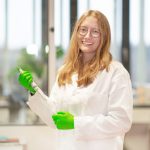 Dina Sophia Schnapka
Dina Sophia Schnapka
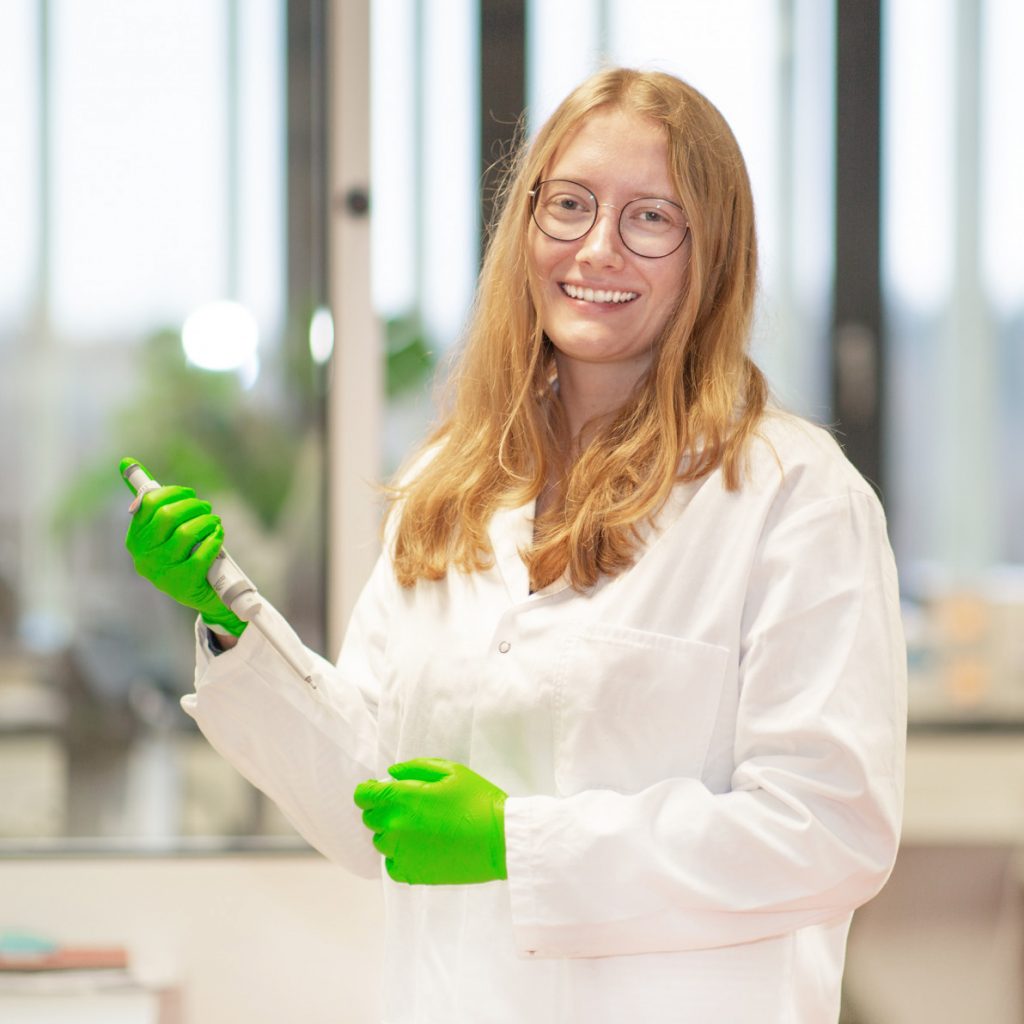
Dina Sophia Schnapka
| Class of 2025
Country of origin: Germany
MSc: Chemistry, LMU Munich, Germany
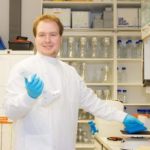 Max Schnepf (Alumnus)
Max Schnepf (Alumnus)
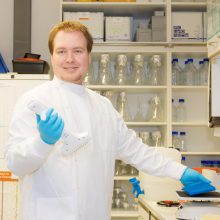
Max Schnepf (Alumnus)
| Class of 2015
Country of origin: Germany
MSc: Biochemistry, University of Tübingen, Germany
PI: Ulrike Gaul, Gene Center Munich, Dept. of Biochemistry, LMU
Project: Transcription factor binding specificity landscape determined by HiP-FA
2020
M. Schnepf, C. Ludwig, P. Bandilla, S. Ceolin, U. Unnerstall, C. Jung, U. Gaul; Science (2020); Sensitive Automated Measurement of Histone-DNA Affinities in Nucleosomes;
View publication2019
Jung C., Schnepf M., Bandilla P., Unnerstall U., Gaul U., High Sensitivity Measurement of Transcription Factor-DNA Binding Affinities by Competitive Titration Using Fluorescence Microscopy, J Vis Exp. 2019 Feb 7; (144). doi: 10.3791/58763.
View publicationJung C., Bandilla P., von Reutern M., Schnepf M., Rieder S., Unnerstall U., Gaul U., True equilibrium measurement of transcription factor-DNA binding affinities using automated polarization microscopy, Nat Commun. 2018 Apr 23;9(1):1605. doi: 10.1038/s41467-018-03977-4. Erratum in: Nat Commun. 2019 Feb 5;10(1):689
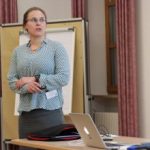 Marianne Schwarz (Alumna)
Marianne Schwarz (Alumna)
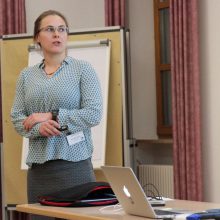
Marianne Schwarz (Alumna)
| Class of 2013
Country of origin: Germany
MSc: Biochemistry, LMU Munich, Germany
PI: Karl-Peter Hopfner, Gene Center Munich, Dept. of Biochemistry, LMU
CoPI: Roland Beckmann, Gene Center Munich, Dept. of Biochemistry, LMU
Project: Chromatin Remodelling
I am interested in chromatin remodeling. ATP-dependent chromatin remodelers are involved in balancing the trade-off between densely packed nucleosomes and accessible DNA in eukaryotes. However, their molecular function remains largely elusive. I study the mode of action of chromatin remodelers, using quantitative structure-function analyses that combine bulk and single-molecule methods.
2018
Schwarz, M., Schall, K., Kallis, E., Eustermann, S., Guariento, M., Moldt, M., Hopfner, K.P., and Michaelis, J. (2018). Single-molecule nucleosome remodeling by INO80 and effects of histone tails. FEBS letters.
View publication Sophia Schwojer
Sophia Schwojer
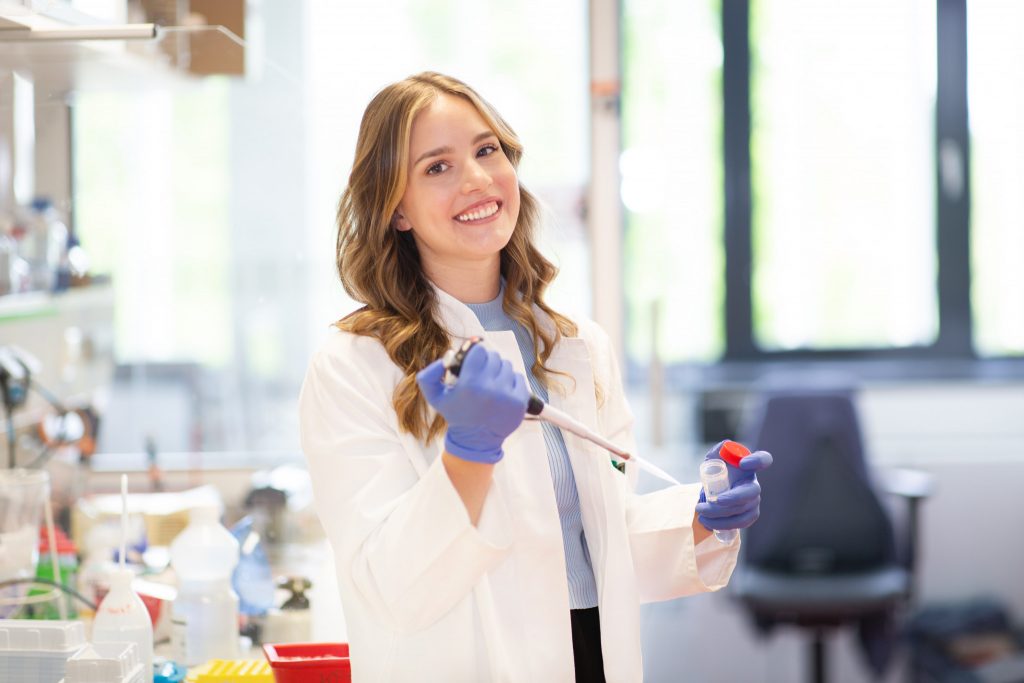
Sophia Schwojer
| Class of 2024
Country of origin: Germany
MSc: Biochemistry, LMU Munich
2022
Stafford CA, Gassauer AM, de Oliveira Mann CC, Tanzer MC, Fessler E, Wefers B, Nagl D, Kuut G, Sulek K, Vasilopoulou C, Schwojer SJ, Wiest A, Pfautsch MK, Wurst W, Yabal M, Fröhlich T, Mann M, Gisch N, Jae LT, Hornung V.
Nature. 2022 Aug 24. doi: 10.1038/s41586-022-05125-x.
 Vivekanandan Shanmuganathan (Alumnus)
Vivekanandan Shanmuganathan (Alumnus)
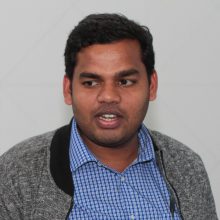
Vivekanandan Shanmuganathan (Alumnus)
| Class of 2013
Country of origin: India
MSc: Biochemistry, University of Southern California, Los Angeles, USA
PI: Roland Beckmann, Gene Center Munich, Dept. of Biochemistry, LMU
CoPI: Ralf Zimmer, Faculty of Mathematics, Informatics and Statistics, LMU
Project: Analysis of eukaryotic translation by ribosomal profiling and cryo-EM
Studies of gene expression regulation have focused mostly at the level of transcription, and for translational regulation many questions still remain to be addressed. We use a recently developed method called ribosome profiling to investigate translational regulation at a genome wide scale. My projects are to investigate translational regulation in maturing dendritic cells and to study translation related processes in yeast. During ER stress, XBP1 is cytoplasmically spliced at the ER membrane by IRE1a. Transient pausing of the ribosome by XBP1 nascent chain, allows its mRNA to be localized at the ER membrane for efficient splicing. The pausing is mediated by nascent chain interaction with the ribosome exit tunnel, and here I plan to use cryo-electron microscopy to structurally investigate this interaction.
2019
Shanmuganathan V., Schiller N., Magoulopoulou A., Cheng J., Braunger K., Cymer F., Berninghausen O., Beatrix B., Kohno K., Heijne GV., Beckmann R., Structural and mutational analysis of the ribosome-arresting human XBP1u, Elife. 2019 Jun 27; 8. pii: e46267. doi: 10.7554/eLife.46267.
View publicationWild K., Juaire KD., Soni K., Shanmuganathan V., Hendricks A., Segnitz B., Beckmann R., Sinning I.; Reconstitution of the human SRP system and quantitative and systematic analysis of its ribosome interactions; Nucleic Acids Res. 2019 Apr 8;47(6):3184-3196. doi: 10.1093/nar/gky1324.
View publication2016
Schmidt, C., Becker, T., Heuer, A., Braunger, K., Shanmuganathan, V., Pech, M., Berninghausen, O., Wilson, D.N., and Beckmann, R. (2016). Structure of the hypusinylated eukaryotic translation factor eIF-5A bound to the ribosome. Nucleic acids research 44, 1944-1951.
View publicationSchmidt, C., Kowalinski, E., Shanmuganathan, V., Defenouillere, Q., Braunger, K., Heuer, A., Pech, M., Namane, A., Berninghausen, O., Fromont-Racine, M., Jacquier, A., Conti, E., Becker, T., Beckmann, R. (2016). The cryo-EM structure of a ribosome-Ski2-Ski3-Ski8 helicase complex. Science 354, 1431-1433.
View publication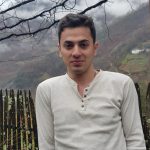 Bachuki Shashikadze (Alumnus)
Bachuki Shashikadze (Alumnus)
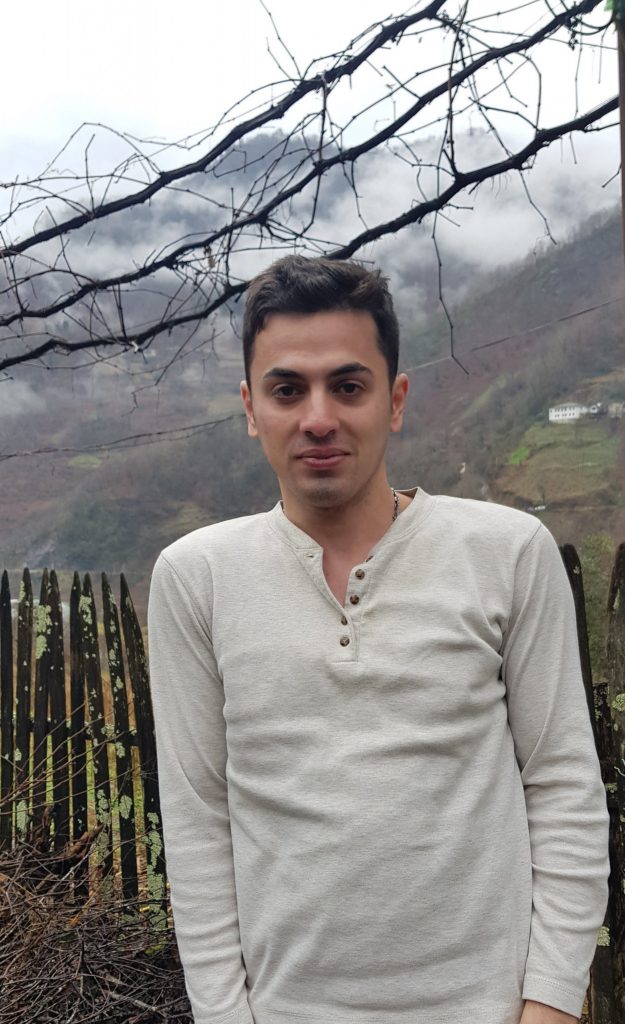
Bachuki Shashikadze (Alumnus)
| Class of 2021
Country of origin: Georgia
MSc Chemistry, Université Paris-Saclay, France
2022
Stirm, M., L. Fonteyne, B. Shashikadze, J. Stöckl, M. Kurome, B. Keßler, V. Zakhartchenko, E. Kemter, H. Blum, G. J. Arnold, K. Matiasek, R. Wanke, W. Wurst, H. Nagashima, F. Knieling, M. Walter, C. Kupatt, T. Fröhlich, N. Klymiuk and E. Wolf (2022). „Pig models for Duchenne muscular dystrophy – from disease mechanisms to validation of new diagnostic and therapeutic concepts.“ Neuromuscular Disorders. DOI:https://doi.org/10.1016/j.nmd.2022.04.005
View publication2021
Flenkenthaler, F., E. Ländström, B. Shashikadze, M. Backman, A. Blutke, J. Philippou-Massier, S. Renner, M. Hrabe de Angelis, R. Wanke, H. Blum, G. J. Arnold, E. Wolf and T. Fröhlich (2021): Differential Effects of Insulin-Deficient Diabetes Mellitus on Visceral vs. Subcutaneous Adipose Tissue-Multi-omics Insights From the Munich MIDY Pig Model, Frontiers in medicine 8: 751277-751277.
View publicationShashikadze, B., F. Flenkenthaler, J. Stöckl, L. Valla, S. Renner, E. Kemter, E. Wolf and T. Fröhlich (2021): „Developmental Effects of (Pre-)Gestational Diabetes on Offspring: Systematic Screening Using Omics Approaches.“ Genes 12: 1991.
View publicationStirm, M., L. M. Fonteyne, B. Shashikadze, M. Lindner, M. Chirivi, A. Lange, C. Kaufhold, C. Mayer, I. Medugorac, B. Kessler, M. Kurome, V. Zakhartchenko, A. Hinrichs, E. Kemter, S. Krause, R. Wanke, G. J. Arnold, G. Wess, H. Nagashima, M. Hrabĕ de Angelis, F. Flenkenthaler, L. A. Kobelke, C. Bearzi, R. Rizzi, A. Bähr, S. Reese, K. Matiasek, M. C. Walter, C. Kupatt, S. Ziegler, P. Bartenstein, T. Fröhlich, N. Klymiuk, A. Blutke and E. Wolf (2021). „A scalable, clinically severe pig model for Duchenne muscular dystrophy.“ Disease Models & Mechanisms 14(12).
View publication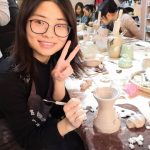 Niu Shuangshuang
Niu Shuangshuang
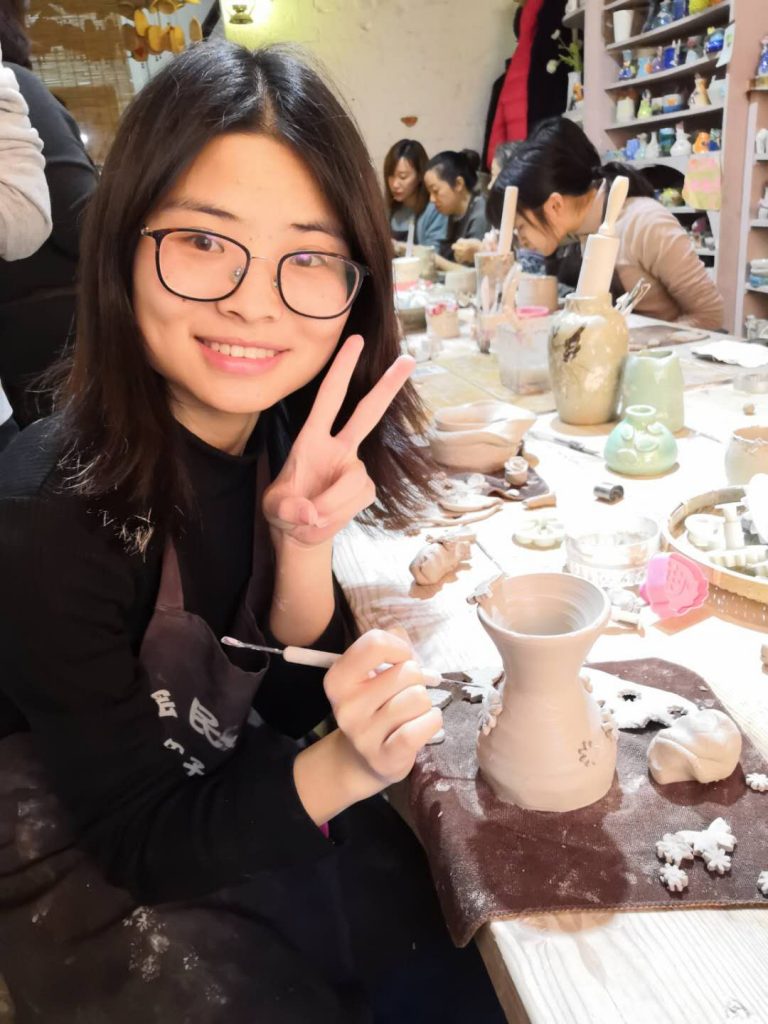
Niu Shuangshuang
| Class of 2019
Country of origin: China
MSc: Biochemistry and Molecular Biology, University of Chinese Academy of Sciences, China
Roland Beckmann, Biochemistry, LMU
 Victor Solis Mezarino (Alumnus)
Victor Solis Mezarino (Alumnus)
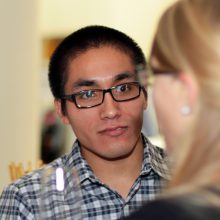
Victor Solis Mezarino (Alumnus)
| Class of 2013
Country of origin: Peru
MSc: Bioinformatics, University of Turku, Finland
PI: Franz Herzog, Gene Center Munich, Dept. of Biochemistry, LMU
Project: Study of protein-protein interactions by chemical cross-linking coupled with mass spectrometry and bioinformatics
To asses how high-resolution MS2 spectra, in CL-MS/MS experiments, affects the sensitivity and specificity of the identifications, we will acquire spectra from a cross-linked sample of highly pure RNA polymerase II subcomplexes in high-resolution mode. Additionally, we will develop bioinformatics tools for the deconvolution of the data, and use Xquest/Xprophet for evaluating the identifications. We aim to obtain lower error-rates at a similar or unchanged level of sensitivity relative to identifications with low-resolution data.
2020
Ghodgaonkar-Steger M, Potocnjak M, Zimniak T, Fischböck-Halwachs J, Solis-Mezarino V, Singh S, Speljko T, Hagemann G, Drexler DJ, Witte G, Herzog F; C-Terminal Motifs of the MTW1 Complex Cooperatively Stabilize Outer Kinetochore Assembly in Budding Yeast. Cell Reports. 2020; 32, 108190.
View publication2019
Fischböck-Halwachs J., Singh S., Potocnjak M., Hagemann G., Solis-Mezarino V., Woike S., Ghodgaonkar-Steger M., Weissmann F., Gallego LD., Rojas J., Andreani J., Köhler A., Herzog F., The COMA complex interacts with Cse4 and positions Sli15/Ipl1 at the budding yeast inner kinetochore.; Elife. 2019 May 21;8. pii: e42879. doi: 10.7554/eLife.42879.
View publicationIvic N., Potocnjak M., Solis-Mezarino V., Herzog F., Bilokapic S., Halic M.; Fuzzy Interactions Form and Shape the Histone Transport Complex.; Mol Cell. 2019 Mar 21;73(6):1191-1203.e6. doi: 10.1016/j.molcel.2019.01.032. Epub 2019 Feb 26.
View publication2017
Solis-Mezarino, V., and Herzog, F. (2017). compleXView: a server for the interpretation of protein abundance and connectivity information to identify protein complexes. Nucleic acids research.
View publication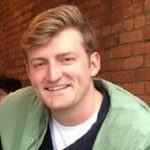 Johannes Stein (Alumnus)
Johannes Stein (Alumnus)
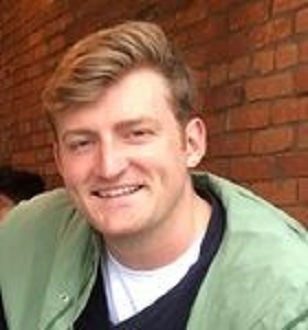
Johannes Stein (Alumnus)
| Class of 2017
Country of origin: Germany
MSc: Physics, University College London, UK
PI: Petra Schwille, Max Planck Institute of Biochemistry, Martinsried
2019
F. Stehr, J. Stein, F. Schueder, P. Schwille, R. Jungmann; Flat-top TIRF illumination boosts DNA-PAINT imaging and quantification, Nature Communications, (2019). 10: 1268
View publicationO. K. Wade, J. B. Woehrstein, P. C. Nickels, S. Strauss, F. Stehr, J. Stein, F. Schueder, M.T. Strauss, M. Ganji, J. Schnitzbauer, H. Grabmayr, P. Yin, P. Schwille, R. Jungmann; 124-color super-resolution imaging by engineering DNA-PAINT blinking kinetics; Nano Letters (2019). 19(4): 2641-2646
View publicationJ Stein, F Stehr, P Schueler, P Blumhardt, F Schueder, J Mücksch, R Jungmann, P Schwille, Toward Absolute Molecular Numbers in DNA-PAINT, Nano Lett.2019, September 19, 2019,
F Schueder, J Stein, F Stehr, A Auer, B Sperl, M T. Strauss, P Schwille & R Jungmann, An order of magnitude faster DNA-PAINT imaging by optimized sequence design and buffer conditions, Nature Methods, Oct 7th
View publication2018
P. Blumhardt, J. Stein, J. Mücksch, F. Stehr, J. Bauer, R. Jungmann, P. Schwille; Photo-Induced Depletion of Binding Sites in DNA-PAINT Microscopy; Molecules (2018); 23(12): 3165
View publication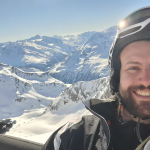 Robert Strasser
Robert Strasser
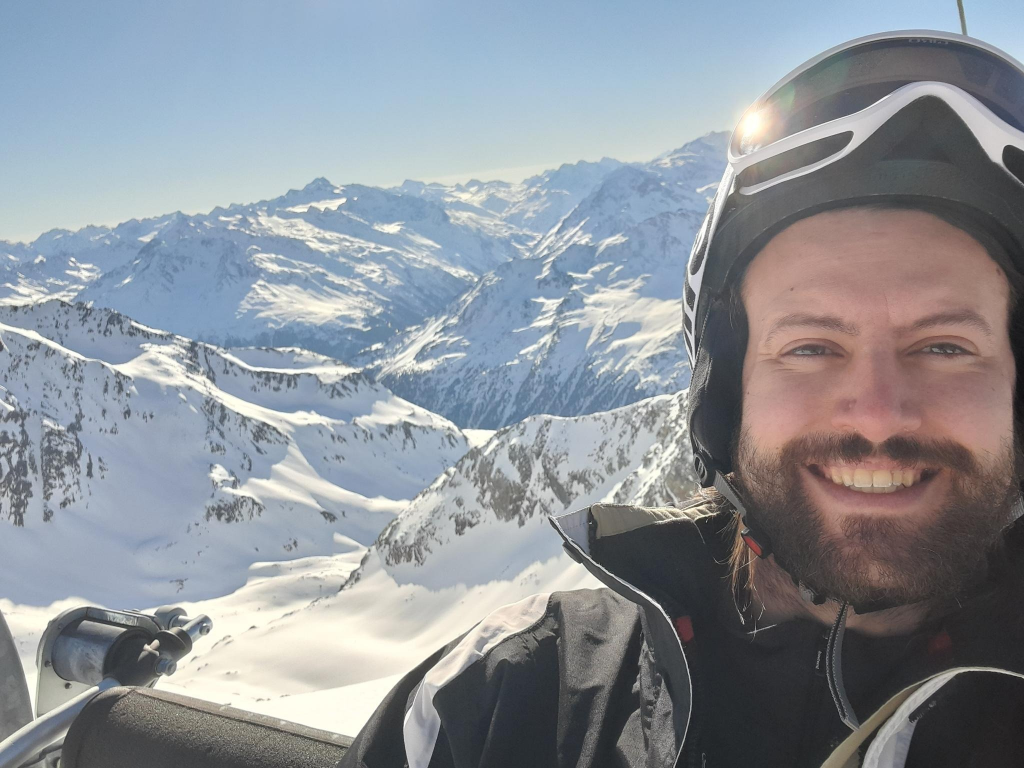
Robert Strasser
| Class of 2022
Country of origin: Germany
MSc: Biology, LMU Munich
PI: Johanna Klughammer, Gene Center, LMU
CoPI:
Project: Chemotherapeutic impact on the immune microenvironment in metastatic breast cancer:
In women, breast cancer is the most common type of cancer, having a global incidence of over two million in 2020. In a fifth of all breast cancer diagnoses, liver metastases occur, which, despite treatment with hormone- and/or chemotherapy, lead to a 5-year survival rate of only 27%. In collaboration with researcher at the Broad Institute we investigate the heterogenous cellular ecosystem of liver metastasis at the level of individual cells, using single-nucleus RNA sequencing (snRNA-seq), and additionally on a spatial level, using Multiplexed error-robust fluorescence in situ hybridization (MERFISH). We assess and compare molecular and compositional differences between metastasis of patients that have or have not been treated with chemotherapy to better understand how chemotherapy might impact the effectiveness of immunotherapy as a complementary line of therapy
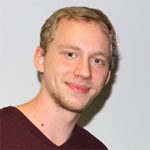 Sebastian Strauss (Alumnus)
Sebastian Strauss (Alumnus)

Sebastian Strauss (Alumnus)
| Class of 2017
Country of origin: Germany
MSc: Biochemistry, LMU Munich, Germany
PI: Ralf Jungmann, Max Planck Institute of Biochemistry, Martinsried
2020
A Auer, M T Strauss, S Strauss, R Jungmann; nanoTRON: a Picasso module for MLP-based classification of super-resolution data; btaa154, https://doi.org/10.1093/bioinformatics/btaa154
View publicationS. Strauss, R. Jungmann; Up to 100-fold speed-up and multiplexing in optimized DNA-PAINT; Nature Methods (2020); DOI: 10.1038/s41592-020-0869-x
View publicationM.I.E. Harwardt, M.S. Schröder, Y. Li, S. Malkusch, P. Freund, S. Gupta, N. Janjic, S. Strauss, R. Jungmann, M.S. Dietz, M. Heilemann; Single-Molecule Super-Resolution Microscopy Reveals Heteromeric Complexes of MET and EGFR upon Ligand Activation; International Journal of Molecular Sciences (2020); DOI: 10.3390/ijms21082803
View publicationSograte-Idrissi S, Schlichthaerle T, Duque-Afonso C J, Alevra M, Strauss S, Moser T, Jungmann R, Rizzoli SO, Opazo F; Nanoscale 12: 10226-10239 (2020); Circumvention of common labelling artefacts using secondary nanobodies.
View publication2019
O. K. Wade, J. B. Woehrstein, P. C. Nickels, S. Strauss, F. Stehr, J. Stein, F. Schueder, M.T. Strauss, M. Ganji, J. Schnitzbauer, H. Grabmayr, P. Yin, P. Schwille, R. Jungmann; 124-color super-resolution imaging by engineering DNA-PAINT blinking kinetics; Nano Letters (2019). 19(4): 2641-2646
View publication2018
S. Strauss, P.C. Nickels, M.T. Strauss, V.J. Sabinina, J. Ellenberg, J.D. Carter, S. Gupta, N. Janjic, R. Jungmann; Modified aptamers enable quantitative sub-10-nm cellular DNA-PAINT imaging; Nature Methods (2018).15: 1172-1180; DOI: 10.1038/s41592-018-0105-0
View publication2017
Schueder F, Strauss M T, Hoerl D, Schnitzbauer J, Schlichthaerle T, Strauss S, Yin P, Harz H, Leonhardt H, Jungmann R; Angew Chem Int Ed Engl 56: 4052-4055 (2017); Universal Super-Resolution Multiplexing by DNA Exchange.
View publication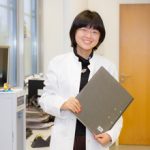 Ting Su (Alumna)
Ting Su (Alumna)
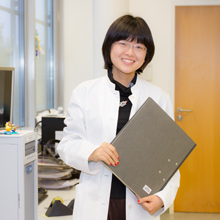
Ting Su (Alumna)
| Class of 2014
Country of origin: China
MSc: Agriculture in Aquaculture, Shanghai Ocean University, China
PI: Roland Beckmann, Gene Center Munich, Dept. of Biochemistry, LMU
Project: Structural analysis of nascent polypeptide chain-mediated ribosome stalling in bacteria
Ribosome stalling is an elegant regulatory mechanism exploited in translation. A class of nascent polypeptide chains can interact with the ribosomal exit tunnel and therefore stalling the active ribosome, which often results in regulation of target gene expression, and mRNA/polypeptide localization or maturation. E. coli Secretion Monitor, SecM, is a well-studied nascent polypeptide that monitors the gene expression of SecA (encoding ATPase) by stalling the ribosome on the SecM-SecA mRNA followed by changing the mRNA secondary structure. With the help of Cryo-Electron Microscopy (cryo-EM), we want to compare different variants of bacteria SecM, and get insight into the recognition sites of ribosomal tunnel and mechanisms of different ribosome stalling modes.
2019
T. Su, T. Izawa, M. Thoms, Y. Yamashita, J. Cheng, O. Berninghausen, F. U. Hartl, T. Inada, W. Neupert & R. Beckmann, Structure and function of Vms1 and Arb1 in RQC and mitochondrial proteome homeostasis, Nature, 570, 538–542 (2019)
View publication2018
Tian, P., Steward, A., Kudva, R., Su, T., Shilling, P.J., Nickson, A.A., Hollins, J.J., Beckmann, R., Von Heijne, G., Best, R., et al. (2018). The Folding Pathway of an Ig Domain is Conserved On and Off the Ribosome. bioRxiv.
View publication2017
Su, T., Cheng, J., Sohmen, D., Hedman, R., Berninghausen, O., von Heijne, G., Wilson, D.N., and Beckmann, R. (2017). The force-sensing peptide VemP employs extreme compaction and secondary structure formation to induce ribosomal stalling. eLife 6.
View publication Victoria Trinkaus (Alumna)
Victoria Trinkaus (Alumna)
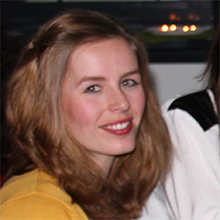
Victoria Trinkaus (Alumna)
| Class of 2017
Country of origin: Germany
MSc: Biochemistry, Ruhr-University, Bochum, Germany
PI: Ulrich Hartl, Max Planck Institute of Biochemistry, Martinsried
 Sophie Tritschler (Alumna)
Sophie Tritschler (Alumna)

Sophie Tritschler (Alumna)
| Class of 2016
Country of origin: Switzerland
MSc: Biology/Systems Biology, Swiss Federal Institute of Technology Zurich, Switzerland
PI: Fabian Theis, Helmholtz Center Munich, TU Munich
2019
S. Tritschler, M. Büttner, D. S. Fischer, M. Lange, V. Bergen, H. Lickert, F. J. Theis, Concepts and limitations for learning developmental trajectories from single cell genomics, Development 2019 146: dev170506
View publication2017
Tritschler, S., Theis, F.J., Lickert, H., and Böttcher, A. (2017). Systematic single-cell analysis provides new insights into heterogeneity and plasticity of the pancreas. Molecular metabolism 6, 974-990.
View publicationAngerer, P., Simon, L., Tritschler, S., Wolf, F.A., Fischer, D., and Theis, F.J. (2017). Single cells make big data: New challenges and opportunities in transcriptomics. Current Opinion in Systems Biology 4, 85-91.
View publication Taja Vatovec
Taja Vatovec
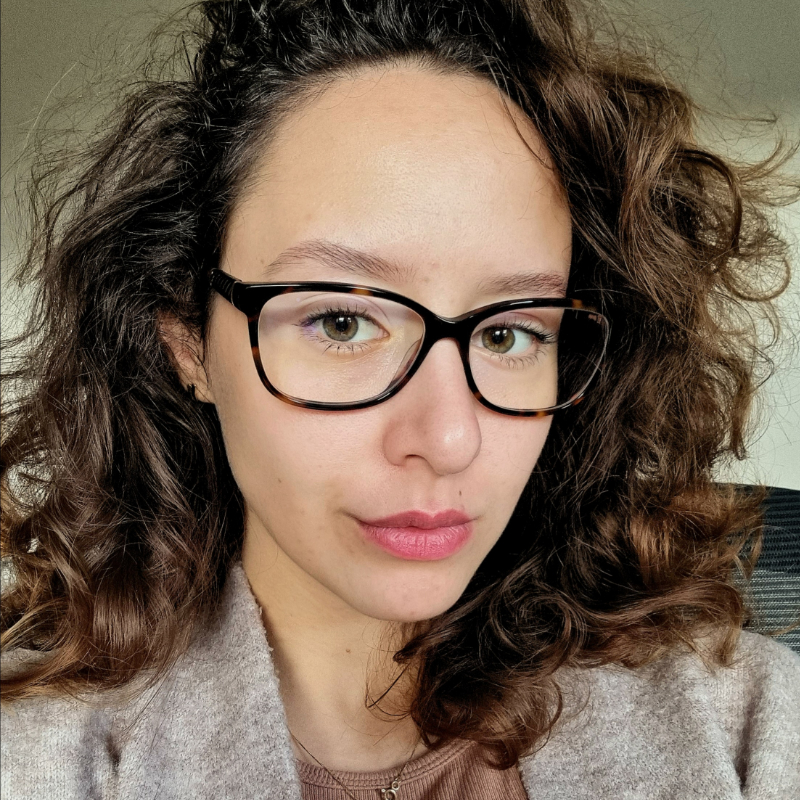
Taja Vatovec
| Class of 2025
Country of origin: Slovenia
MSc: Molecular Biosciences, University of Heidelberg, Germany
 Anuroop Venkateswaran Venkatasubramani (Alumnus)
Anuroop Venkateswaran Venkatasubramani (Alumnus)
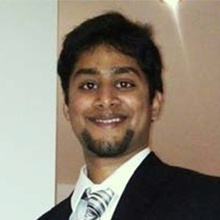
Anuroop Venkateswaran Venkatasubramani (Alumnus)
| Class of 2017
Country of origin: India
MSc: Genetics, University of Helsinki, Finland
PI: Axel Imhof, Medical Faculty, LMU Munich
2024
Rupam Choudhury, Anuroop Venkateswaran Venkatasubramani, Jie Hua, Marco Borsò, Celeste Franconi, Sarah Kinkley, Ignasi Forné, Axel Imhof (2024) The role of RNA in the maintenance of chromatin domains as revealed by antibody-mediated proximity labelling coupled to mass spectrometry
eLife 13:e95718
Kiss AE, Venkatasubramani AV, Pathirana D, Krause S, Sparr AC, Hasenauer J, Imhof A, Müller M, Becker PB. Processivity and specificity of histone acetylation by the male-specific lethal complex. Nucleic Acids Res. 2024 May 22;52(9):4889-4905.
View publication2023
Anuroop Venkateswaran Venkatasubramani, Toshiharu Ichinose, Mai Kanno, Ignasi Forne, Hiromu Tanimoto, Shahaf Peleg, Axel Imhof: The fruit fly acetyltransferase chameau promotes starvation resilience at the expense of longevity, EMBO Rep., 2023 Sep 19;e57023. doi: 10.15252/embr.202357023
View publicationTim Wartewig, Jay Daniels, Miriam Schulz, Erik Hameister, Abhinav Joshi, Joonhee Park, Emma Morrish, Anuroop V. Venkatasubramani, Filippo M. Cernilogar, Frits H. A. van Heijster, Christian Hundshammer, Heike Schneider, Filippos Konstantinidis, Judith V. Gabler, Christine Klement, Henry Kurniawan, Calvin Law, Yujin Lee, Sara Choi, Joan Guitart, Ignasi Forne, Jérôme Giustinani, Markus Müschen, Salvia Jain, David M. Weinstock, Roland Rad, Nicolas Ortonne, Franz Schilling, Gunnar Schotta, Axel Imhof, Dirk Brenner, Jaehyuk Choi & Jürgen Ruland: PD-1 instructs a tumor-suppressive metabolic program that restricts glycolysis and restrains AP-1 activity in T cell lymphoma, Nat Cancer (2023). https://doi.org/10.1038/s43018-023-00635-7
View publication2022
A Müller-Eigner, A Sanz-Moreno, I de-Diego, A Venkateswaran Venkatasubramani, M Langhammer, R Gerlini, B Rathkolb, A Aguilar-Pimentel, T Klein-Rodewald, J Calzada-Wack, L Becker, S Palma-Vera, B Gille, I Forne, A Imhof et al.: Dietary intervention improves health metrics and life expectancy of the geneticeally obese Titan mouse, Communications Biology, 5, 408 (2022)
View publication2021
A. Lukacs, A. W. Thomae, P. Krueger, T. Schauer, A. V. Venkatasubramani, N. Y. Kochanova, W. Aftab, R. Choudhury, I. Forne & A. Imhof: The Integrity of the HMR complex is necessary for centromeric binding and reproductive isolation in Drosophila, https://doi.org/10.1371/journal.pgen.1009744
View publication2019
L. J. Dietz, A. Venkateswaran Venkatasubramani, A. Müller-Eigner, M. Hrabe de Angelis, A. Imhof, L. Becker, S. Peleg; Measuring and Interpreting Oxygen Consumption Rates in Whole Fly Head Segments; doi: 10.3791/58601
View publicationMagdalini Serefidou, A V Venkatasubramani and A Imhof, The Impact of One Carbon Metabolism on Histone Methylation, Front. Genet., 28 August 2019, https://doi.org/10.3389/fgene.2019.00764
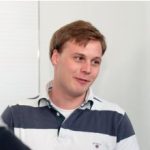 Benedikt von Bronk (Alumnus)
Benedikt von Bronk (Alumnus)
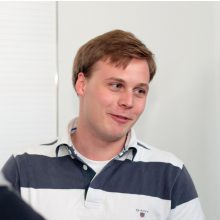
Benedikt von Bronk (Alumnus)
| Class of 2014
Country of origin: Germany
MSc: Physics, LMU Munich, Germany
PI: Joachim Rädler / Madeleine Opitz, Faculty of Physics, LMU
CoPI: Erwin Frey, Faculty of Physics, LMU
Project: High-Throughput Analysis of Bacterial Communities
In this study, we develop a high-throughput microscopic setup that enables investigation of bacterial communities from the single cell level (~µm) to macro colonies (~mm) in a parallelized fashion. Possible areas of application are the study of interactions between competing bacterial communities or phenotypic characterization of bacterial strains.
2018
von Bronk, B., Götz, A. and Opitz, M., (2018), Complex microbial systems across different levels of description, Physical Biology, 15, 5
View publicationB. von Bronk, A. Götz and M. Opitz; Locality of interactions in three-strain bacterial competition in E. coli; Physical Biology, Volume 16, Number 1
View publicationA. Stöcker, S. Brockhaus, S. Schaffer, B. von Bronk, M. Opitz, S. Greven; Boosting Functional Response Models for Location, Scale and Shape with an Application to Bacterial Competition; arXiv:1809.09881
View publication2017
von Bronk, B., Schaffer, S.A., Gotz, A., and Opitz, M. (2017). Effects of stochasticity and division of labor in toxin production on two-strain bacterial competition in Escherichia coli. PLoS biology 15, e2001457.
View publicationKesel, S., von Bronk, B., Falcon Garcia, C., Gotz, A., Lieleg, O., and Opitz, M. (2017). Matrix composition determines the dimensions of Bacillus subtilis NCIB 3610 biofilm colonies grown on LB agar. RSC Advances 7, 31886-31898.
View publication Marc von Reutern (Alumnus)
Marc von Reutern (Alumnus)

Marc von Reutern (Alumnus)
| Class of 2013
Country of origin: Germany
MSc: Physics, LMU Munich, Germany
PI: Ulrike Gaul, Gene Center Munich, Dept. of Biochemistry, LMU
CoPI: Johannes Söding, MPI for Biophysical Chemistry, Göttingen (formerly at Gene Center Munich)
Project: Thermodynamic Models of Transcription Regulation
The spatio-temporal control of gene expression lies at the heart of animal development, but the underlying regulatory code has yet to be deciphered. One promising approach is the thermodynamic model that predicts the expression patterns of regulatory elements such as enhancers as a function of their sequence and of the binding preferences and concentration of participating transcription factors. I seek to build and improve such a model for the segmentation network of Drosophila. I work in close collaboration with experimentalists to include new data like additional transcription factors, chromatin accessibility,and highly precise measurements of protein-DNA binding affinities. My goal is to reveal fundamental principles of gene regulation and improve our understanding of the segmentation gene network.
 Susann Vorberg (Alumna)
Susann Vorberg (Alumna)

Susann Vorberg (Alumna)
| Class of 2013
Country of origin: Germany
MSc: Bioinformatics, LMU and TU Munich, Germany
PI: Johannes Söding, MPI for Biophysical Chemistry, Göttingen (formerly at Gene Center Munich)
CoPI: Roland Beckmann, Gene Center Munich, Dept. of Biochemistry, LMU
Project: Inter-Residue Distance Estimation from Statistical Coupling Analysis for de-novo Protein Structure Prediction
State-of-the-art methods for protein contact prediction are able to reliably predict residues in physical contact in the native structure from correlated mutation signatures in multiple sequence alignments. Predicted residue contacts have already been successfully applied to model the three-dimensional structure of proteins. However, current methods require large numbers of homologous sequences to make reliable predictions and rely on several heuristics that are not well understood or discard evolutionary signal. By learning a comprehensive Bayesian model we aim to exploit the full potential of evolutionary information, eliminate the need for heuristics and expand the applicability of the method to protein families with fewer numbers of sequence homologs.
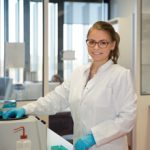 Orsolya Kimbu Wade (Alumna)
Orsolya Kimbu Wade (Alumna)
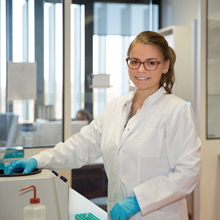
Orsolya Kimbu Wade (Alumna)
| Class of 2016
Country of origin: Hungary
MSc: Biology, LMU Munich, Germany
PI: Ralf Jungmann, Max Planck Institute of Biochemistry, Martinsried
2019
O. K. Wade, J. B. Woehrstein, P. C. Nickels, S. Strauss, F. Stehr, J. Stein, F. Schueder, M.T. Strauss, M. Ganji, J. Schnitzbauer, H. Grabmayr, P. Yin, P. Schwille, R. Jungmann; 124-color super-resolution imaging by engineering DNA-PAINT blinking kinetics; Nano Letters (2019). 19(4): 2641-2646
View publication2018
Schlichthaerle T, Ganji M, Auer A, Wade O K, Jungmann R; Chembiochem (2018); Bacterial-derived antibody binders as small adapters for DNA-PAINT microscopy.
View publication Jan Watter
Jan Watter
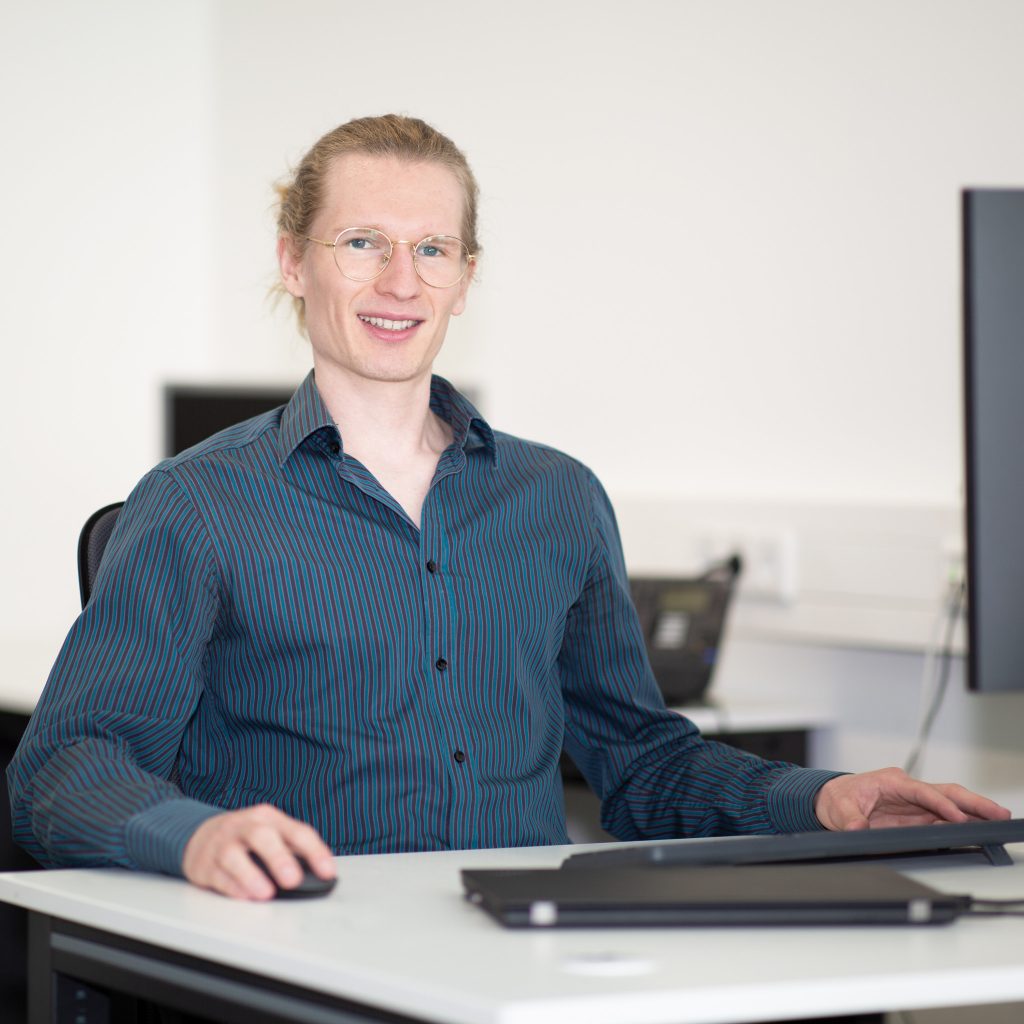
Jan Watter
| Class of 2022
Country of origin: Germany
M.Sc.: Computational Science and Engineering, TUM
PI: Johanna Klughammer, Gene Center, LMU
CoPI:
Project: Methods development for high-dimensional spatio-molecular data analysis
Single cell, spatial and omics methods provide high-dimensional molecular measurements of cellular ecosystems at unprecedented scale and resolution. A key challenge is the meaningful interpretation of these information-rich biological data, with the goal to improve our understanding of cellular communication, interaction, and collective behaviour on a molecular level.
This project builds on our python-based framework called TACCO (Transfer of Annotations to Cells and their COmbinations) to improve and extend its functionalities. Specifically, it tackles a particularly challenging problem which is to transfer information from the ever-increasing wealth of scRNAseq data to spatial proteomics data such as CODEX, overcoming technical as well as biological discrepancies between these different modalities.
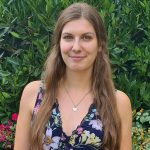 Melanie Weiss
Melanie Weiss

Melanie Weiss
| Class of 2024
Country of origin: Germany
MSc: Medical Biology, University of Duisburg Essen
 Lina Wendeler (Alumna)
Lina Wendeler (Alumna)
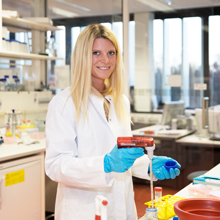
Lina Wendeler (Alumna)
| Class of 2016
Country of origin: Germany
MSc: Biochemistry, LMU Munich, Germany
PI: Christoph Klein, Medical Faculty, LMU Munich
 Manon Wigbers (Alumna)
Manon Wigbers (Alumna)
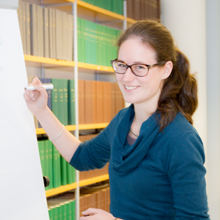
Manon Wigbers (Alumna)
| Class of 2015
Country of origin: Netherlands
MSc: Theoretical Physics, VU University Amsterdam, Netherlands
PI: Ulrich Gerland, Faculty of Physics, TU Munich
Project: Bistable systems in biology: How is cell polarity regulated in Myxocoxxus xanthus
2021
M C Wigbers, T H Tan, F Brauns, J Liu, S Z Swartz, E Frey & N Fakhri; Nature Physics (2021); A hierarchy of protein patterns robustly decodes cell shape information
View publication2020
M. C. Wigbers, F. Brauns, C. Y. Leung and E. Frey; Flow Induced Symmetry Breaking in a Conceptual Polarity Model, Cells 2020, 9(6), 1524;
View publication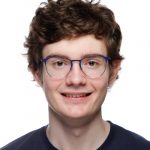 Jan Willeke
Jan Willeke
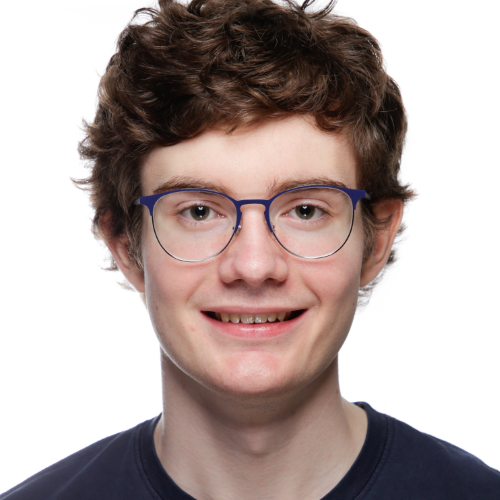
Jan Willeke
| Class of 2024
Country of origin: Germany
M.Sc. Physics, LMU Munich
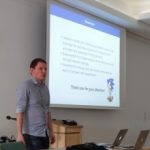 Michael Wolff (Alumnus)
Michael Wolff (Alumnus)
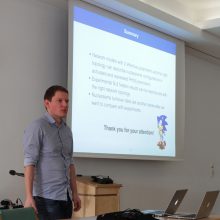
Michael Wolff (Alumnus)
| Class of 2014
Country of origin: Germany
MSc: Theoretical and Mathematical Physics, LMU Munich, Germany
PI: Ulrich Gerland, Faculty of Physics, TU Munich
Project: Design and Analysis of Coarse-Grained Interacting Particle Models For Chromatin and Transcription Regulation
To explore the action of remodeling mechanisms on nucleosome patterns, we are studying physical models for one-dimensional interacting particle systems under the influence of additional agents acting on the particles. What are the connections between the mechanics of remodelers and arising patterns within different models? And what does the current knowledge of nucleosome patterns under varying experimental conditions tell us about the underlying mechanisms?
2021
M R Wolff, A Schmid, P Korber, U Gerland; Effective dynamics of nucleosome configurations at the yeast PHO5 promoter; eLife 2021;10:e58394
View publication2019
E. Oberbeckmann, M. Wolff, N. Krietenstein, M. Heron, J. L. Ellins, A. Schmid, S. Krebs, H. Blum, U. Gerland and Ph. Korber, Absolute nucleosome occupancy map for the Saccharomyces cerevisiae genome, Genome Res. December 2019 29:
View publication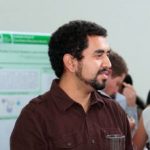 Vicente Yépez (Alumnus)
Vicente Yépez (Alumnus)
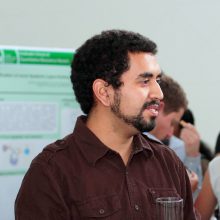
Vicente Yépez (Alumnus)
| Class of 2014
Country of origin: Ecuador
MSc: Mathematical Modeling, University of L'Aquila, Italy
PI: Julien Gagneur, Faculty of Informatics, Technical University Munich
Project: Development of Causal Inference Methods for Systems Genetics Methods
My research is on establishing systematic omics approach to understand the molecular basis of rare diseases. In my current project, I am integrating genotype, gene expression and cellular bioenergetics phenotypes to identify causal mutations and pathways for patient-derived cell lines with cellular respiratory defects.
2018
Yepez M, V.A., Kremer, L.S., Iuso, A., Gusic, M., Kopajtich, R., Konarikova, E., Nadel, A., Wachutka, L., Prokisch, H., and Gagneur, J. (2018). OCR-Stats: Robust estimation and statistical testing of mitochondrial respiration activities using Seahorse XF Analyzer. doi: https://doi.org/10.1101/231522
View publicationF. Brechtmann, A. Matuseviciute, Ch. Mertes, V. A. Yepez, Z. Avsec, M. Herzog, D. M. Bader, H. Prokisch, J. Gagneur, OUTRIDER: A statistical method for detecting aberrantly expressed genes in RNA sequencing data, AJHG, 2018, PMID: 30503520
View publication Gang (Jack) Yu
Gang (Jack) Yu
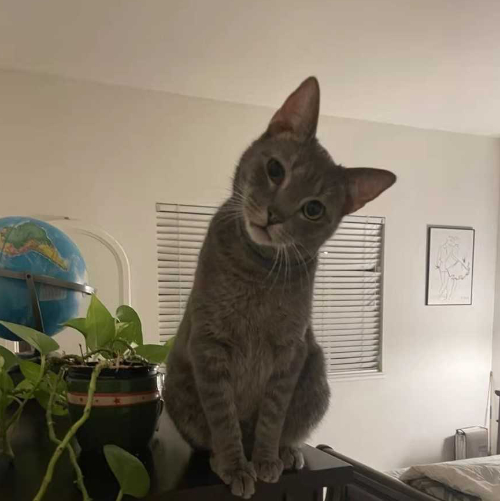
Gang (Jack) Yu
| Class of 2024
Country of origin: China
MS: Johns Hopkins University (Baltimore, Maryland, USA)
Project: Prediction of the translational effects of Single Nucleotide Polymorphisms (SNPs) using machine learning
2022
Nakamoto, M., Tao, J., & Yu, J. Ageas: Automated machine learning based genetic regulatory element extraction system. bioRxiv.2022
View publication Alexander Ziepke (Alumnus)
Alexander Ziepke (Alumnus)
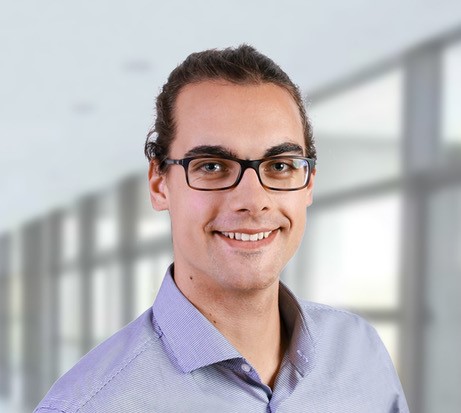
Alexander Ziepke (Alumnus)
| Class of 2019
Country of origin: Germany
MSc: Physics, Technische Universität Berlin, Germany
Erwin Frey, Physics, LMU

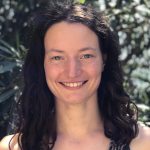 Agathe Jouneau
Agathe Jouneau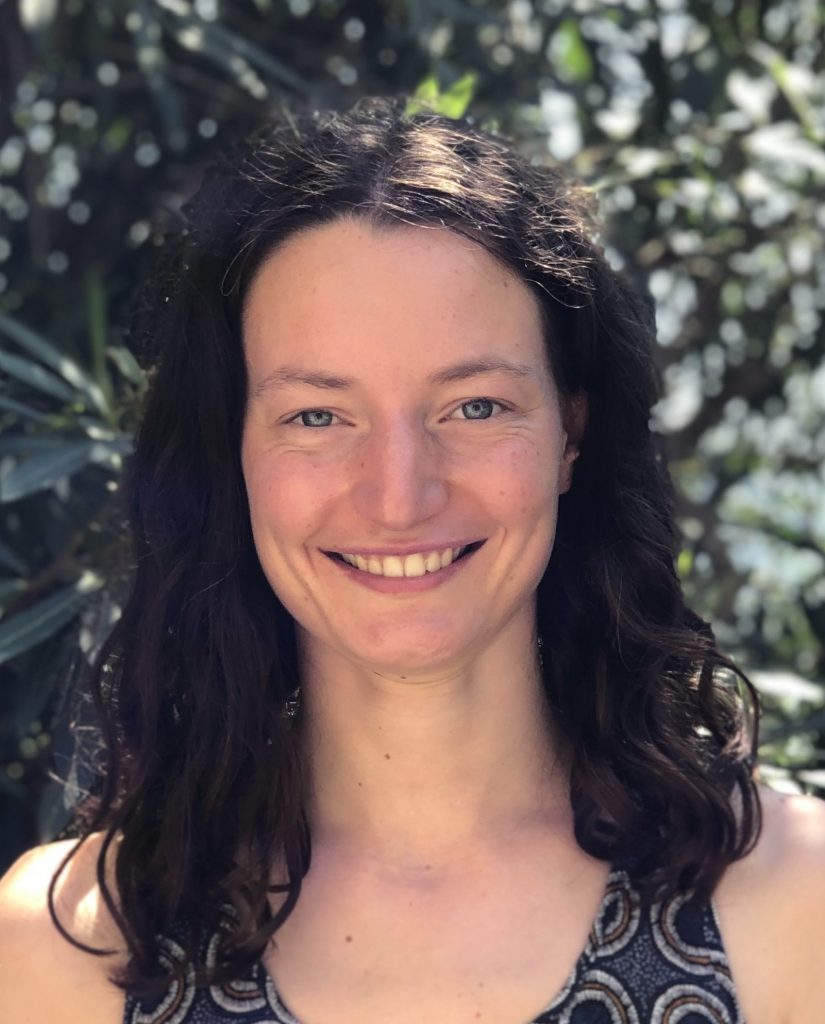
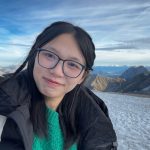 Shuhan Yang
Shuhan Yang
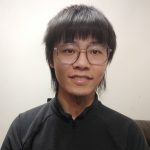 Xin Zhang
Xin Zhang